NEWS FLASH!
This just in from our friends in Guinea: thanks to donations from our community and a selfless boost of Guinea francs from Youssouf, work on the perimeter wall has finished! This is great news for Nimba as we struggle to keep our projects ongoing and productive on both sides of the Atlantic.
I can't express my excitement when I opened my email and found these photos from El Hadj and Palmate, our dancer/project managers on site at Bentouryah and Bagatai. To illustrate our progress, here's a before and after view:
before
after
And, feast your eyes on these gems:
So, all this to say that the little bits DO add up, and, brick by brick, we CAN make Nimba happen!
In other news, Nimba is having a fundraiser dance workshop and doundounba event Saturday, July 13th in Manhattan, so mark your calendars and stay tuned for more info. Wongai!
My apologies, devoted readers, I know it has been some time since we last met. Rest assured, your trusty blogger is back at her (slightly untidy) desk with plenty to say about Nimba and our most recent adventures in Guinea/the motherland/home. This week, we introduce you to Jen E., Jen C., and Cavetta, three dancers who made an amazing and very unique contribution to Nimba.
First off, our friends from Tuscon, Arizona, held a dance class to raise money from their local community to donate to Nimba. We think this is a FABULOUS idea that bears repeating! Everybody involved in such an endeavor wins: Nimba receives the dollars needed to build a Center for African dance in Guinea that generations can enjoy, and participants receive all the good feelings (not to mention the workout) from a dance class.
When we dance, especially with others, especially with live music, we engage in a process of transformation together, both at the individual and community level. We alter our body's natural rhythms as we breathe harder, as our hearts pump extra blood, as we sweat and stretch and pulsate, thereby transforming ourselves at the cellular level, which in turn translates to energy released outward through time and space. Especially when we do this with a shared intention, dance can become a powerful kind of physical prayer, and as we dance to help each other, so too can only good things come.
Anyway, via the dance class and by spreading the word to their community, these brilliant women raised hundreds of dollars for Nimba (including a generous donation from their good friend Kuumba of the fabulous natural oils & fragrance company). The money went directly to construction of our perimeter wall and enabled us to do even more than we thought during our time in Guinea. But that's not all. Our friends are not only great dancers, but are nurses to boot, and used a portion of the money raised by the dance class to purchase first aid and other basic medical supplies that are so hard to come by for many who live in rural Guinea. On our last morning in Boke, we set out to distribute the supplies to area villages and our nurses were able to offer their counsel to the health-related complaints of the inhabitants. We had a translator help with the instructions and cautions on bottles of ibuprofen, tubes of antibacterial cream, bandages, and simple remedies for troubles of the gastric variety. In general, folks complained of back pain and occcasional tummy trouble, but there were instances when our nurses had to provide real first-aid assistance for burns and infected wounds or try to help soothe and diagnose a sick baby. It was an eye-opener (at least it was for me, your trusty blogger) to see how even a mild sickness or infection can turn into a considerable discomfort or threat when basic medical attention is not available, but at the same time, we were all curious about local and traditional medical practices. A central tenet of Nimba is that the best results come from mutual enlightenment and respect, and we learn a lot from our Guinean counterparts. For all we showed folks how to bandage a leg burn or take an aspirin for a bad headache, Guinean traditional knowledge and health practices would later play a large and just about lifesaving role in Nimba's adventures. (More on that story coming soon!)
Kismet saw to it that we met this gentleman along the way with his remarkably apropos t-shirt, and we here at Nimba heartily agree with the sentiment, and would like to thank Jennifer E., Jennifer C., and Cavetta again for their wonderful, selfless work.
We'd also like to take this opportunity to recognize the other workshop participants who have helped Nimba along the way and/or made valuable, exemplary contributions on a personal level to our Guinean community. With admiration and gratitude, we recognize Jacqui Miller, Kim Porter, Daniela Stefano, Iman Tamiko, Ann Bergeron, Marita Kennedy-Castro, and everyone else who gave Nimba their Guinea francs, dollars, and their wonderful support!
The AZ dancers' project and their initiative fit perfectly with Nimba's long-term desire to provide a platform for people interested in working towards positive change in West Africa to bring their own skills to the table. We hope that someday Nimba will allow us all to use our powers for good, and we hope this story inspires you to find where you fit in our overall project. Donate a dance class, the proceeds from the sale of a work of art, a bake sale, or whatever you come up with, and join Youssouf's global community of Nimba supporters.
Till next week....
Considering the famously dire repercussions of "all work and no play," Nimba took a break from work at Bentouryah and hit the road with Youssouf's workshop to travel to the lush region of Boke, about four hours north of Conakry. Boke is as important as it is beautiful: it is Youssouf's ancestral home (his grandfather was one of the last chiefs of Boke), a hub of Baga resistance to colonial invasion, and, later, a key site of the slave trade in Guinea.
Pictured below: a lovely rural village scene in Katamene and a museum photo of a family of holdouts against French colonizers.
After one of the smoothest voyages in recent Guinean tourism history (meaning, we somehow did not encounter engine trouble, police or military checkpoints, car-eating potholes or heavy traffic) and a few stops for directions, our school bus turned down what appeared to be a tree-lined footpath to take us, quite literally, over the river and through the woods to our destination. The sun set as we gingerly made our way through the rustling forest, and after crossing the bridge on foot (on account of it being a touch too delicate for the busload of people), we finally arrived at Katamene.
It was full dark by the time we unloaded the mattresses brought all the way from Bagatai, dined on fish and plantains, and cracked open a few bottles of certain provisions that pair particularly well with an evening in the fresh country air. Annie's favorite recipe: rum & jus d'ananas (pineapple) sipped from a coconut shell purchased earlier that day on the side of the road.
Anyway, after a chilly night spent sleeping on the porch in mosquito nets, we woke to this beautiful view: and had breakfast al fresco:
As always when traveling with Youssouf, the next order of business was, you guessed it, dance class! This time, we had an audience of onlookers from the tiny surrounding village areas. We walked a little ways to get to the perfect shady spot, and we can't say enough of how lovely a walk it was.
Everything we saw was beautiful - the trees, the traditional houses... and we even saw a delivery guy. Later that day, we took a little field trip into town and visited the museum there. There, we got a taste of Guinea's rich history commemorated in traditional masks and beautiful wood works. We saw a very old statue of Nimba, the Baga fertility goddess (and national symbol of Guinea) that is our namesake and, apparently, used to be called Dimba before the spelling got screwed up under colonialism and stuck.
We learned also that traditionally, women played sacred drums, which (gleefully) undermines the uneven gender norms in ballet-style dance & drum seen today. What comes next was perhaps the most powerful part of the entire trip, but fair warning, it is a deeply difficult one to see and discuss. Before you continue, please prepare yourself to think about and see images of the history of the Atlantic slave trade.
The Musee de Boke is housed in what was essentially an office building for slave traders and a dungeon for those captured and sold. The energy there was palpable, painful, and immense. It is difficult to describe visiting the point of no return for so many, numbered and unnamed; walking the walk others were forced to traverse in chains; and contemplating from the earthen dock the river that would lead to the ocean that would lead to the unknown for so many ancestors of the African diaspora. Difficult though it may be, we encourage everyone to go there, both literally and figuratively. Immerse, experience, educate - acknowledge, remember, heal - trace, connect, and recognize.
Well, that's all for now, friends. We hope you'll stay tuned for our next entry when we spotlight Nimba's amazing nurse-dancer-friends, meet some Katamene villagers, and make some music to complete our Boke adventure.
When last we left off, we were sitting patiently under a shade tree waiting for the gravel and cement trucks to appear at Bentouryah. We hope you enjoyed your break, because the real work is just about to begin...
As promised, Monsieur Djouma sent representatives from his fleet of dump trucks that, amidst great clouds of red dust and rumbling, made their deposits of sand and gravel in big piles at Bentouryah.
Several tons of cement were purchased, and the water truck came to fill the cistern. These trucks would be the last machines to be involved in the work at this stage - the rest was literally pure manpower. Before our lack of funds caused our work to pause, Amadou the brickmaker would form thousands upon thousands of bricks using only his shovel, a brickmold, a strong back, and loads of patience for working in the subtropical heat. After mixing all the ingredients, Amadou quickly shoveled the heavy gray mixture into his brick mold with smooth, decisive, well-practiced strokes. He then tamped down firmly on the thing, flipped it over, and carefully slid away the mold, leaving his perfectly-formed brick to dry in the sun. The process was not unlike the final steps of making a pineapple upside-down cake, which, while tasty, is considerably less impressive than the bricks.
Anyway, after three days, Amadou had made so many bricks, he needed more cement and took a day or two off while we repeated our purchasing steps.
The final product was rows and rows of beautiful bricks, baking away in the sun and waiting to be made into Nimba's perimeter wall. We are immensely excited about these first steps in building the Nimba Center, and we are especially proud that each and every brick was made possible by donations from our community of African dance practitioners, artists, environmentalists, humanitarians, activitsts and supporters. While most of us do not live in Guinea, we are still engaged in a powerful community-building process because our funds come from you, our friends and supporters, and not one wealthy single source. We think it makes the Nimba Center even more special of a project that we have to work together to make it happen.
While we are thrilled with our progress so far, we're a long, long way from completion, and we need your help more than ever to keep our construction projects ongoing. Our goal is to finish the perimeter wall, a necessary security measure, complete our two existing houses so that our workers have a place to stay, and begin building the little cazas that will house Nimba's guests.
We hope to have enough structures built by next winter so that visitors can escape the bustle and fumes of Conakry and focus on dance and drum at Bentouryah while they take in the lovely mountain vistas and enjoy its fresh air and cooler breezes. Donate here or contact us to make your contribution to our global community effort. We need your support now! Well, it's been a hard day's work. Stay tuned for next week when Nimba hits the road, and check out our traveling tales, photos of some of Guinea's prettiest places, and find out how three dancer-nurses from Arizona made giant steps for Nimba. Until then, as they say in Susu, Oooooo! (Goodbye!)
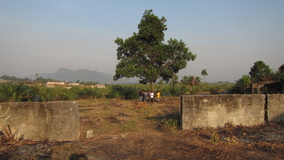 Question:
What do gravel, water, cement, and palm wine all have in common?
Answer:
They were all essential ingredients in the first phase of building the Nimba Center!
This past fall, Nimba raised over $2,000 from its amazing community of supporters (commence thunderous applause and jubilant cheers) to get down to brass tacks and begin construction at Bentouryah, Youssouf's land and the future home of the Nimba Center. Your donations were both essential and timely as Nimba was threatened with losing our pretty plot of land if we didn't start building right away. Thanks to you, Nimba was able to avoid that heartbreak and, with great excitement and plenty of noisy haggling in Susu and French, broke ground at Bentouryah and started to build. Our first task was to clear the land with a controlled burn, as is the traditional technique in the area. Never fear, we preserved the pineapple, coconut, and banana plants, but the slow, crackling fires swept the ground of aggressive brushes and stymied the growth of certain palms, which are apparently quite treacherous and like to eat cement walls if left untended. And the final product of the burn:
Our next task was to arrange for materials. The "Bentouryah Crew," as we came to loosely refer to ourselves, set out from Bagatai with our brickmaker, Amadou, to make our inquiries at Dubreka, a bustling junction town nearby Bentoruyah. We made the typically long and mildly arduous journey of potholes, traffic jams, repetitious car trouble, and the swelter of tropical sun and diesel fumes and eventually arrived at the busy lots and perilous intersections of Dubreka to find our contractors.
After more than a few stops, hasty cell conversations, cold drinks, and gallons of radiator fluid, we finally parked the van near a likely-looking row of dump trucks. Within moments of stepping out from the vehicle, Youssouf had a dozen able businessmen crowded around him, each shouting their estimates and terms for the work, while Annie hastily scribbled each number as best she could in her notebook using her fair-to-middling comprehension of French. After a reasonable amount of deliberations and consultations with Fode, our in-house construction adviser and Youssouf's childhood best friend, the terms were agreed upon. We shook hands with Monsieur Djouma-the-cement-guy, counted out the required amount of Guinea francs from the Nimba purse, and returned to Bentouryah to wait for delivery of the goods.
We decided a pit stop at a favorite palm wine spot was in order, and so we wound our way back on twisty, dusty roads through the bucolic, tree-covered villages tucked in the hills. The palm wine (tungui) from this area is known to be the sweetest and most refreshing around. They tap it directly from the trunk of the palm trees, where the pale, milky ambrosia delicately ferments. In Conakry, the slightly lemony, slightly yeasty delight might be mixed with sugar to sweeten the deal, but up here, it's pure, cool, refreshing, and best when drunk right from the mayonnaise jar (or, in Morla's case, a repurposed Coyah water bottle). Well, seeing as how the palm wine spot is the perfect place to pass a little time, we'll leave you there for now to enjoy the sunset view of Bentouryah, watch the water from the tidal stream fill up and sparkle through the trees, and enjoy a few swigs as you ease into the weekend. We'll be back next week to share the fruits of our labors in Part 2. In the meantime, keep the work at Bentouryah going by donating today (After you finish your palm wine, of course!)
a mini lesson in energy and art
Welcome back to Bagatai, everybody! This week, Nimba shares tales from this year's kids' arts program. In the program, children explored the power of the sun's energy through a fun art project and received a solar-powered light and hard-to-come-by school and art supplies, thanks to some amazing donations from Nimba's community of supporters. The art project turned even more educational as everyone present (from age 4 to 30) put their French language skills to the test. On y va!
First, we talked about three different ways we get energy from the sun. The first is food energy: energy from the sun is transformed by plants into things we can eat. Next, we talked about how the sun's energy can make electricity, which they already know about from the solar panels from Nimba's installation project last year. Finally, we discussed how we can also use the energy from the sun to make art.
Bagatai's residents can expect a few hours of grid power each day, but it is unreliable and doesn't always come in time for study hours. While parents have a few solar lanterns, these are often needed in the kitchen or other areas and children don't necessarily have easy access to lights to study by. This particular solar light and charger is kids-only to ensure they have a little light to study by.
light, water, action!
Some of us seemed skeptical at first about making art with sunlight, but we went ahead and collected leaves and objects we liked and arranged them on photosensitive paper.
Once the paper changed colors, we submerged in water for twenty seconds (counted by everyone en francais, thank you very much!) We then laid them to dry in the bright, subtropical sun. After a few minutes, our designs were ready for decorating, aka "glitter madness."
As you can see, the final products were sparkling and lovely, just like the smiles.
After the projects, students from age 4 to 20 received notebooks, pencils and pens to accompany their studies, as well as colored pencils, markers, crayons, and other art supplies they can use for their creative energy. "Bon cadeau," ("good gift") they said, and we quite agree!
Thanks to our donors, Nimba was able to make an additonal donation of study supplies to a local grade school -- named for our very own Youssouf Koumbassa! The response to the school and art supplies was so wonderful, we plan to make it part of every Nimba trip.
Tune in next week for a glimpse of the construction process at Bentouryah, the future home of the Nimba Center. A tout a l'heure, and enjoy your weekend!
We here at Nimba are very pleased to report that our winter trip 2012-2013 was an all-around success -- and a bucket of fun to boot! We hope you enjoy our post-trip blog, in which we'll regale you with tales from our travels, enchant you with photos, and give everyone a glimpse of the effect that a little sweat, some elbow grease, and the wonderful donations from our community can have in Guinea.
welcome back to bagatai
Bagatai, Youssouf's artist-in-residence compound in Nongo, a quiet suburb of Conakry, was all a-bustle with activity this past December and January. Youssouf led two month-long dance & drum workshops back to back, and between the Koumbassa family, le batterie (the 8-10 drummers that play for dance class and teach drum every day), over 30 dance students from around the world, not 1, not 2, but 3 monkeys, and Kobe the dog, there was never a dull moment at the house.
During workshop season, dance class is a twice-daily event that regulates all aspects of life at Bagatai. It is the core of Youssouf's program and the main reason that students from Brazil, Europe, Japan, Korea, the U.S., Israel, Mexico, and even New Zealand come to Conakry with Youssouf.
Shortly after Bagatai breakfasts on oven-warm baguette, hard-boiled eggs, a beguiling array of fruits fresh from the market, a soft cheese that mysteriously withstands the tropical heat, and the ever-present Nescafe, the drums begin to echo through the courtyard, calling everyone in earshot to dance. Students in brightly colored wrap-skirts called lapas and sports bras stretch on the concrete tiles while the drummers tune up in the gazebo and prepare for their two-or-so-hour marathon. As Youssouf's top proteges lead the class in vigorous warm-up exercises, visitors start to stroll in and find chairs or shady places to stand and watch the class. As the dancers bend, kick, stretch, and strain, neighbors come to fetch water from the well under the apple tree, the women of the house glide back and forth about their work, and onlookers fan flies away and look after the babies crawling on the porch.
Youssouf teaches the rhythms of the day and benevolently drills his sweating students until the movements are "feeling sweet" and "looking clean." beautiful bentouryah
As many of you know, Nimba raised money this year to begin construction at Bentouryah, our pretty plot of land at the base of Mount Kakilouma about an hour's drive from Conakry. You, our amazing community, supported us with emergency funds to construct a perimeter wall to protect the land while we continue raising funds to complete the Nimba Center. Here's some early shots of the land and our work there.
The first step was to clear a swath of the land and cut down some of the younger palm trees, which, believe it or not, can grow to be quite treacherous - if allowed, they can even bust through a cement wall! Clearing land in Guinea is done with traditional methods of controlled burns. Here's a few shots of "Bentouryah burning."
And the slightly-less-green-but-still-lovely results:
Well folks, that's all for now. Stay tuned till next week when we gather materials, start construction, and share more dance, drum, and educational adventures in Guinea. As they say in Susu, "won fa fey," or "we'll be right back!"
The Road (More or) Less Traveled Once the solar panels were up and running, Nimba had a little more time to explore Guinea outside of the winding, traffic-clogged road between Bagatai and Madina in Conakry. Bearing in mind the famous effects of the old "all work and no play" adage, Nimba hit the road to see the sights and experience some of the prettiest places Guinea has to offer. In the passages below, we share some of our traveler's tales - road trip, anyone?
While there are images of Guinea's current leader, President Alpha Conde, even more apparent is Guinea's obvious obsession with our American commander-in-chief. (Only slightly more ubiquitous an icon is Tupac - may he rest in peace - and, for reasons at least slightly less justified, Tony Parker.) As with seemingly every errand in Guinea, we would be remiss to travel sans entourage. Accompanying Nimba on our voyage were sixteen dancers from the workshop, eight, or ten, maybe thirteen drummers (or so, it was difficult to get a head count), two lady cooks, Youssouf, his trusty driver, and a few miscellaneous and friendly tag-alongs as well as bags, lapas, pots, a guitar, cups, cups, plates, water bottles, drums of all sorts, and just about everything else except the kitchen sink and the neighbor's rooster - which nobody really missed anyway. We packed everything into the car and the kind of small rented bus commonly seen packed to the gills and stacked high above the roof, and, for better or for worse, merrily - sweatily - set out for our journey. Of course, no trip in Guinea is complete without a healthy dose of car trouble. Luckily for Nimba, our Guinean counterparts were also handy on-the-spot mechanics. A simple thing like a dead battery in an old bus didn't even phase them, and jumper cables? Quoi? These guys are way ahead. We're not real sure of the step-by-step particulars, but somehow they got the bus back up and running in less time than it takes to get a sunburn standing on the road. During one such delay - and there were many, each with its own special you-can't-write-this-stuff litany of details - we made a few friends. These curious friends enjoyed the drums almost as much as they enjoyed our camera... By turns, our unscheduled pit stops left us with time to kill in places that could turn any travel SNAFU into a pleasant hour, like this one, on the road to the mountain city of Kindia. Lovely! Lunch Eating on the road? No problem, but if you were expecting made-to-order sandwiches, fries or greasy chicken in sacks, think again. Road food in Guinea was both abundant and fresh. Our car would pause at a seemingly arbitrary spot and in seconds, we were surrounded by people selling warm gateaux in plastic buckets atop their heads, peeled oranges you suck the juice from, pineapples, bananas, a delicious fruit with a forgettable name in velvety soft brown pods from local trees, frozen bissap treats in plastic bags, roasted cassava, sweet popcorn balls, or spicy fried mussels wrapped in brown paper. In addition, you could almost always stop and ask Madame what she has cooking that day, and be treated to a communally-eaten feast of rice and sauce, keke and fish, barbecued meat on skewers, or even a freshly hacked up chicken cooked to near-burnt perfection in front of your eyes and topped with onions, mayonnaise and bright orange Maggi. A far cry from curly fries and a double cheeseburger, non?
For Nimba, we took advantage of the exquisite fruit stands along the way and loaded up on watermelon, pineapples, bananas, oranges, and few out-of-season mangoes to take with us to the hotel in Kindia. There, Maimouna and Fatim would set up their outdoor kitchen with expert efficiency and proceed to feed us just as they would at home at Bagatai. Even after countless delays, multiple car troubles and bad roads, it's no wonder Mohamed, le chaffeur, is smiling, considering the delicious vittles to come! Proceeding with Caution The journey to Kindia wasn't all sweets and treats. There were also some unexpected - and considerably less pleasant - stops along the way. Military and police checkpoints are common in Guinea, and while such encounters are not generally serious, they are to be handled with care. In the city, they mostly want to check your trunk to make sure you're an upstanding, weapon-free citizen, but will also attempt to intimidate you into relinquishing your Guinea francs into their own uniformed pockets. Out on the road to Kindia, though, officers were much more insistent (and probably hungrier). At one such checkpoint, tensions rose over who we were (organisation des artistes, eh? Show us your papers!) to the point that we had to prove our musical chops by literally singing and clapping around the officer, until he was satisfied with our performance and dismissed us with a toothy smile and a wave of his hand. Annoyed but relieved, off we went through the tree trunk barricade and made our way down the road.
Another time, we were instructed in a barking tone that invited little argument to step out of the car - never a good sign - only to be made to walk across the barricade and scurry back into the car on the other side, a mere ten feet away. Kindia, aka the Most Beautiful Place on Earth Welcome to La Voile de la Mariee in Kindia, where all the bumpy perils of the road melt away and visitors find themselves in mountain jungle paradise of waterfalls and giant bamboo. It is unspeakably peaceful and cool here at La Voile, with Kindia proper just a few red dirt miles away. (Kindia, by the way, is also famous for its giant fabric market, where no-nonsense women haggle relentlessly over myriad swaths of brightly colored prints and lepi, the sought-after striped indigo cloth made in the region.) Tucked back a little ways down a tree-lined path, Kindia makes for the perfect retreat from the din and smog of the traffic and diesel generators of Conakry. The trees are at times filled with squawking birds and monkeys, as any tropical forest ought to be, but they tend to be scared off by human presence and the noise of the drums that invariably accompany them. The waterfall makes for beguiling acoustics for classes and performances as the drum beats bounce off the rock wall behind the falls and sound as if they come from deep within the cliff or possibly the center of the earth. The refreshing pool beneath the La Voile is the perfect place for cooling one's heels... ... which is all the better after dance class. (The dogged participants of Youssouf's workshop literally danced EVERYWHERE they went.) It is easy to see why Kindia is a classic destination for similar workshops and tourists alike. Another attraction are the finely carved statues and charming knick-knacks made by a kindly (and quite reasonably priced) woods-dwelling gentleman. Just Married Nimba was also lucky enough to witness the wedding of lead drummer Abdoulaye and American dancer Jacqui - truly a match made in heaven - complete with mosque proceedings, a decadent dance party and feast, and, of course, a bang-up doundounba, the typical Guinean get-together, slightly different for each occasion, but always with showy dancing and impressive drumming from all involved. Everybody dances at a doundounba, tall and short, young and old. We all knew Youssouf can get down, but how does she shake it with all that balanced on her head? Beauty by Boat Just off the coast of Conakry are a handful of islands that rival the world's most exquisite tropical destinations. One such island, accessible via an hour's boat ride from the harbor downtown, is called Roume, and is a predictably popular destination for foreigners and Guineans alike in need of some Rasta-inspired r&r. Dreadlocked gentlemen slosh through the gentle surf to meet the boats skimming in to carry discerning ladies to the beach and lead them through a glorious jungle to the other side of the island, where they emerge onto a white sand beach replete with perfect waves and grass cabanas.
After a day of relaxing on the beach, nibbling freshly caught grilled fish and sweet cassava cooked in banana leaves, Nimba set sail at sunset for a beautiful, albeit rather pokey, ride back to the mainland. We hope you enjoyed reading about our trip and that someday you, too, can come along for the ride... Until then, happy trails!
After a brief respite from our solar duties and a few impromptu dance parties, it was back to work for the tireless Nimba team. We had most of what we needed up on the roof. Now it was just a matter of putting the pieces together. As with almost everything in Guinea, this was not as simple as it sounds. First of all, the operation was not entirely located on the roof. We had to find a safe, out-of-the-way place in the house to set up a bank of batteries and the inverter - a funny little box that coverts the DC (direct current) electricity produced by the panels into good ol' appliance-friendly AC (alternating current). AC/DC - yes, like the Australian rock band. We'll spare you the universe of applicable puns on their song lyrics we're thinking of right now. Trust us.) So, we found a snug corner just off of the living room perfect for stashing the little power station and called in a carpenter to build a cabinet to house the equipment. When the carpenter arrived, guess what? The power went out. Undaunted, the carpenter rained down sawdust as he merrily sawed away at 2x4s in the dark, aided by a slightly more disconcerted Fronsy. A few hours and no missing limbs later, the cabinet was completed. Another testament to Conakry's wealth of innovative and expert craftsmen - although it should be noted that sawing wood in the dark might more accurately be classified as an Olympic sport.
Meanwhile, Mohamed and El Hadj were charged with the perilous task of pouring the acid into the batteries. Surrounded by 20 liters of corrosive acid, they hunkered down behind the house and set to work. Onlookers watched silently as each bottle was slowly drained into the batteries. As they painstakingly emptied the twentieth liter, we breathed a collective sigh of relief. Battery bank was injury-free and ready to go! The batteries had to sit for 24 hours to equalize, giving us plenty of time to get our roof on. Unwrapping our packed-for-the-apocalypse solar modules was a job in itself. Knives and other dubious sharp instruments were wielded to penetrate the countless layers of protective material. Apparently, bubble wrap is a bit of a novelty in Guinea (with a postal system that is under the weather at best, it's no wonder - things don't get mailed too often in these parts). Amid much joyous snapping, crackling and popping from the smaller residents of Bagatai, we managed to free the panels and put them where they should be - in the sun. Compared with all of the the prep work, installing the panels is the easy part. The racking system is relatively simple to assemble (provided, of course, that you have all the right bolts) - a bit like an Erector Set. Throw in the fact that for over a week, everyone had been casting longing stares at the two large wrapped parcels leaning against the wall (especially on hot nights when the power went out) and you have panels that, thanks to El Hadj and Company, were set up with lightning speed. Finally in place, the seemingly inert panels were now veritable flurries of subatomic activity. In order to capture all those willy-nilly electrons, we had to wire the panels to the battery bank, otherwise known as "downtown". Solar installer extrordinaire, El Hadj, had prepared the wires earlier so the team simply measured the panels' output and connected the final wires. But we still had to wait for the batteries to charge. Oh, delayed gratification!
Later in the hot, sticky Conakry afternoon, we decided to check the system during the scheduled grid power outage. A switch was flipped, and it worked! The fans and lights of Bagatai flickered on in a glorious display of wattage. Dance class screeched to a halt as everyone bounded into the house ecstatic and in disbelief. The ubiquitous drumming was replaced with jubilant whooping, hugging and even a few joyful tears. That evening, Youssouf held a (somewhat) solar-powered dance party in celebration of our initial success. The batteries were not yet charged enough to run for very long, so actually only the first few songs were solar-powered, but when everybody is shaking their rumps, who's really counting?
Problem Solving Story over. Most of the work completed, right? Not exactly. The PV array at Bagatai is not large enough to completely replace the power from the grid. Instead it supplements, helping to fill in the 18-hour gaps between grid service. A few days after the install, we realized that moving the panels to the roof of the other house could increase energy production as there is space to manually rotate the panels during the day to follow the path of the sun.
Trial and error - here we come! Picking up the entire shebang and moving it was not as difficult as one might think. The panels were already mounted on the rack and we had plenty of muscle in the house. Most of the work lay in simply rewiring the system. The panels got a new roof and there they remain. Three times a day, Bagatai solar experts-in-residence, Baba and Parmati, diligently shift the rack a few degrees to capture maximum sunlight. Getting Schooled OK, so now everything is in place. Job done? Finished? Time to kick back with a nice, lukewarm Guiluxe? Almost. Nimba had one crucial task to complete - filling in the folks of Bagatai about the bizarre people who had been scuttling across their roof and other wacky changes their home had undergone in the preceding weeks. We held a rooftop workshop covering energy efficiency, the nuts and bolts of their PV system and how to maximize the potential of the panels. With Youssouf acting as translator and Fronsy brandishing many homemade illustrations, a grand and educational time was had by all.
Thanks to the attention and ingenuity of our Guinean friends, Nimba was able to complete our first renewable energy mission in-country. In the process, we managed to learn as much as we set out to teach. Now, where's that Guiluxe?
a day in the life...
The sun is up, as is the neighbor's rooster, and sprinkles down in dappled designs through the raffia mats shading the courtyard at Bagatai. You can hear the soft swish-swish of someone's straw broom as she sweeps the octagonal concrete tiles clean as the compound gently percolates into activity. While guests at Bagatai stretch sleepily over Nescafe laced with viscous sweetened condensed milk, the kitchen has already been bustling for hours, the fresh fruit and eggs and perfectly crusty-soft baguettes purchased from the market nearby long before their waking. The sparkly morning idyll is suddenly pierced by the authoritative thwap! of drummers tuning up. Anyone still sleeping is soon compelled to rise as the drums call the dancers of Bagatai to attention. The miscellaneous figures who had dotted the courtyard in cheerful conversation or child's game begin coalesce into a formation of brightly colored fabrics and the palpably rising potential energy of bodies in preparation for movement. The drummers play their pulsating call, the teacher takes their place at a central point of focus, and thus, dance class begins. While we at Nimba were hustling to and fro from the welder to Madina to the roof and back again, the primary regulator of everyone's day was the twice-daily occurrence of the dance classes that make up the backbone of Youssouf Koumbassa's Annual Dance & Drum Workshop, which was held at Bagatai concurrently with Nimba's maiden voyage. Twice a day, for 2 1/2 hours at at a time, the courtyard of Bagatai was transformed into a sweaty mass of rhythmic concentration as 20+ dancers, foreign and local alike, honed their focus towards Youssouf's exquisite brand of Guinea-style West African dance.
watch kakilambe, a mask dance from the baga susu people of boke, here:
It's no wonder that people travel to Conakry from all over the world "just" to dance in Youssouf's workshop. Youssouf has an illustrious background in Guinea West African dance and drum and is a compelling, committed teacher. Throughout the workshop, he seemed to transform his newer students from eager-yet-awkward novices into capable, educated movers and his more advanced level devotees into stunningly expressive, graceful and powerful dancers. Youssouf's workshop is one of the oldest cultural immersion dance intensives in Conakry and this year, 16 dancers came from the United States, Brazil, Holland, Spain and even New Zealand to deepen their technique and knowledge and soak up whatever they could of Youssouf's exquisite grace, deep knowledge and good vibes. The dancers were dogged in their commitment, practicing at all hours and having class wherever they went, from the courtyard at Bagatai to a giant bamboo grove at the base of a waterfall in Kindia to the sandy beaches of Roume Island. Youssouf concerned his classes not only with correct technique, tireless repetition and expressivity; but also prioritized knowing the name of the rhythm, the people to whom it is credited, its traditional purpose, and place of its origin. Take Sorsonet, a complexly syncopated rhythm with a rather showy movement vocabulary from the Baga-Susu people of Boke. After breaking down into meticulous detail core movements from his legacy of ballet-style choreography, Youssouf tells the class that the athletic femininity of the dance steps stem from Sorsonet's importance as part of an initiation ritual for younger women and girls into the passed-down knowledge of their female elders. (Sorsonet, by the way, is also known as a dance for Nimba, who is not only a national symbol of Guinea, but a Baga fertility goddess. You can see a depiction of her on the walls of Bagatai behind the drummers in the Kakilambe video above. Adding another layer of meaning and import, the very word "Guinee" means "woman" or "wife" in Susu.) riding along with "the african cowboy"
Serious as the study of West African dance is, Youssouf is also known for his penchant for fun. He's always impeccably dressed and preferred a particularly charming cowboy hat, purchased in Texas so you know it's the real deal, paired with matching belt buckle and white leather boots.
On breezy evenings (our Guinean friends tended to refer to the 70 degree nights as chilly, remarking "chiin belee" or "il fait froid!) he might walk everybody down to Bar Vietnam, aka The Blue Light Bar, which is essentially a shack of boards on the docks of Nongo with a reliable generator (read: cold beer and Guinean MTV) and a ceiling made of mats somehow stapled together with bottle caps.
There he delighted in buying a round of Cokes or Guiluxe (the Guinean equivalent of Budweiser with a shiny label depicting the flag on each bottle) for everyone, dancing, of course, to all the hits (some of which he recorded himself!) Throughout the workshop, local artists and students danced alongside the newcomers to create a multi-level dance class that culminated in a magnificent performance on a carefully swept dirt floor stage replete with live drums, red gold and green costumes, and luminous smiles. The men danced with painted faces among interludes of narrative scenes, drum solos and even a fire-eater. Salyea, who was normally our soft-spoken and smiley local master teacher, danced in a headdress and masculine splendor while flames licked across his glistening arms until he swallowed the fire in huge, seemingly palatable, gulps. Two dancers from the workshop swayed across the stage with calabashes of water atop their heads in a dramatic scene of bringing water to a thirsty man, later dancing to a fever pitch in time with with the batterie of drummers. After the show, the sweaty, sun-kissed performers drank cold Fantas and Cokes and danced with their audience and scores of neighborhood kids until it was time to sleep, rise in the morning and start all over again.
Hope you enjoyed the read, and stay tuned for more trip stories from Nimba!
|
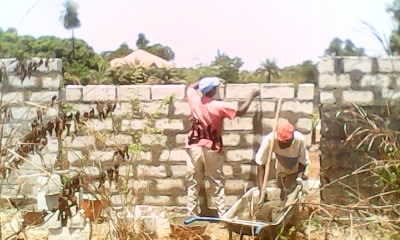
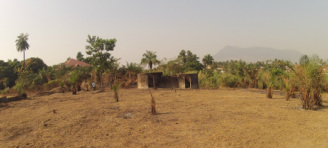
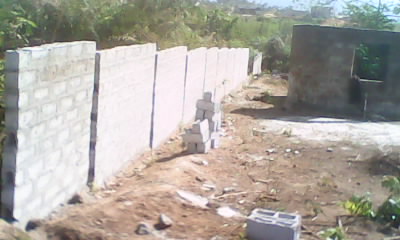
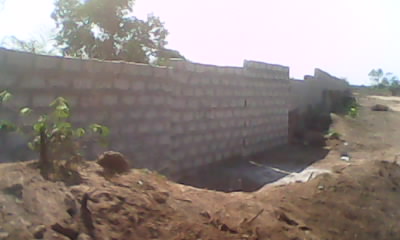
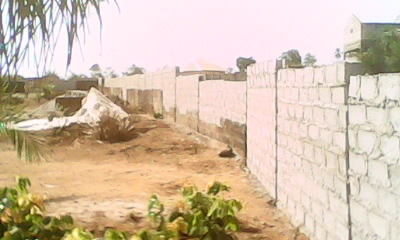
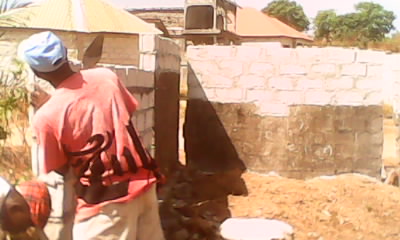
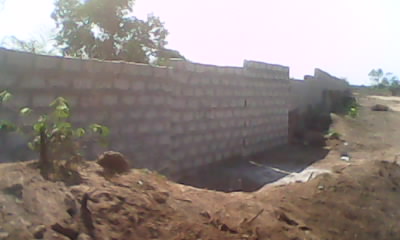
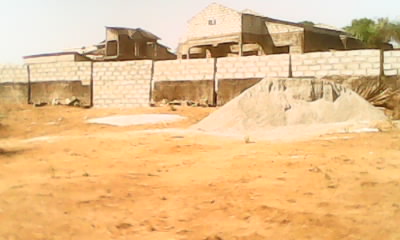
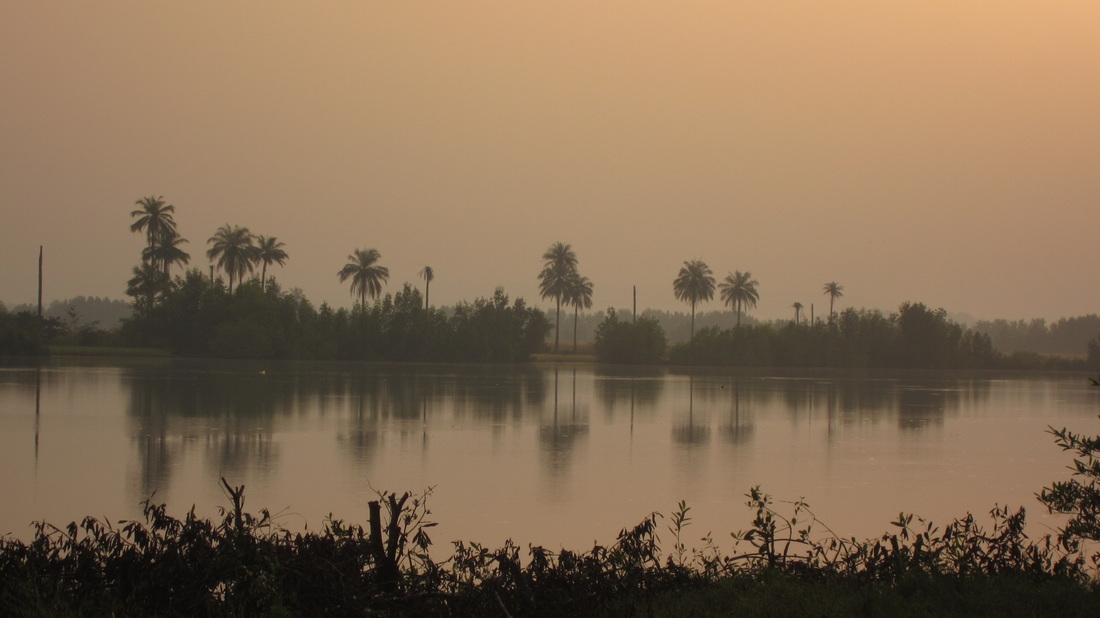
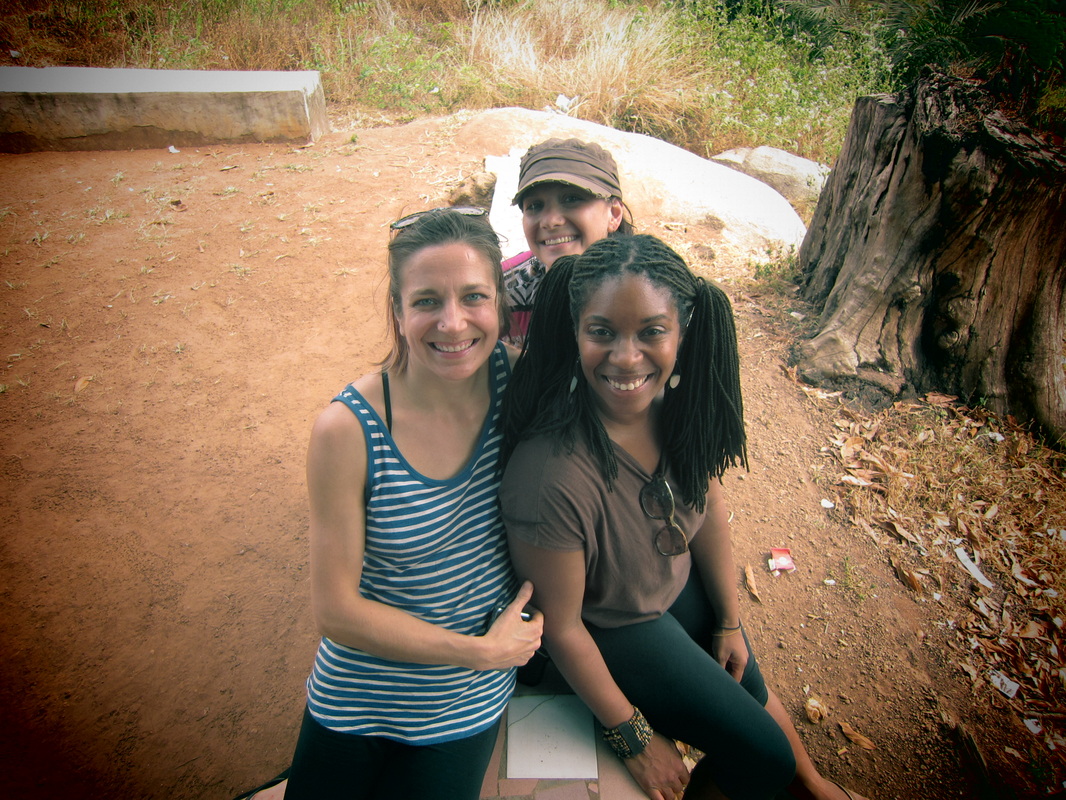
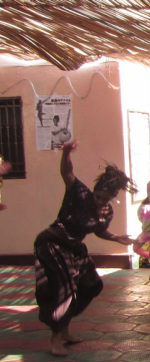
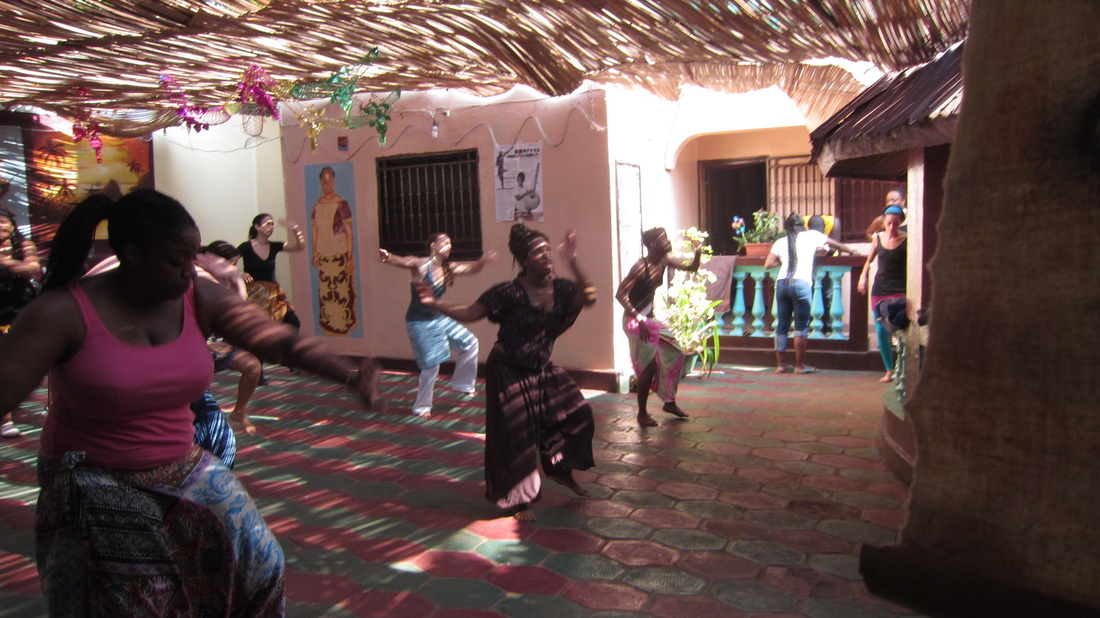
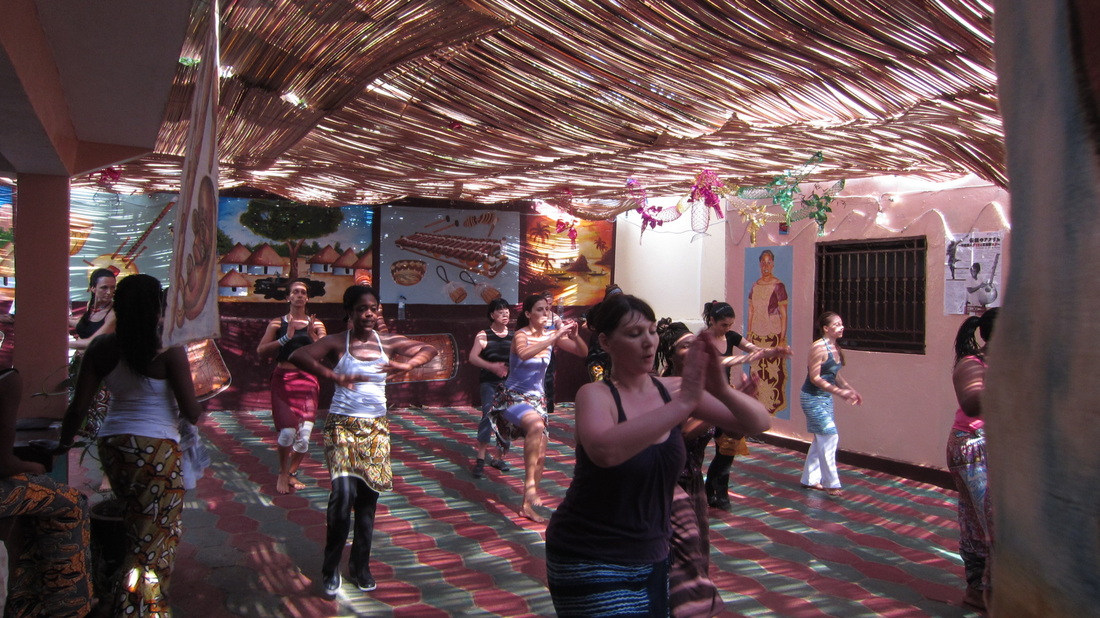
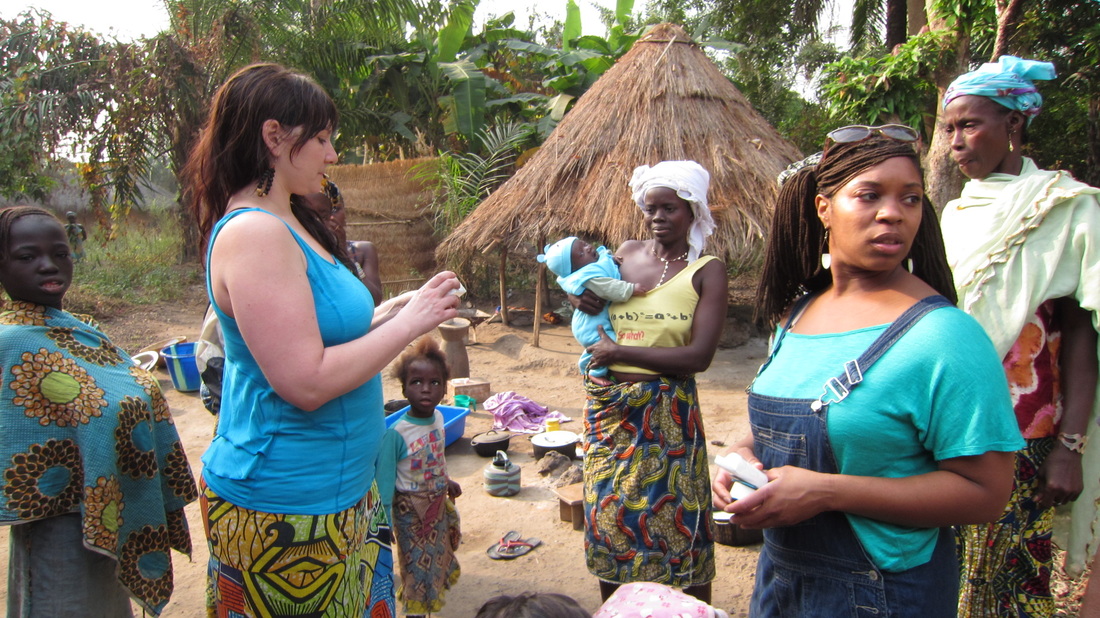
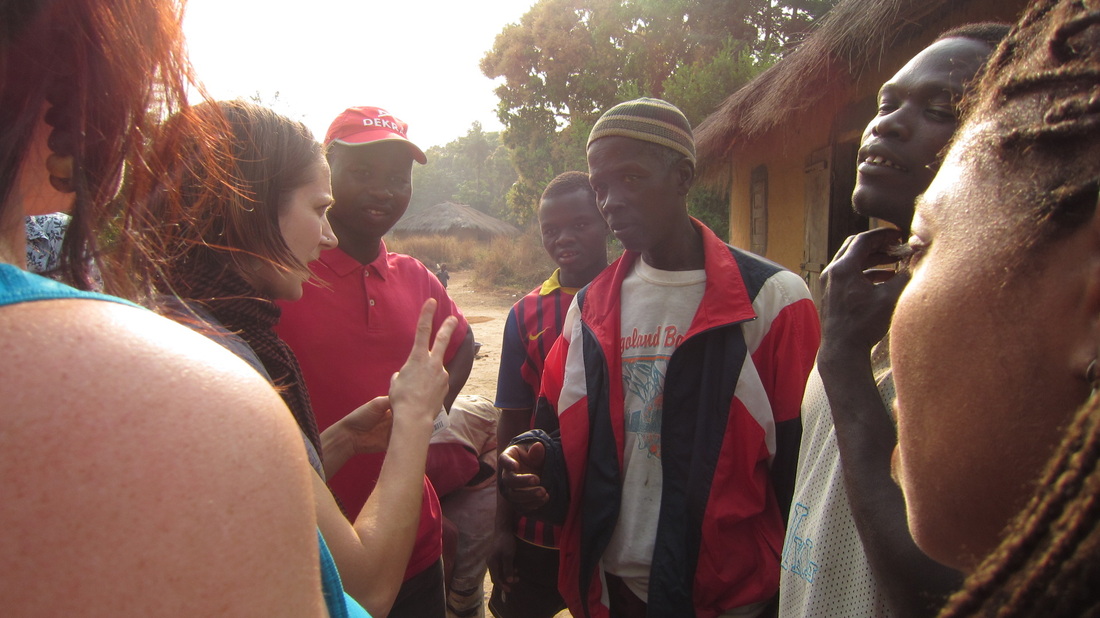
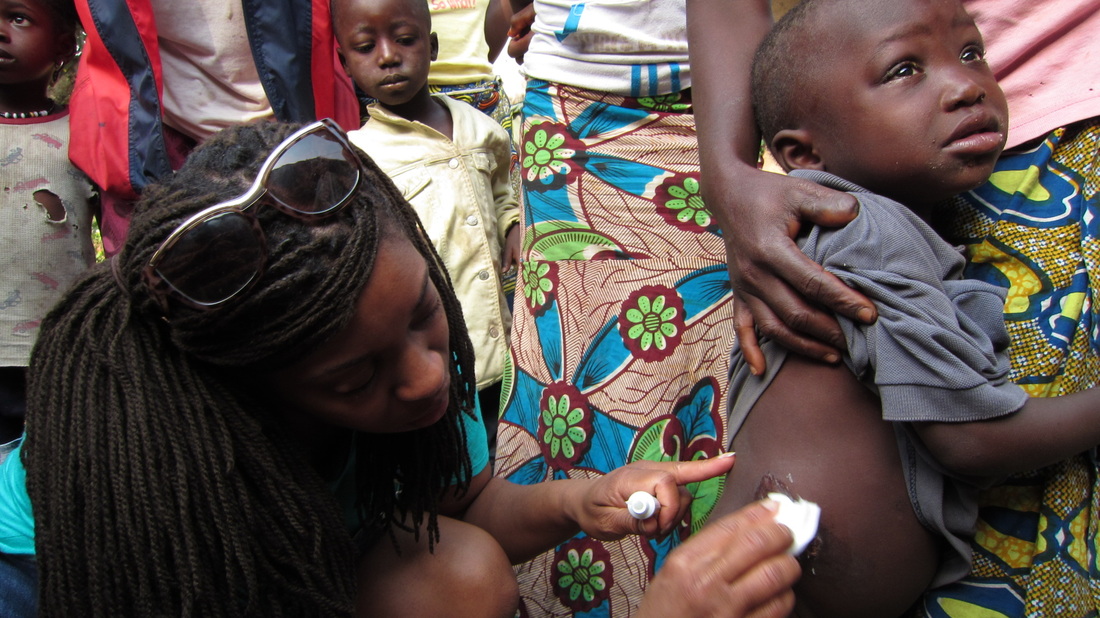
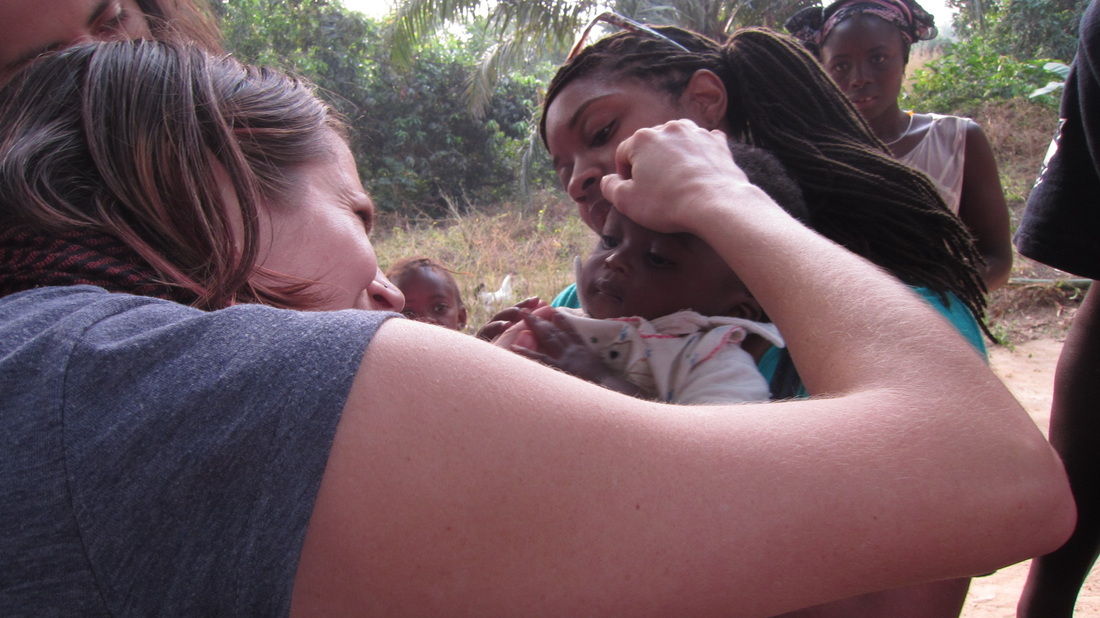
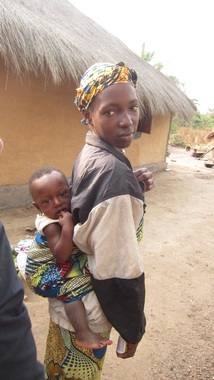
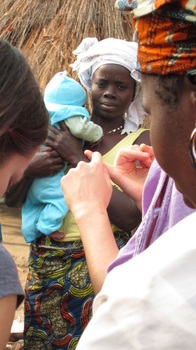
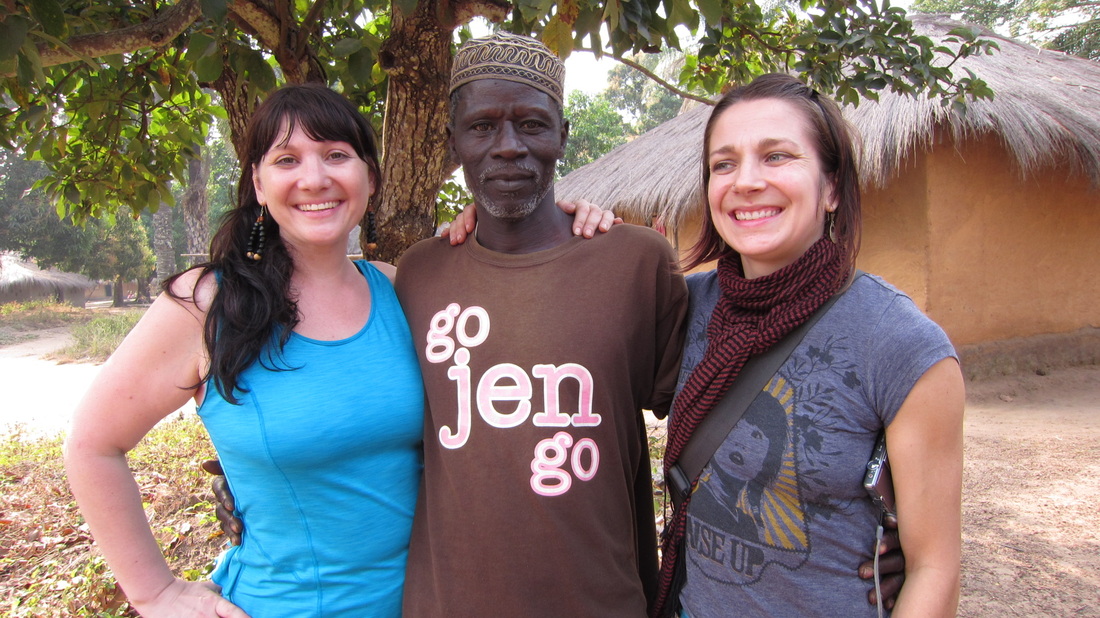
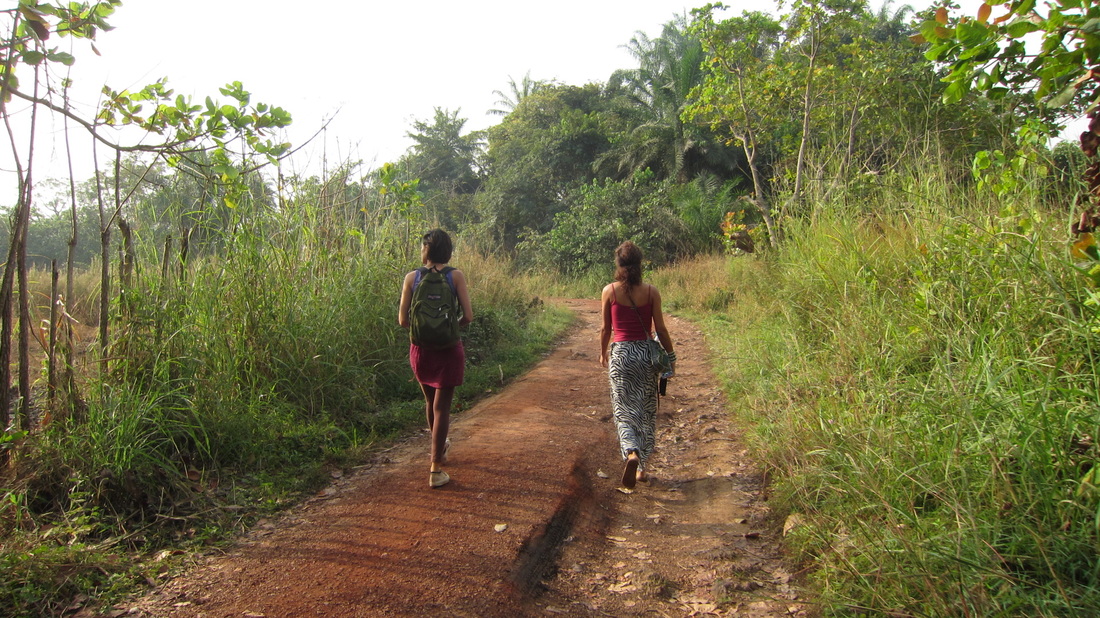
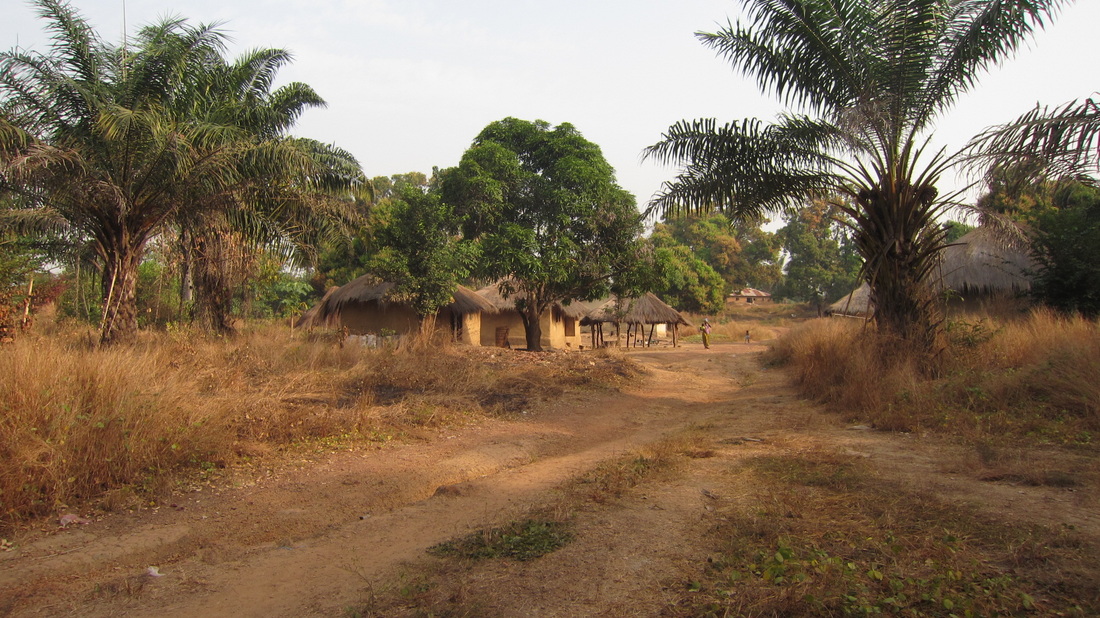
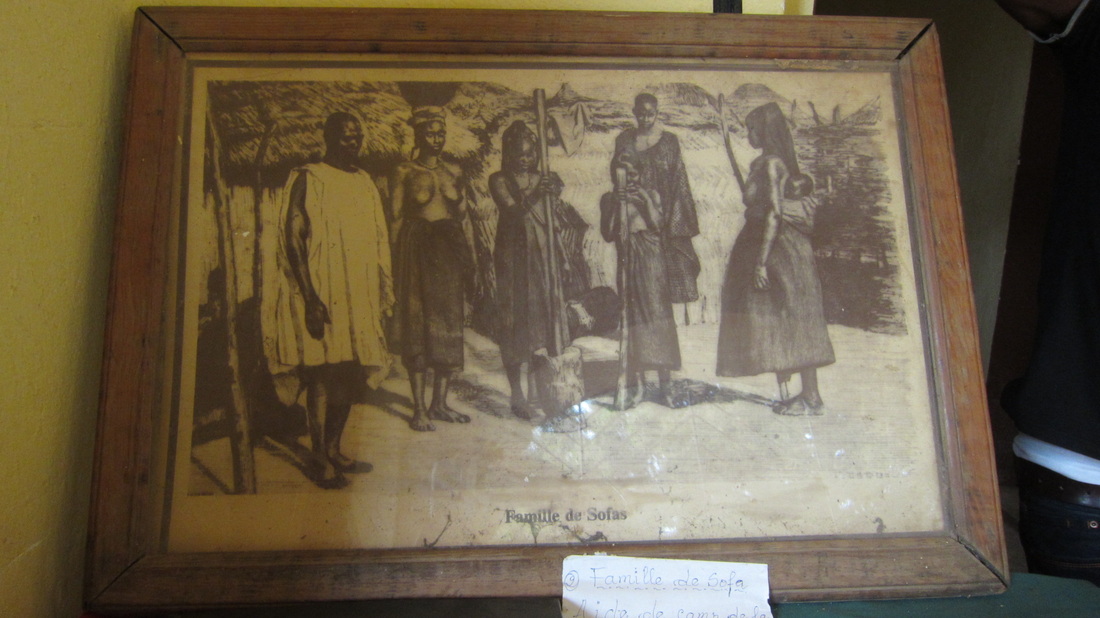
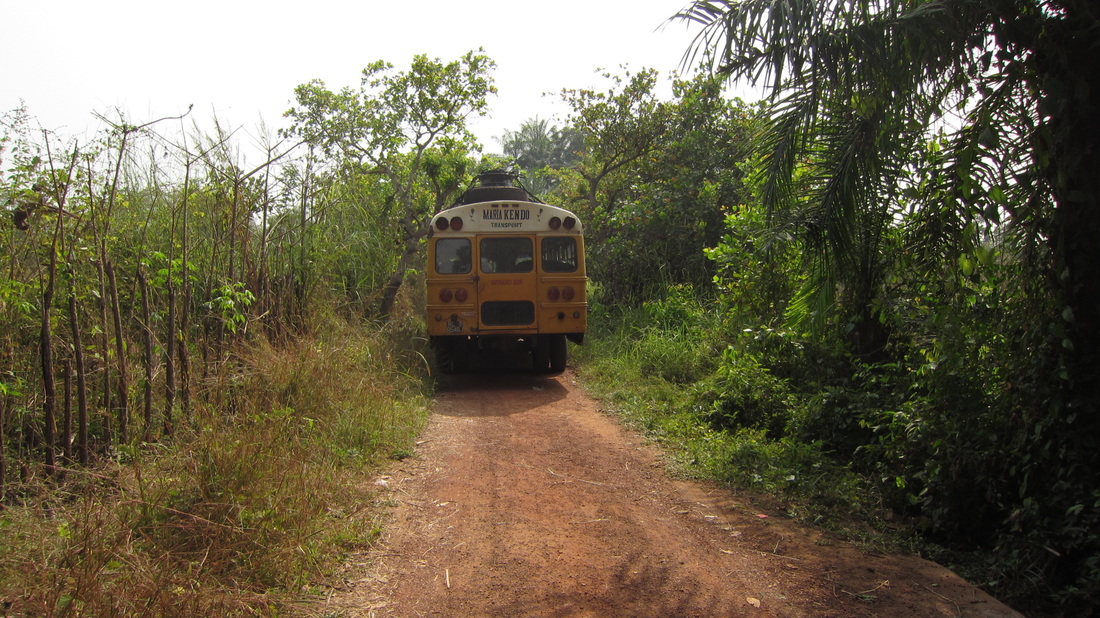
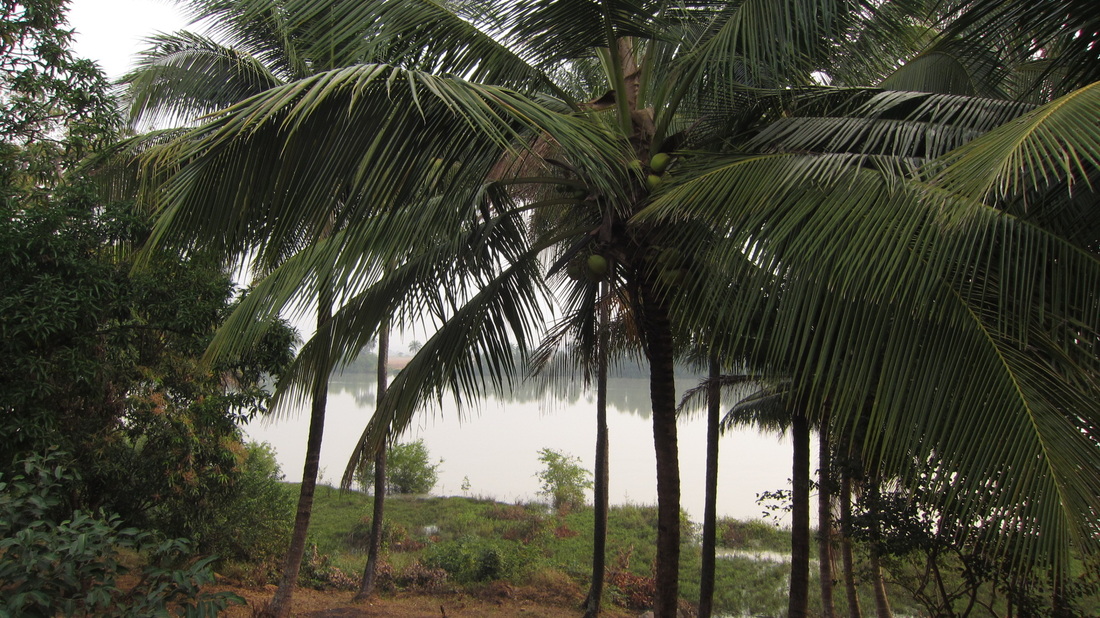
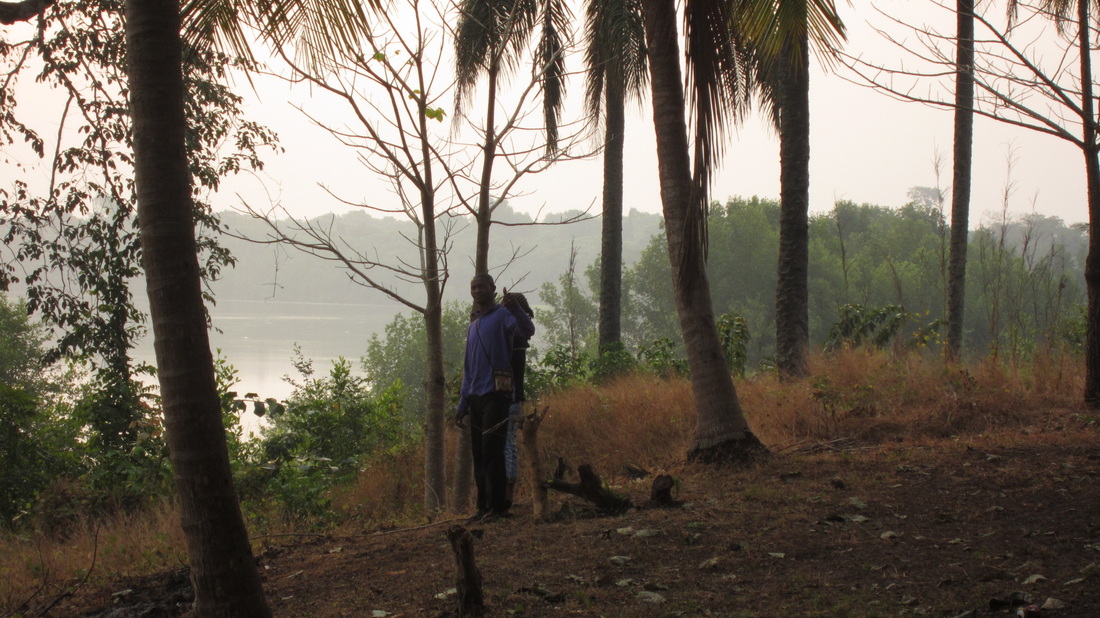
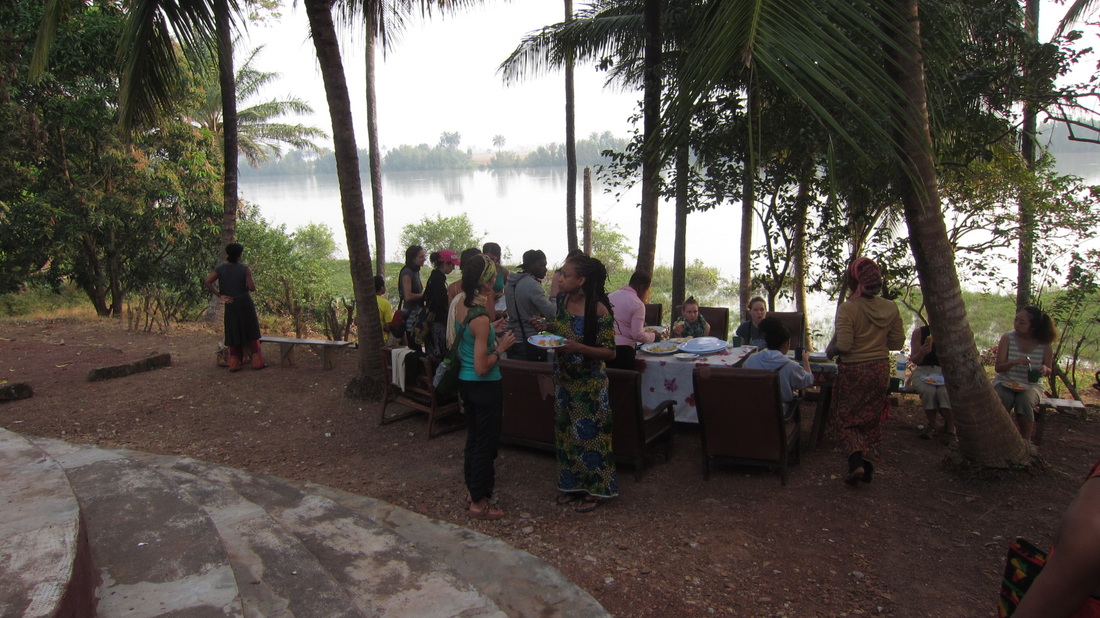
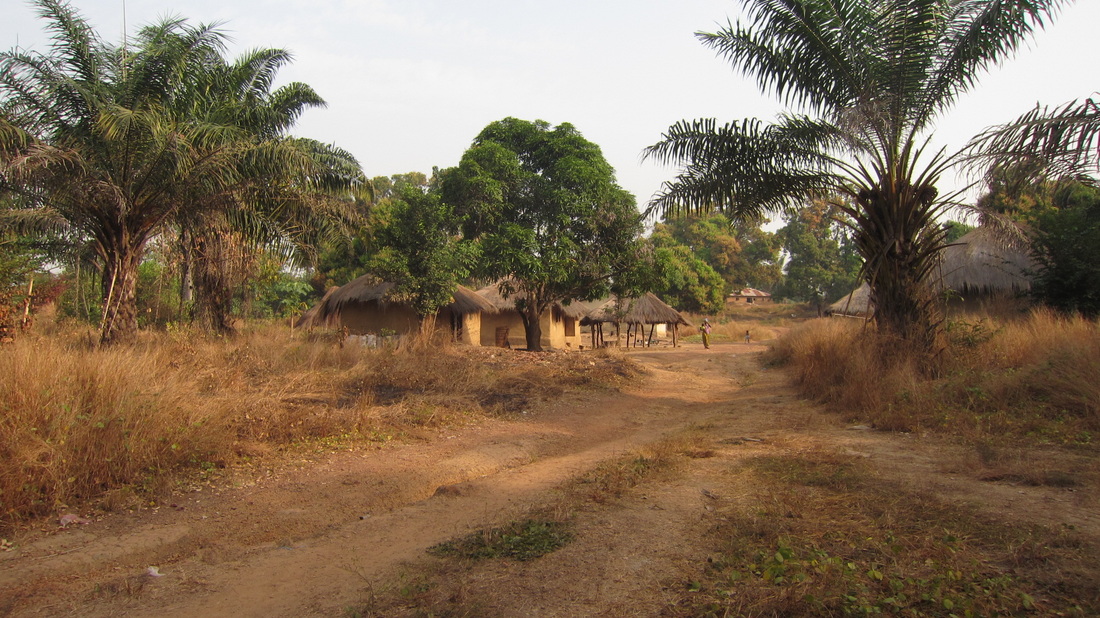
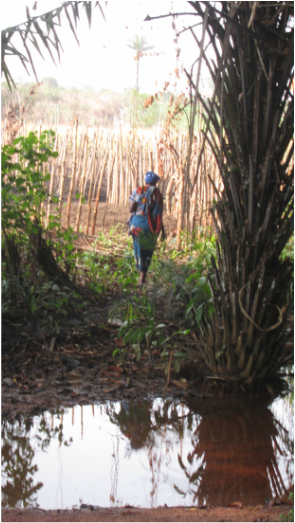
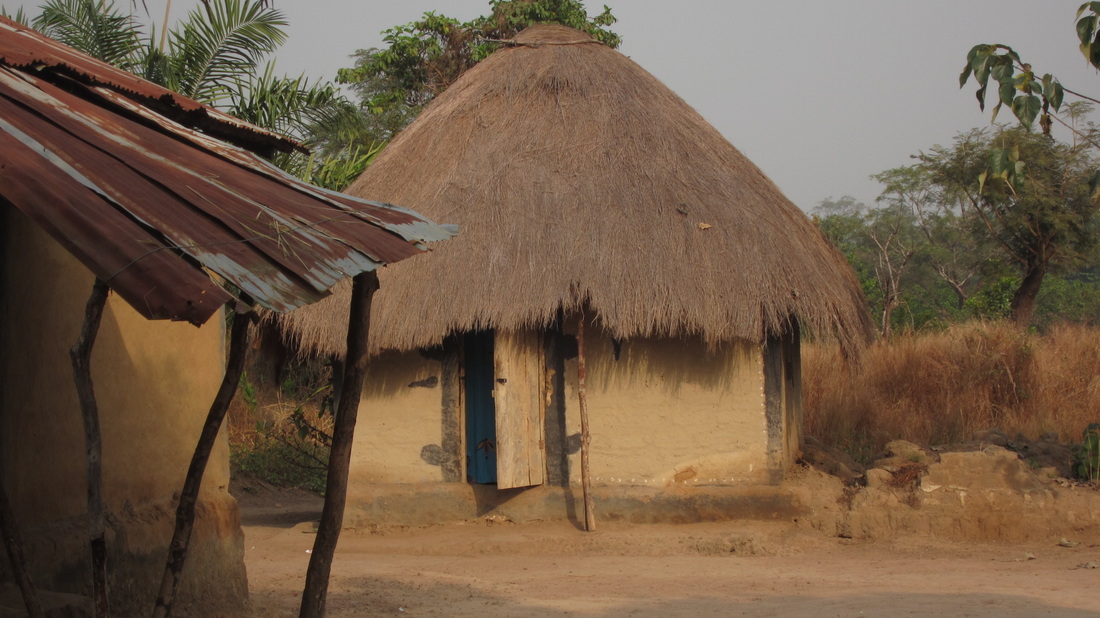
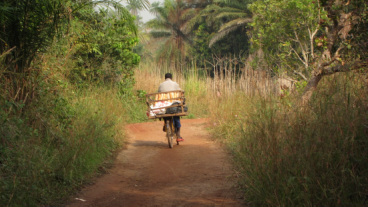
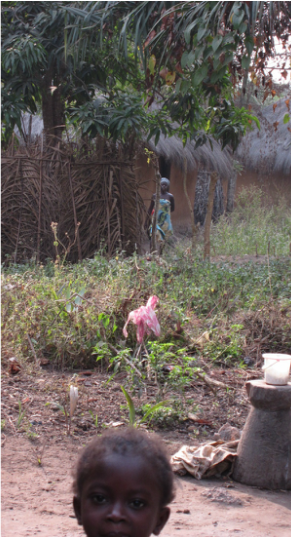
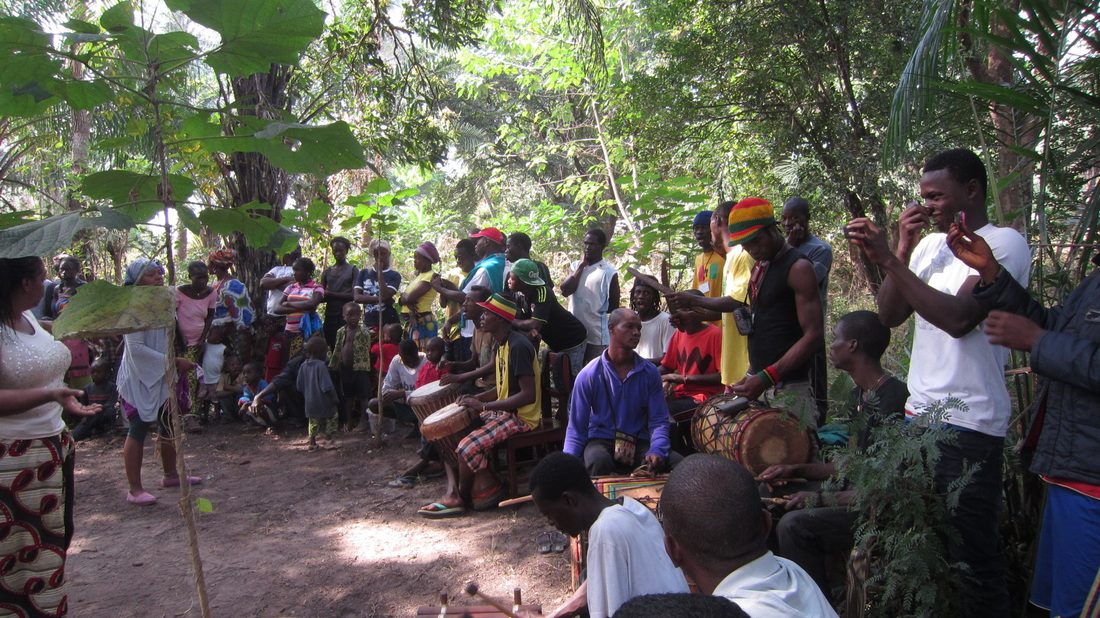
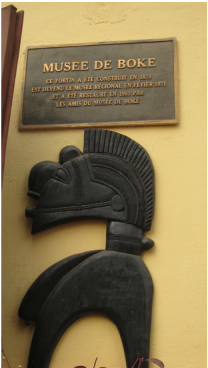
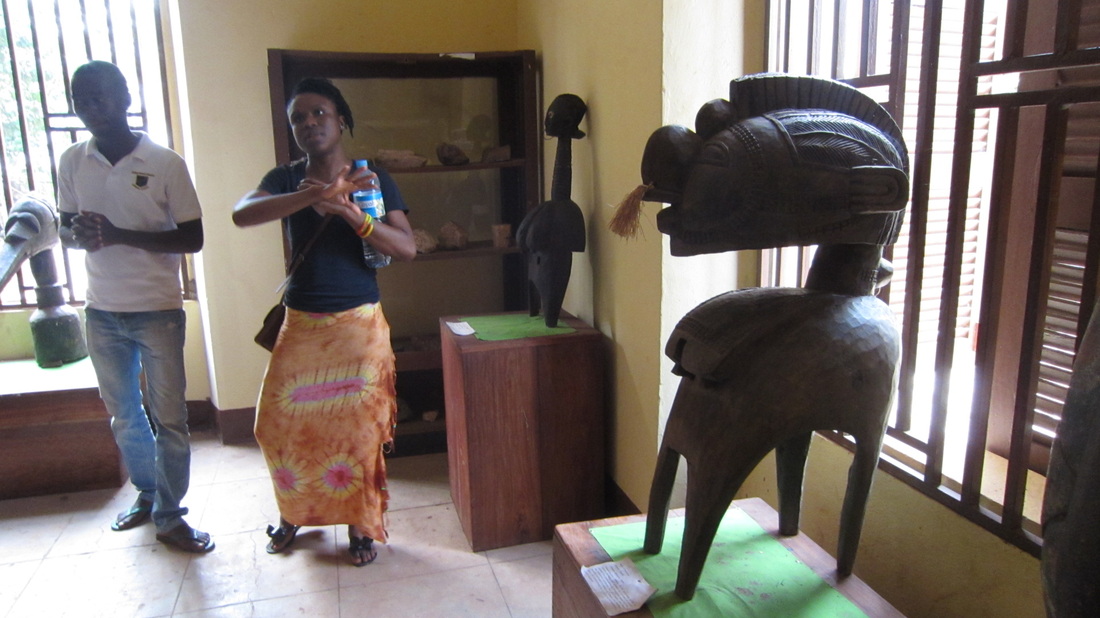
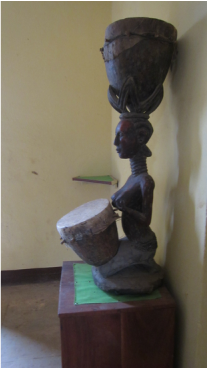
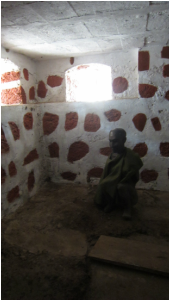
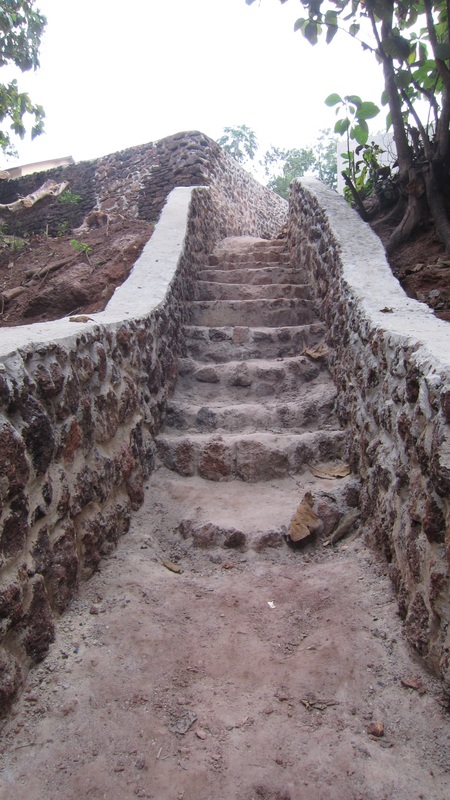
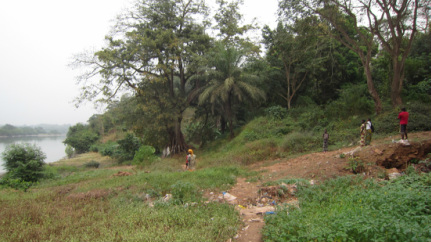
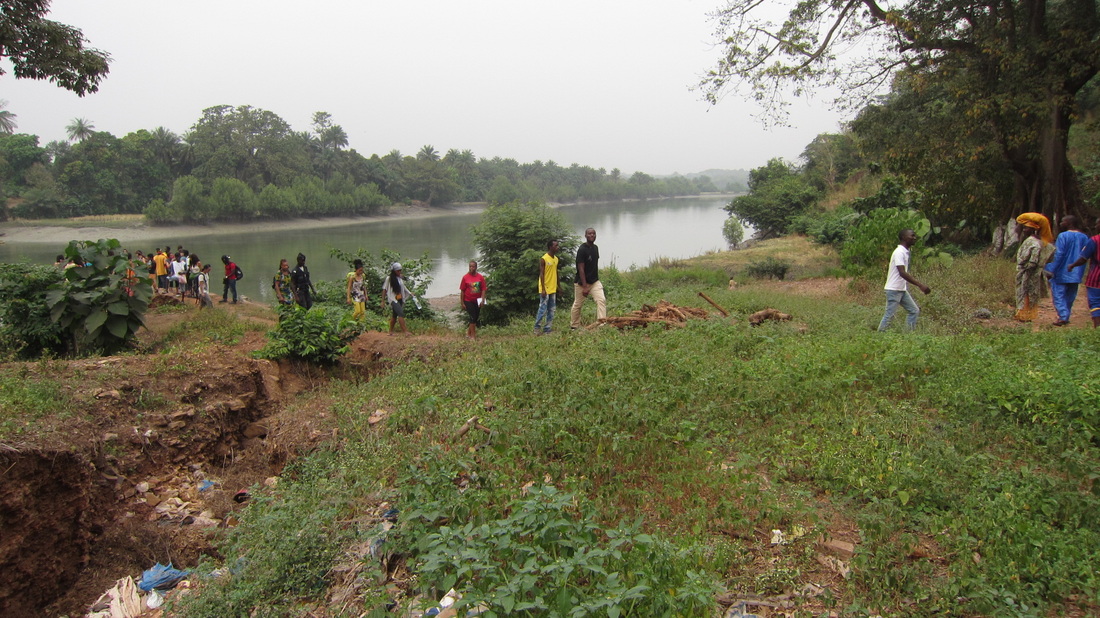
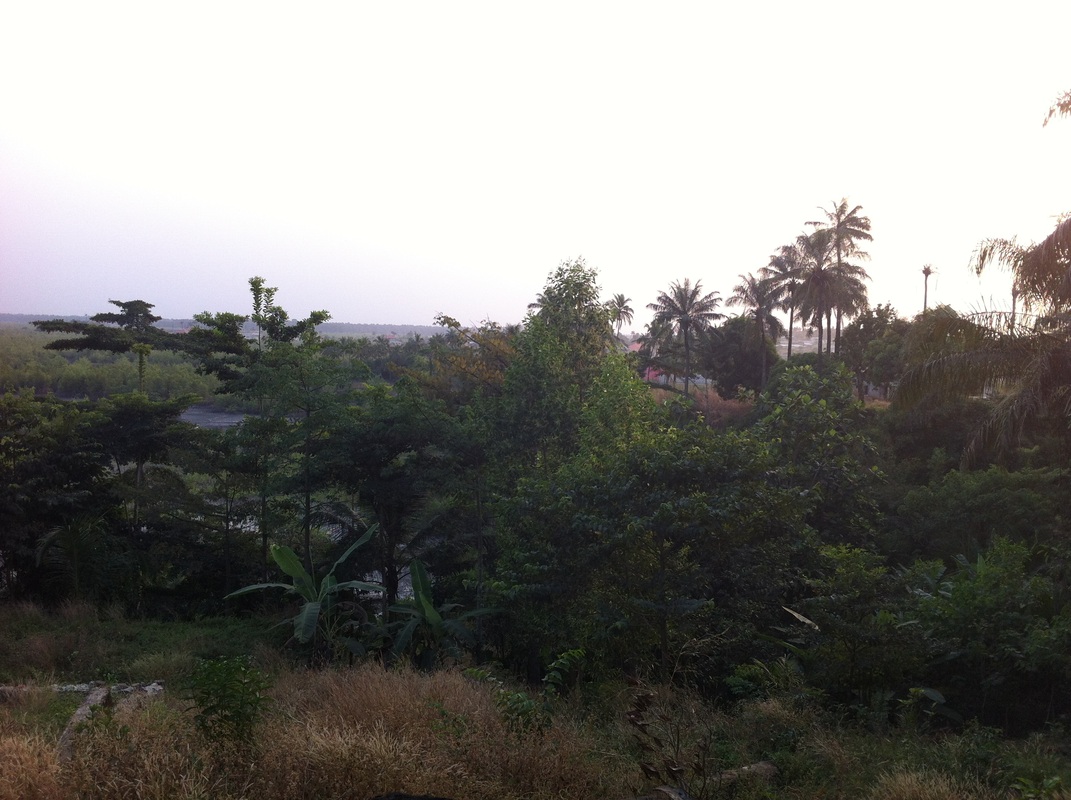
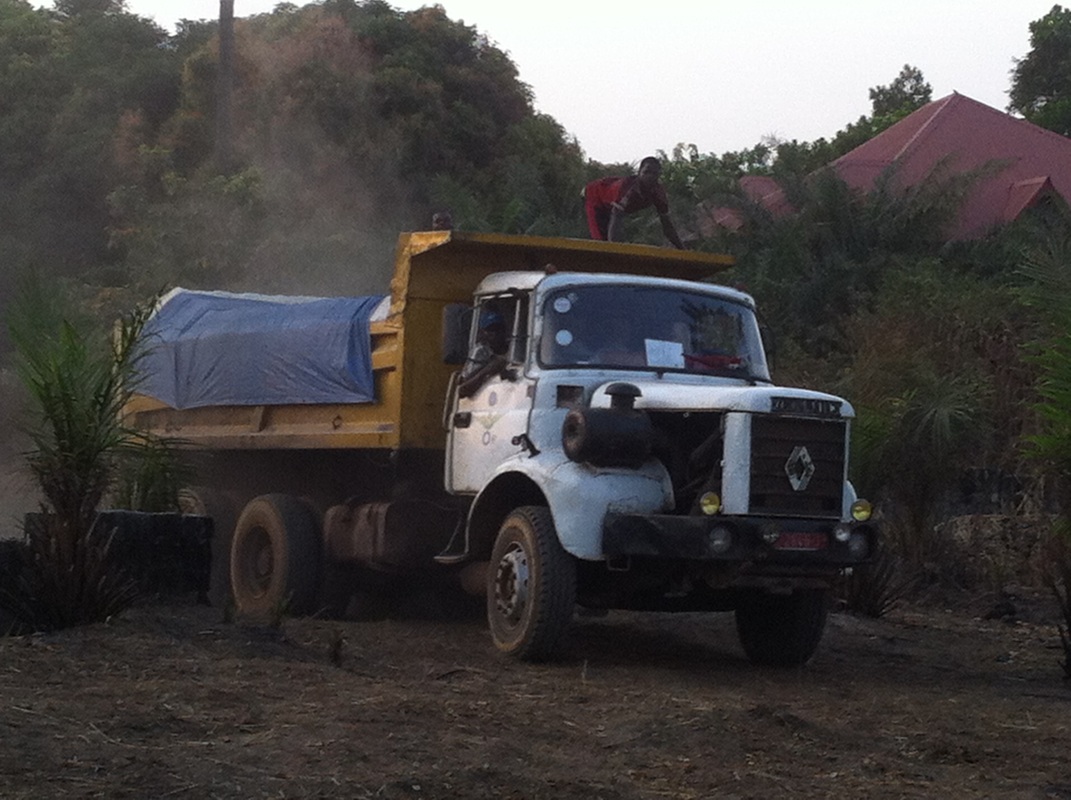
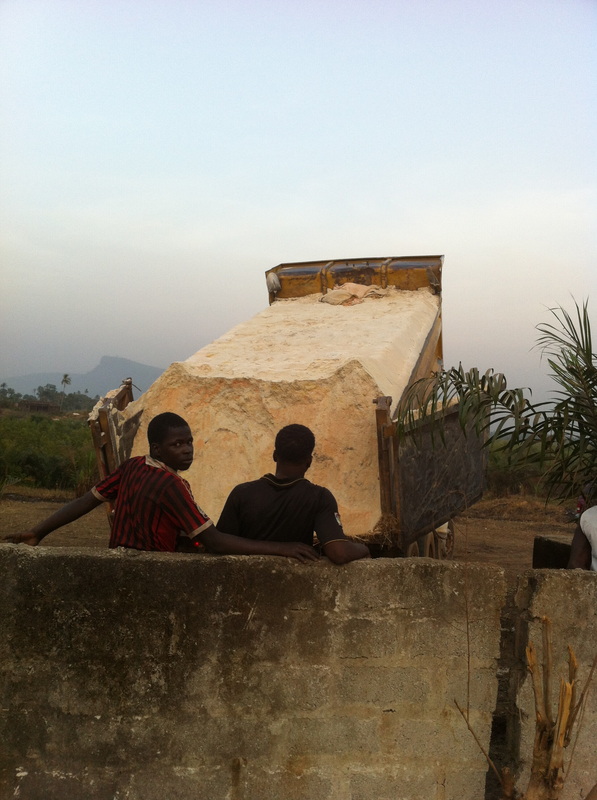
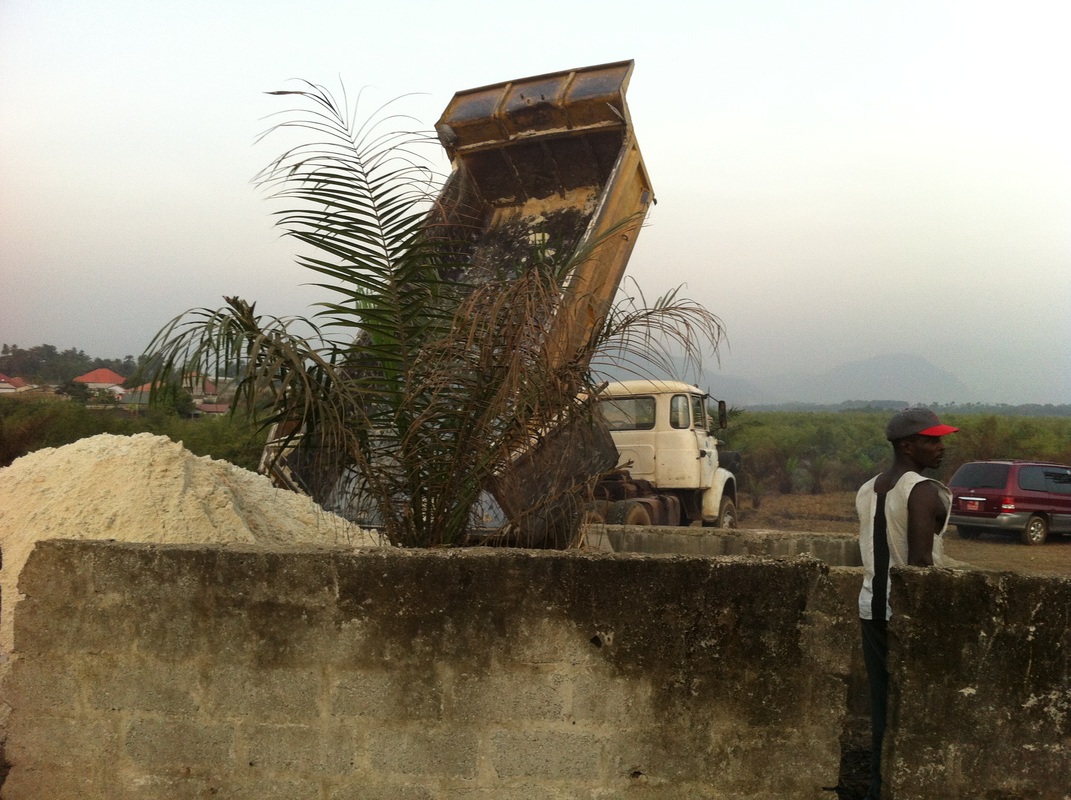
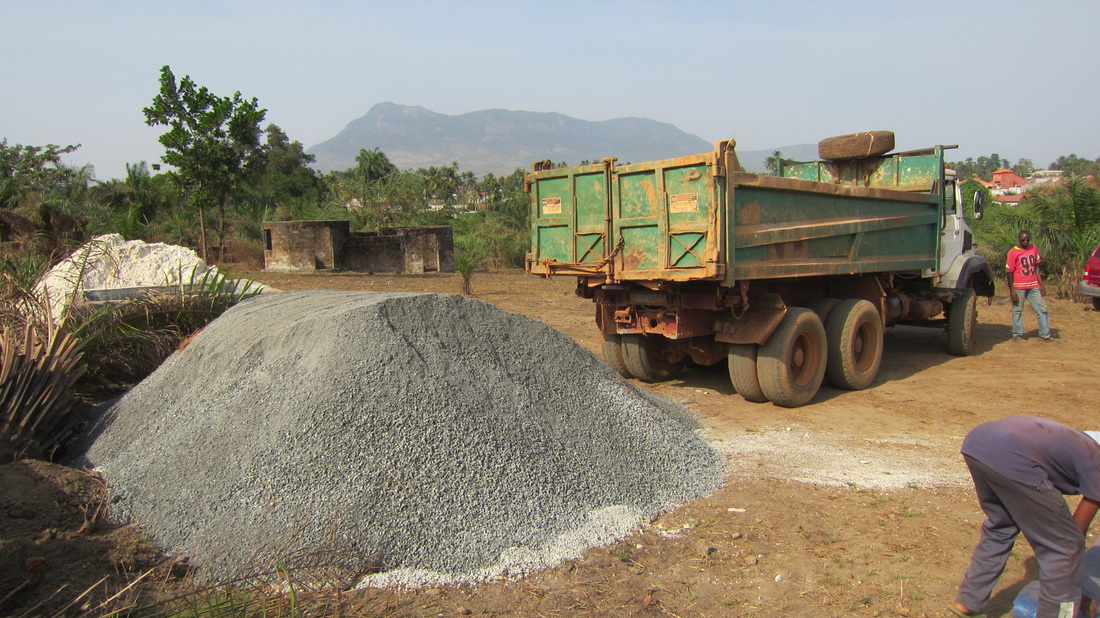
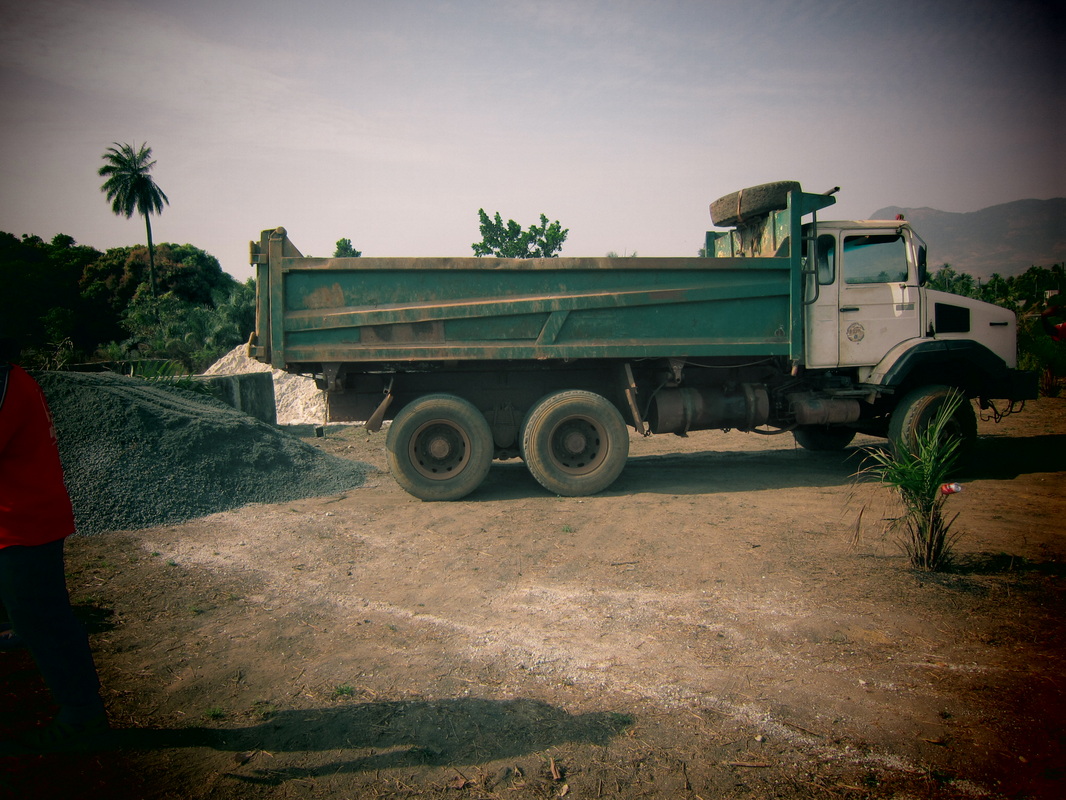
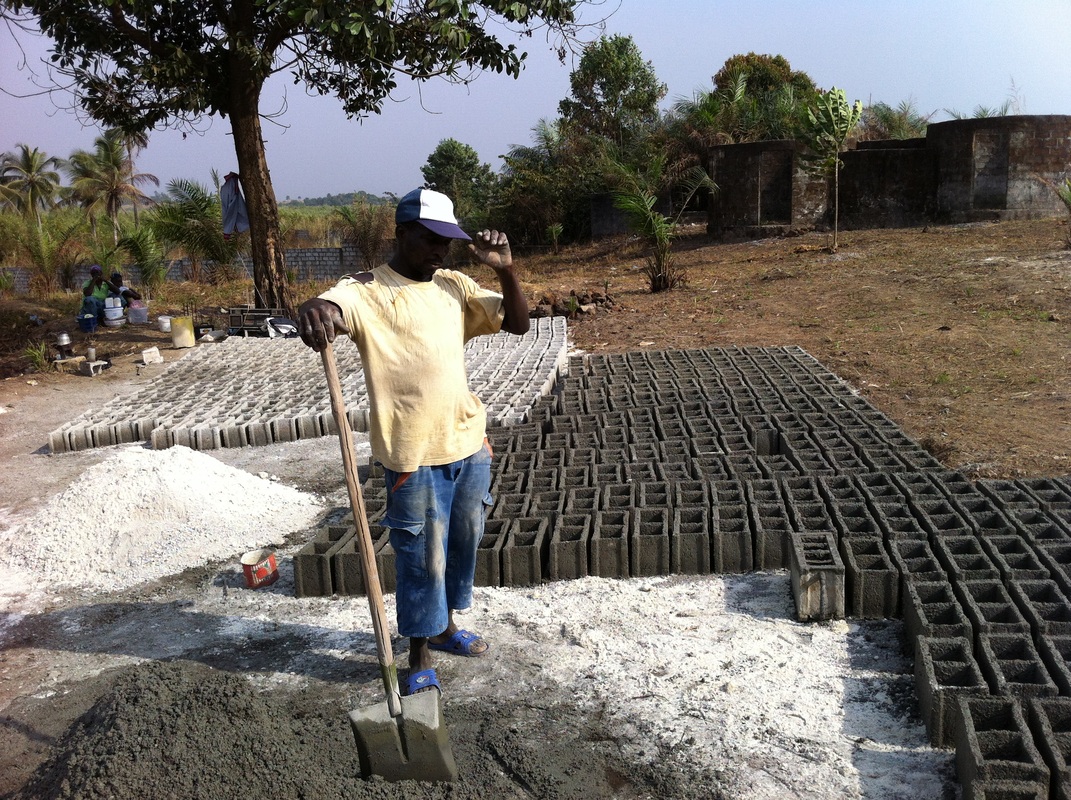
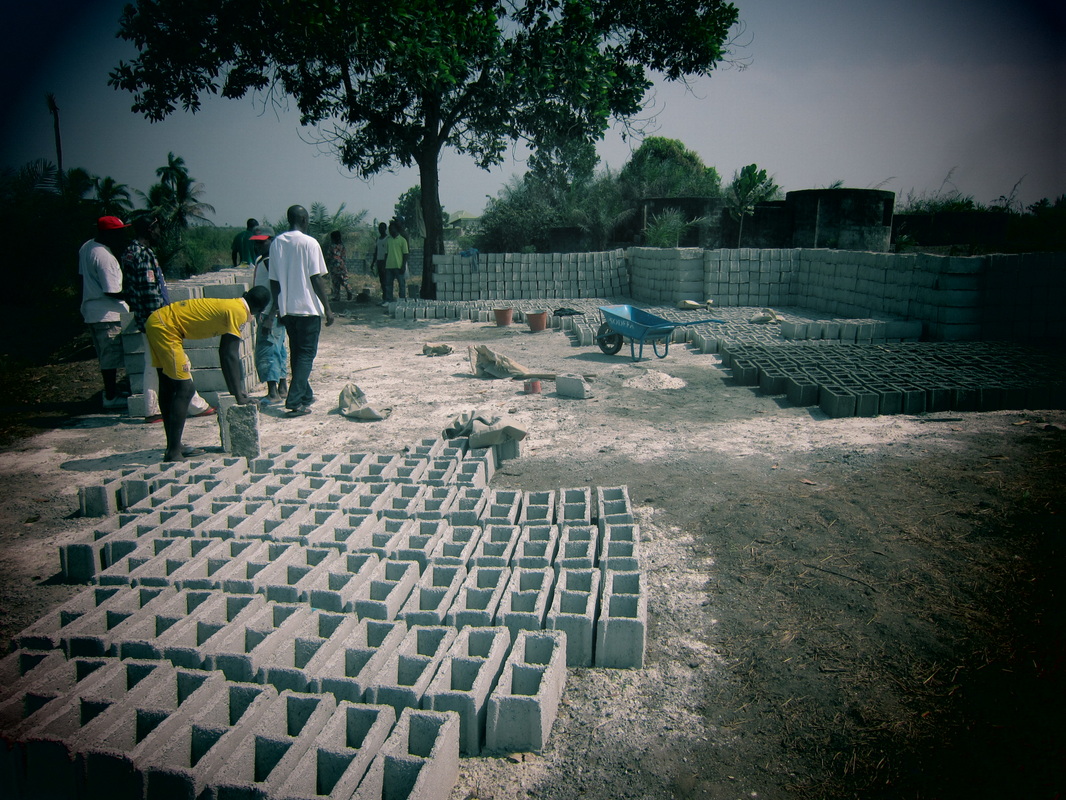
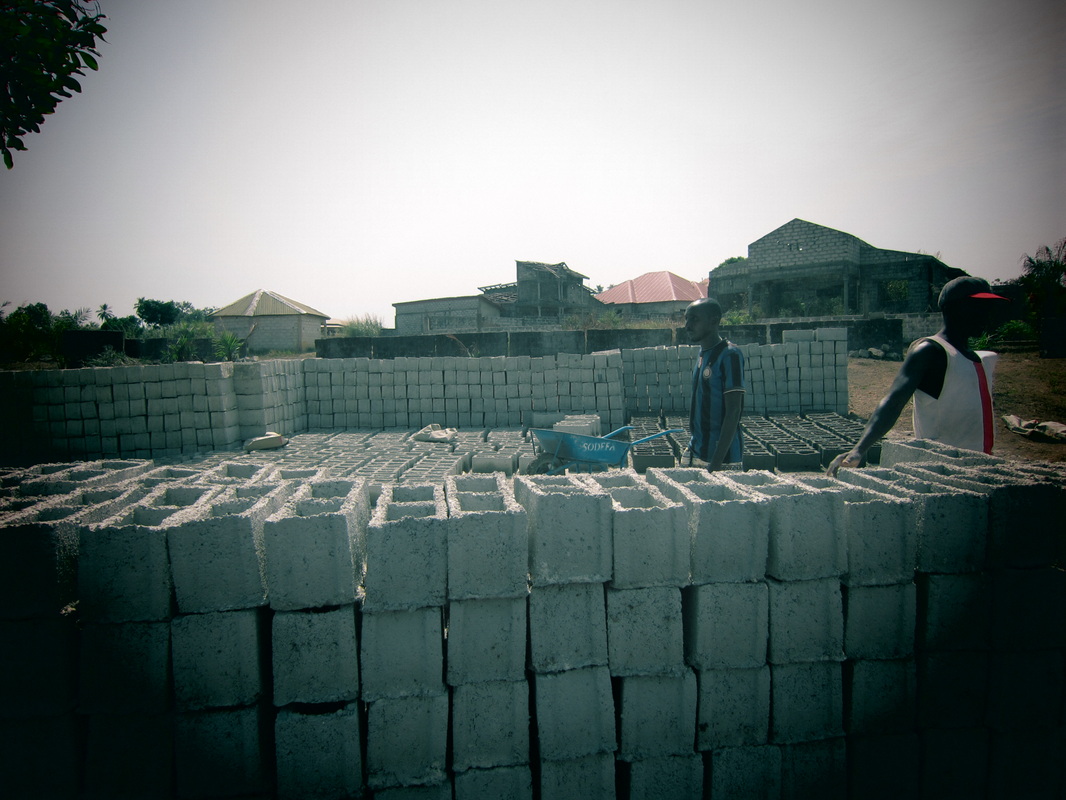
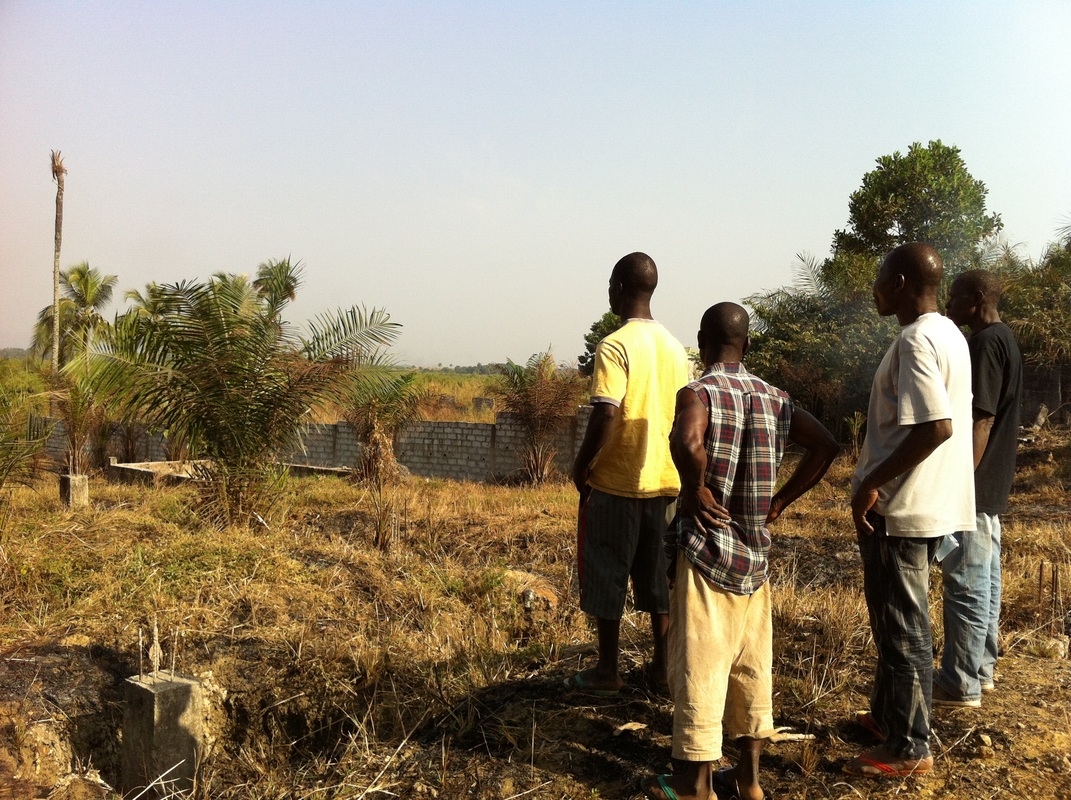
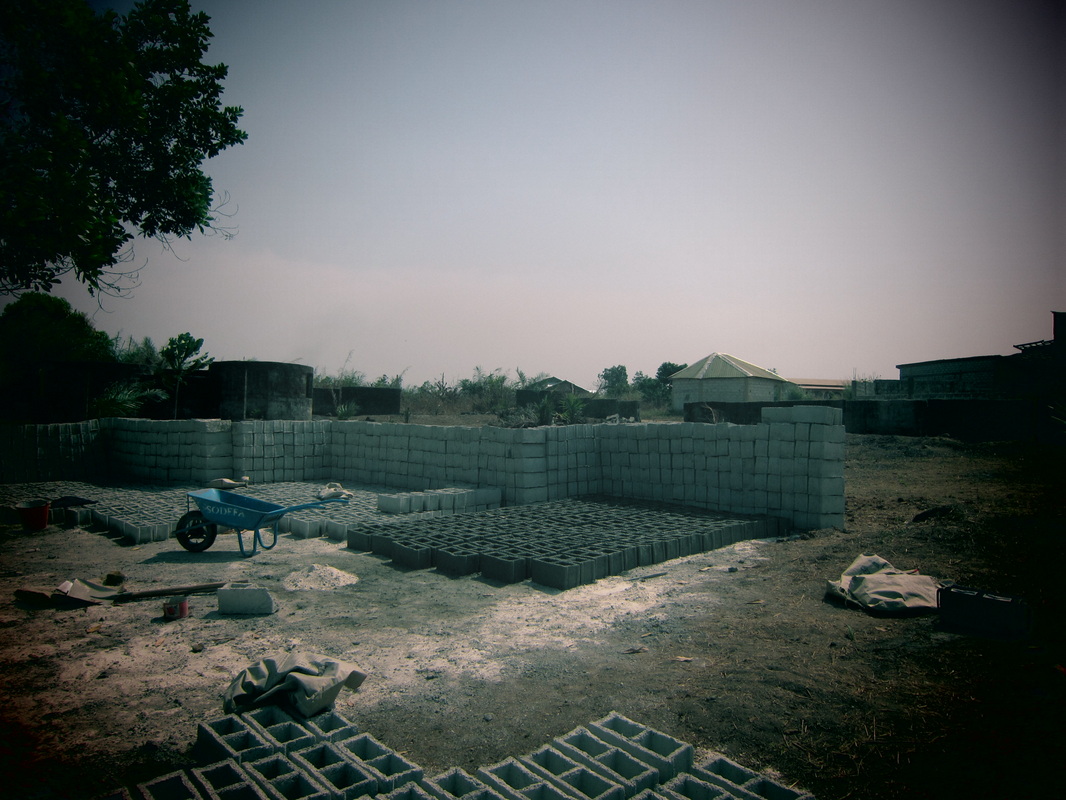
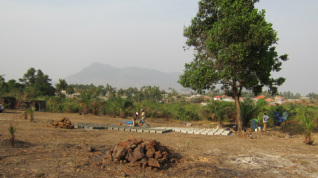
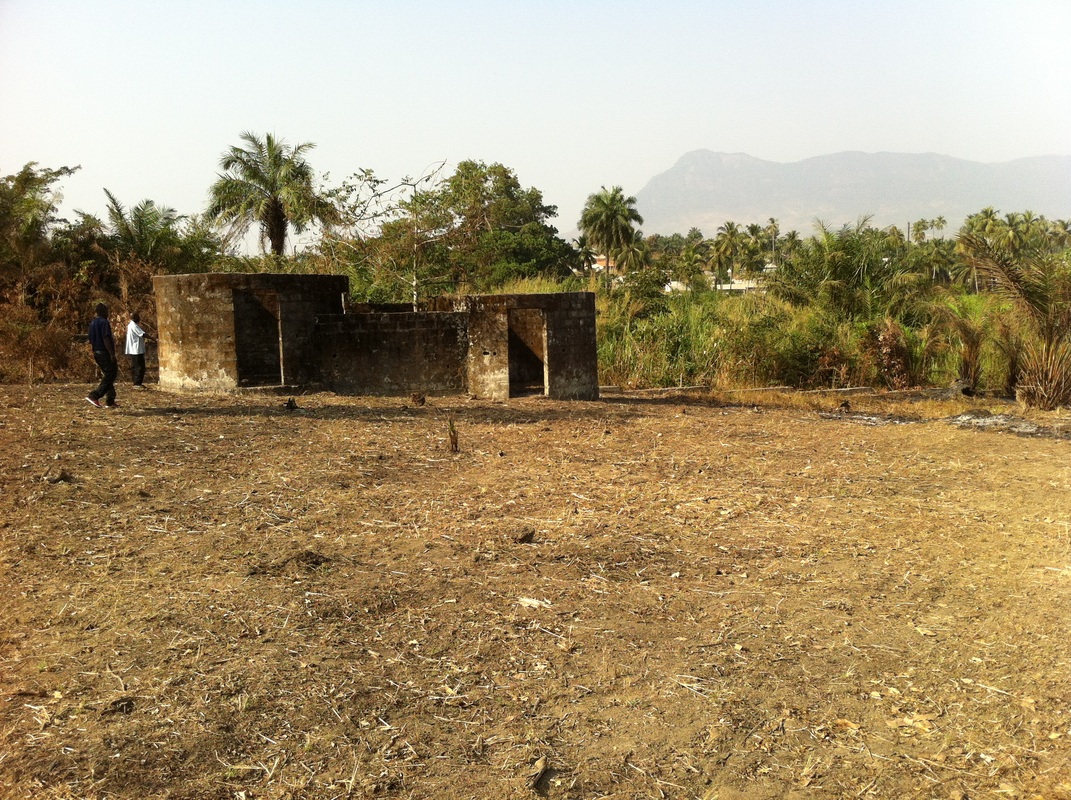


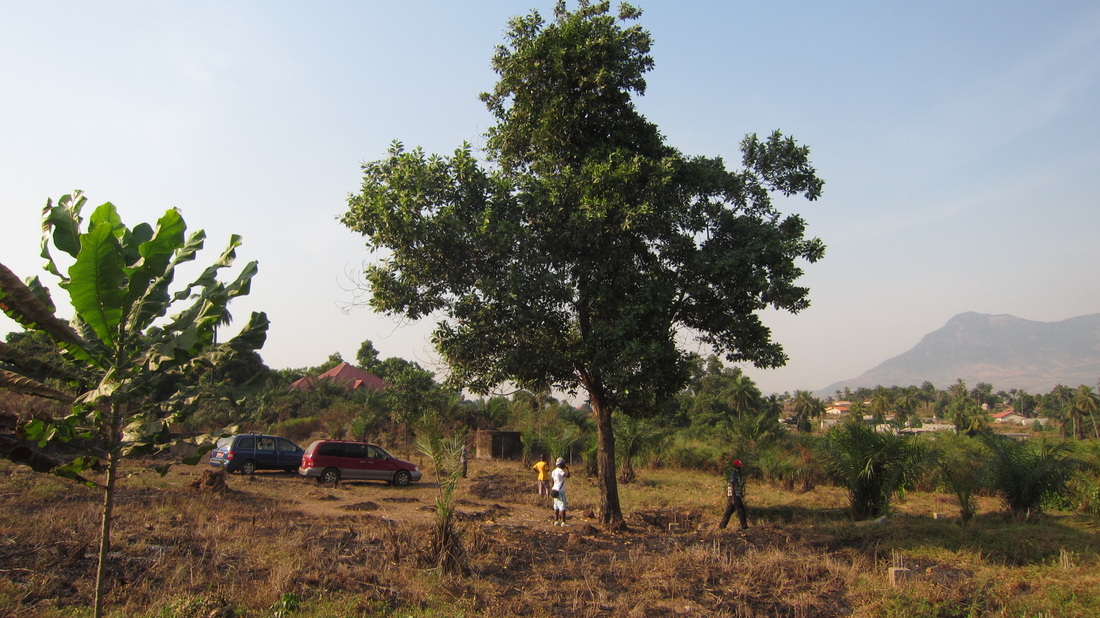
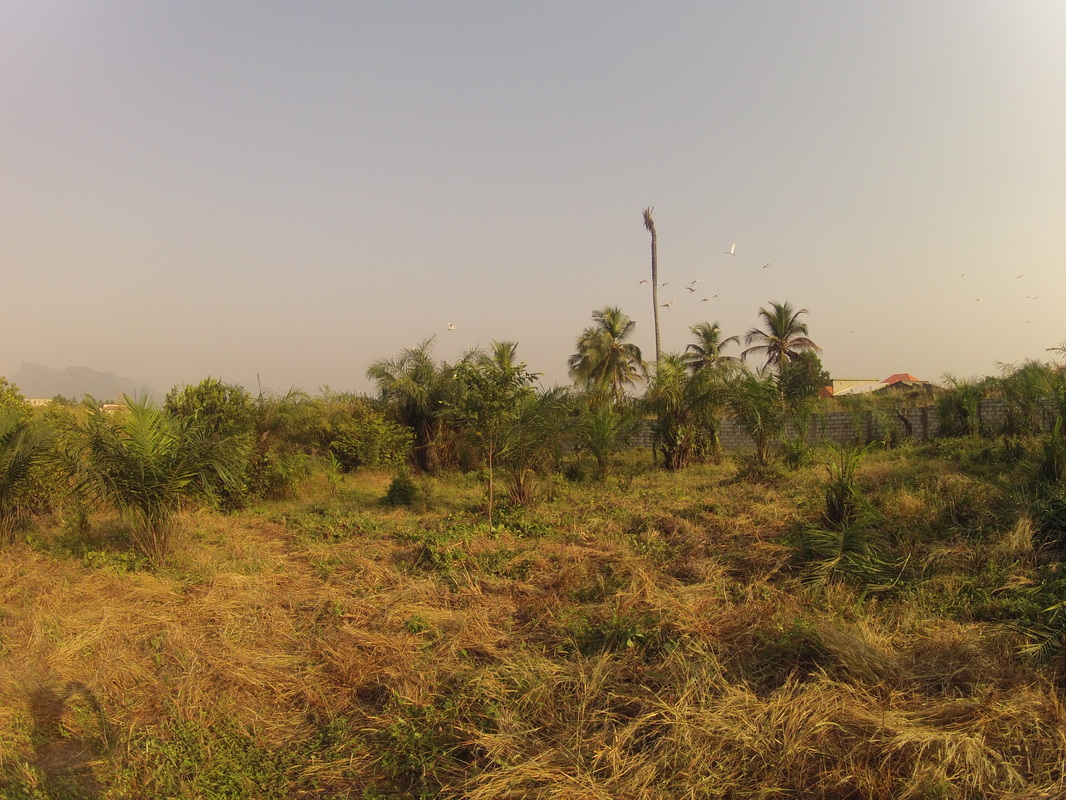
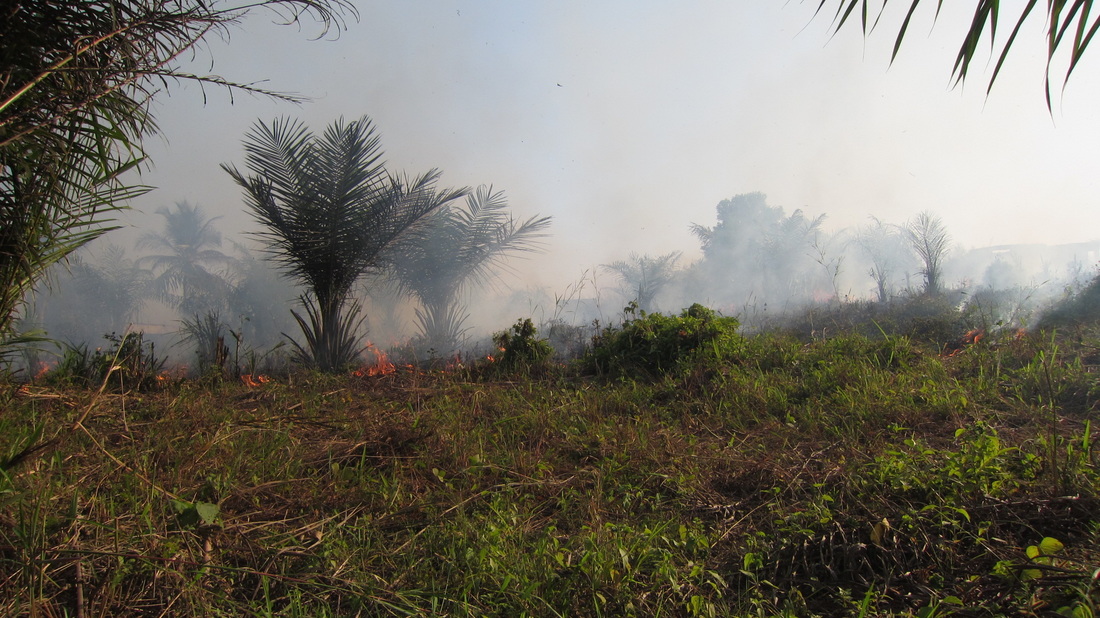
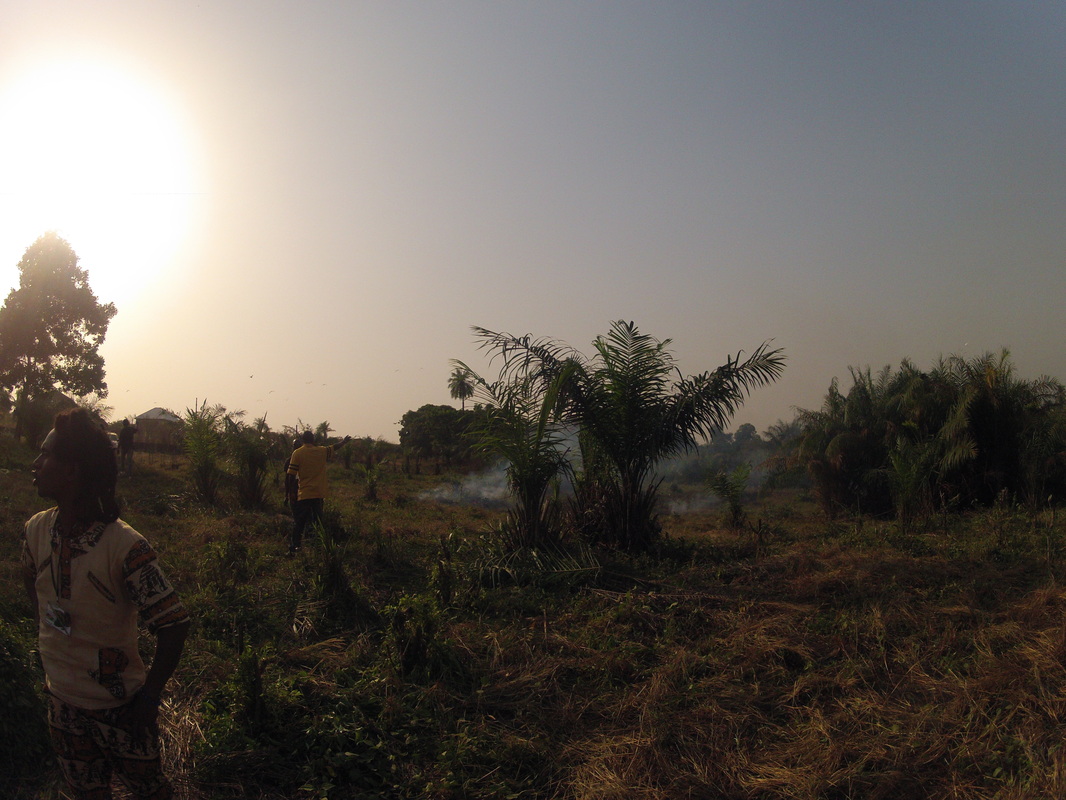
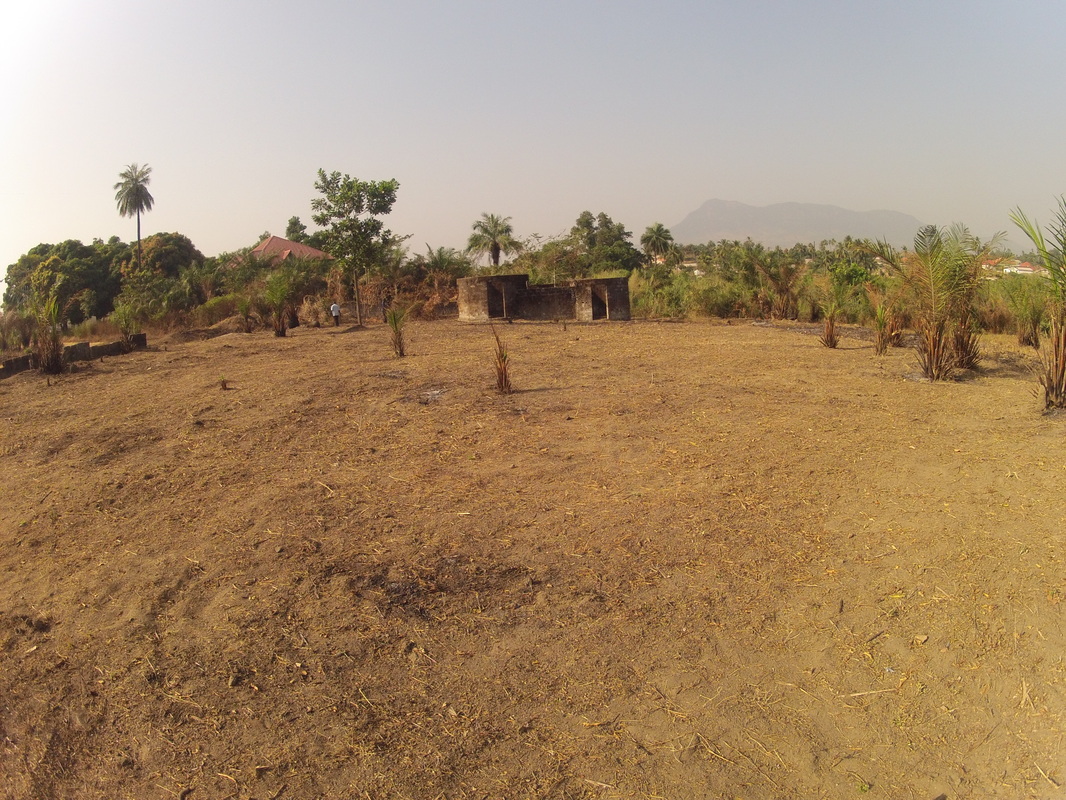

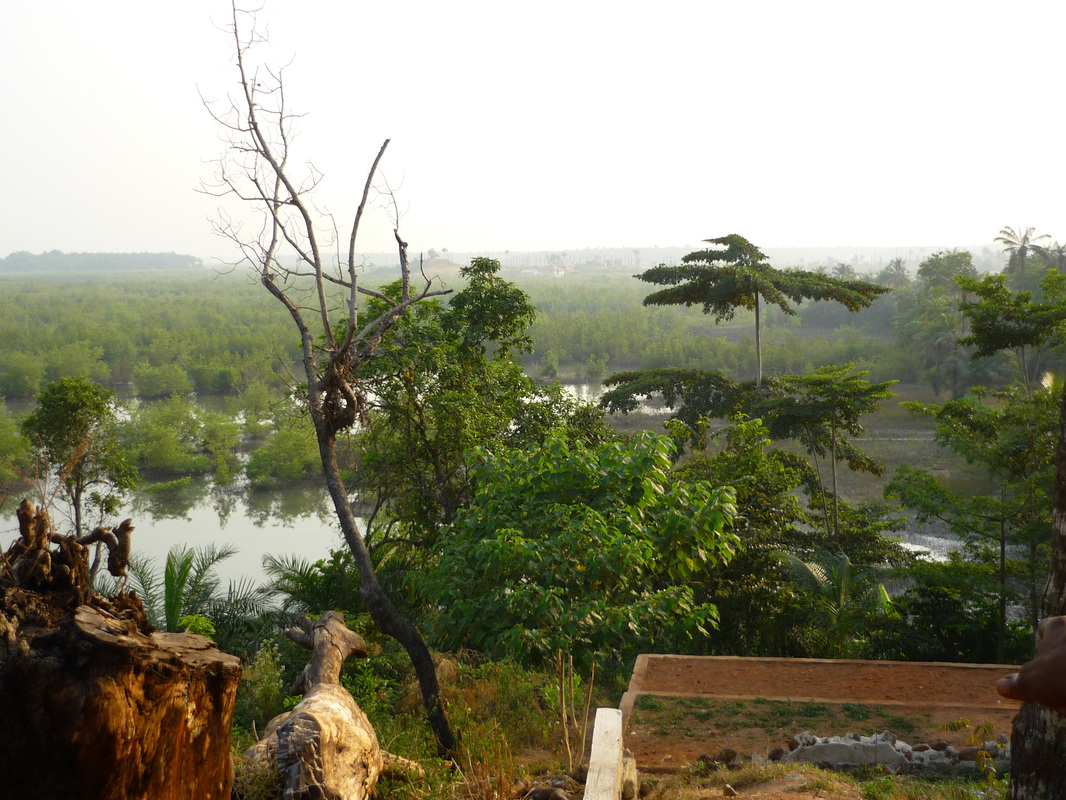
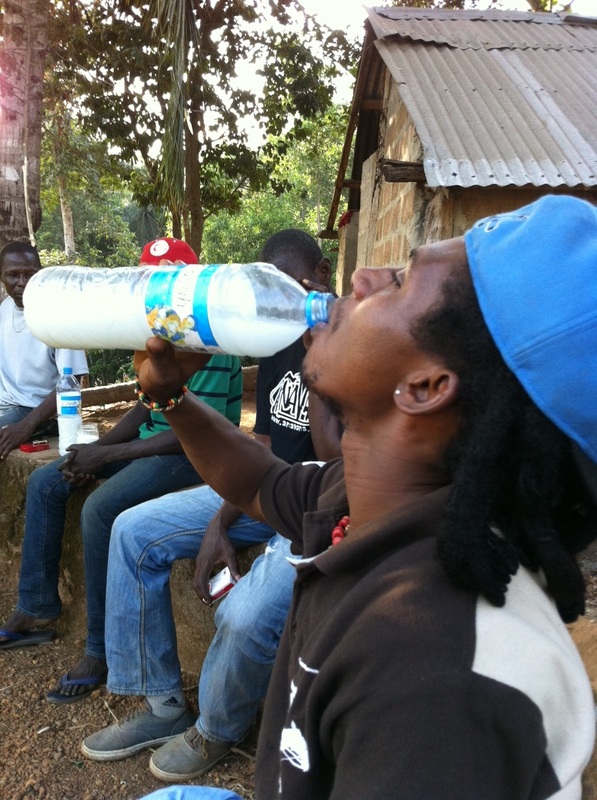
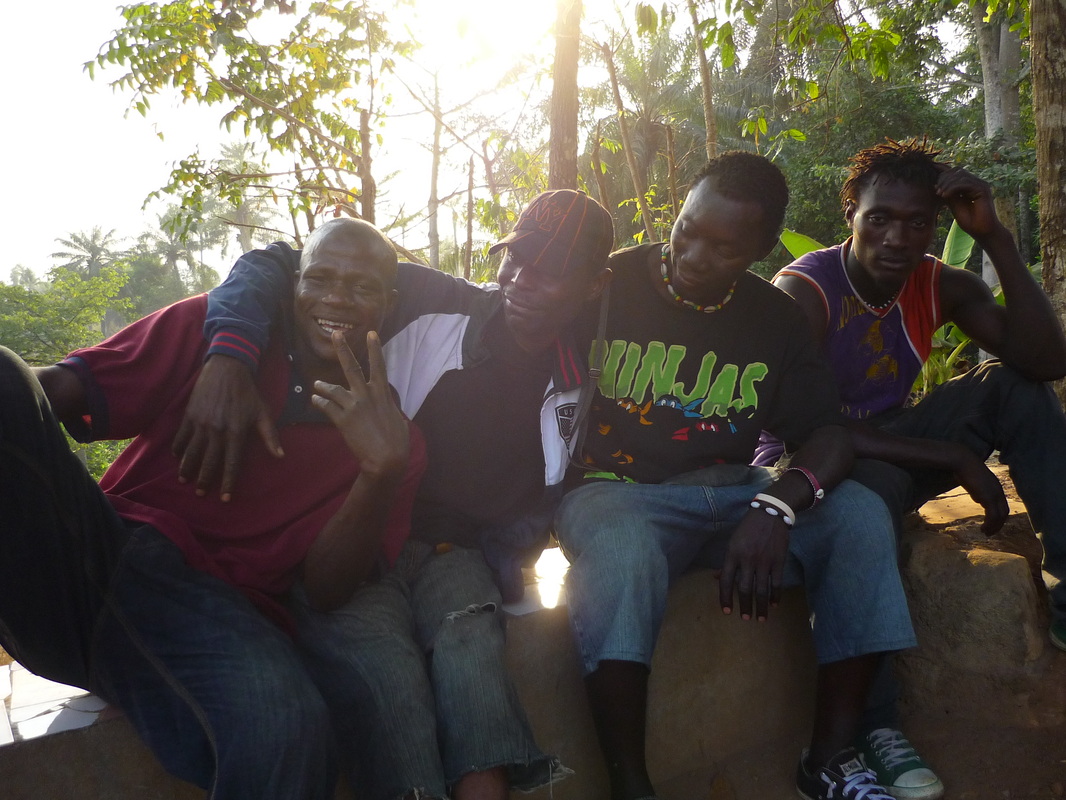
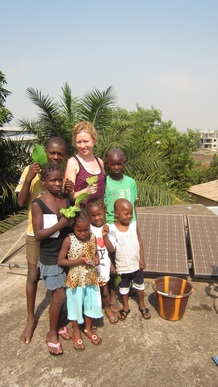
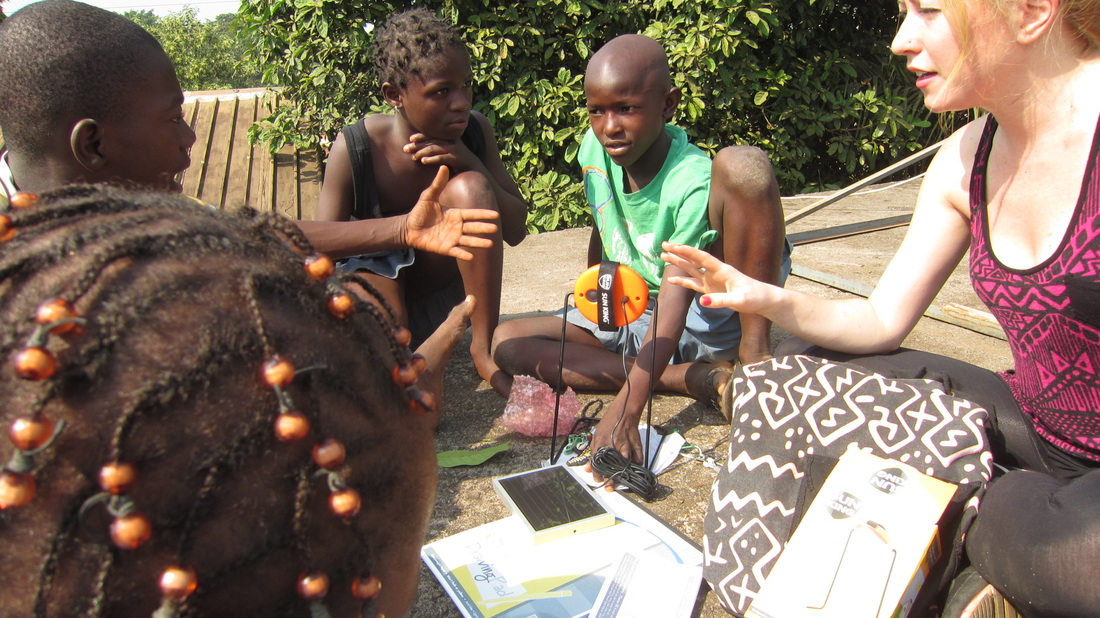
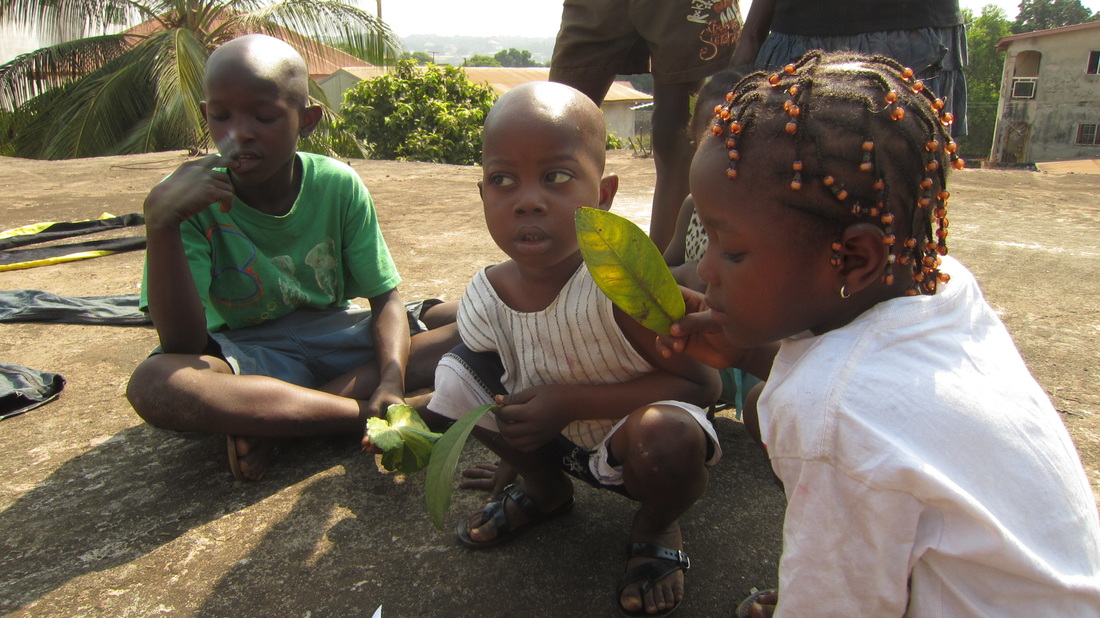
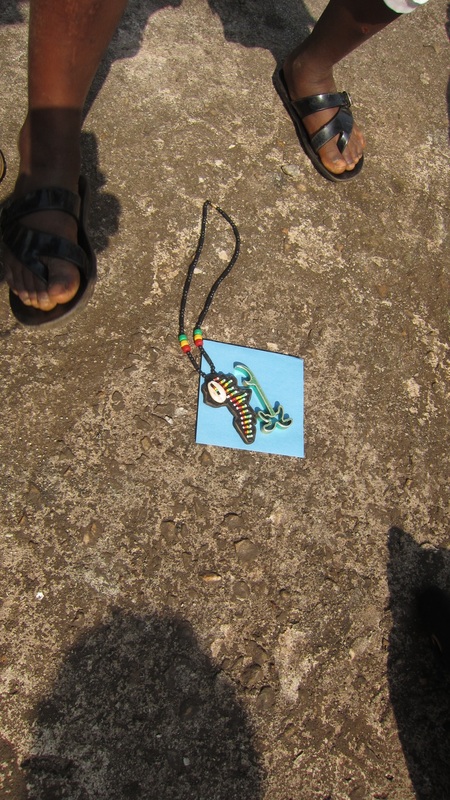
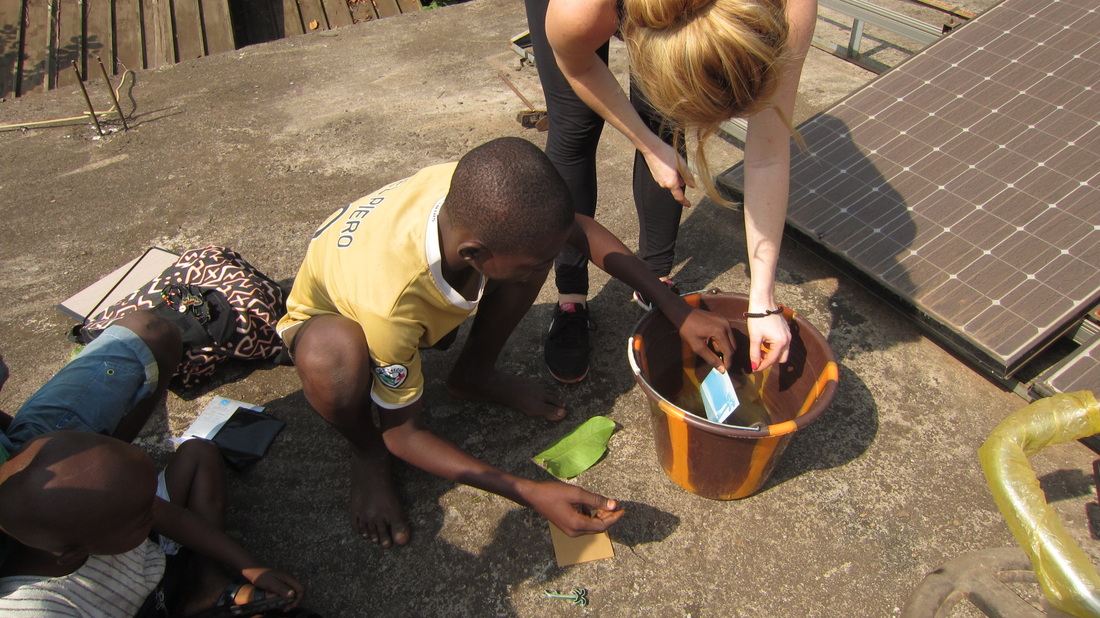
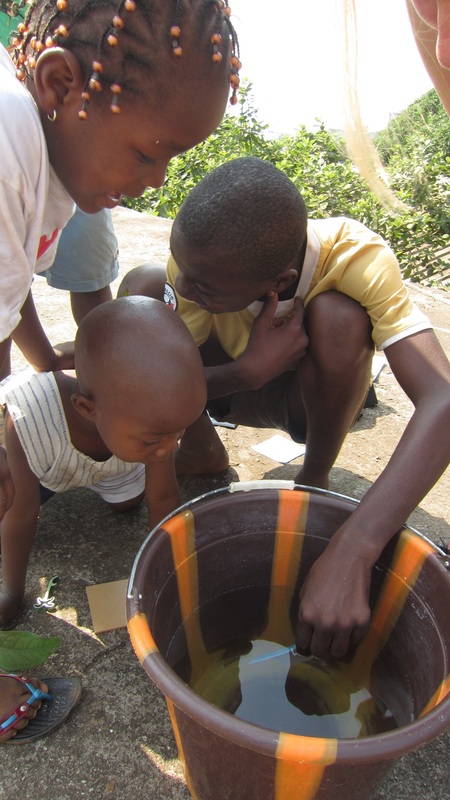
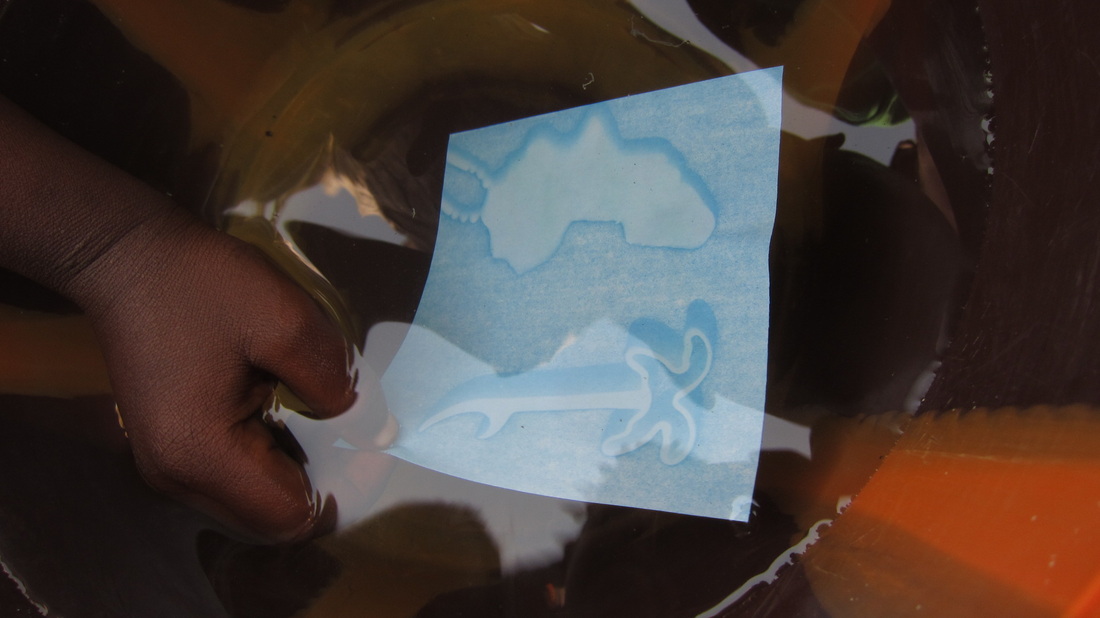
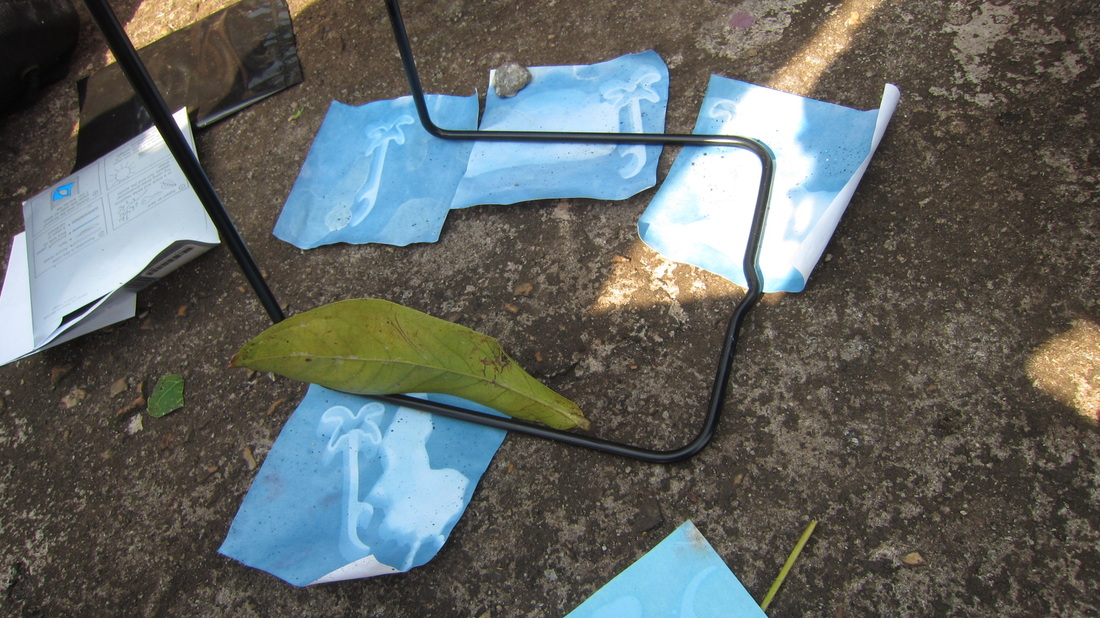
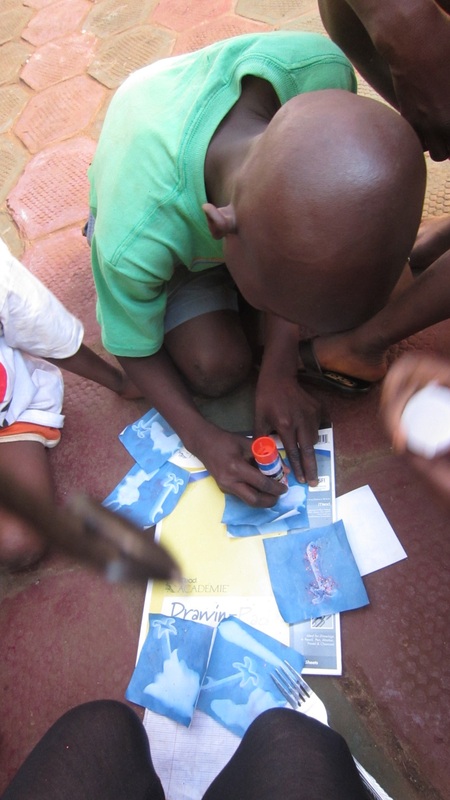
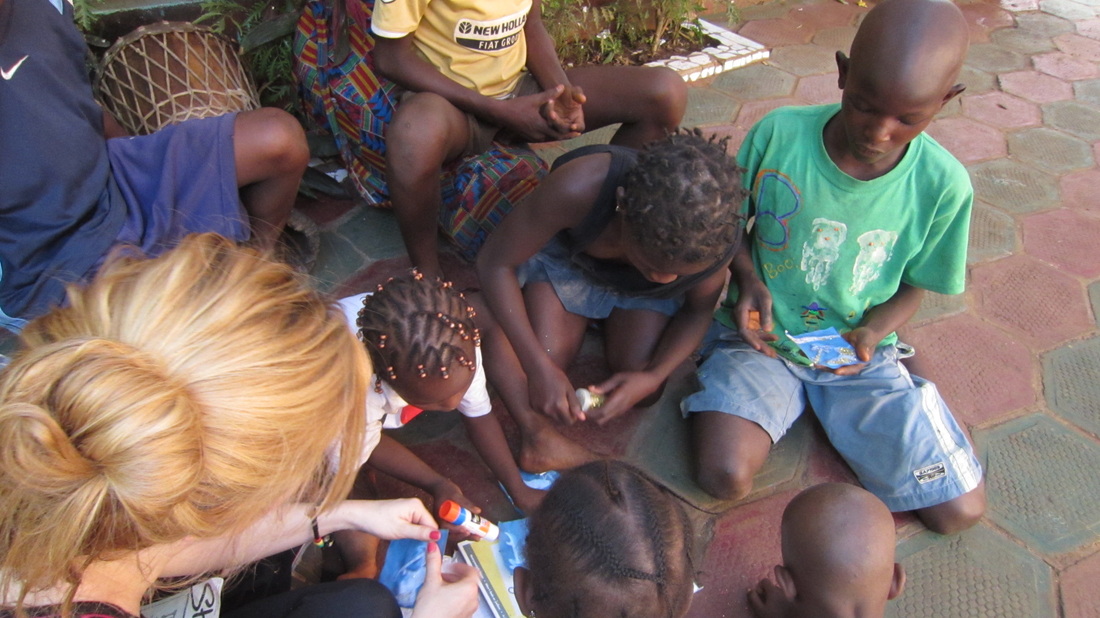
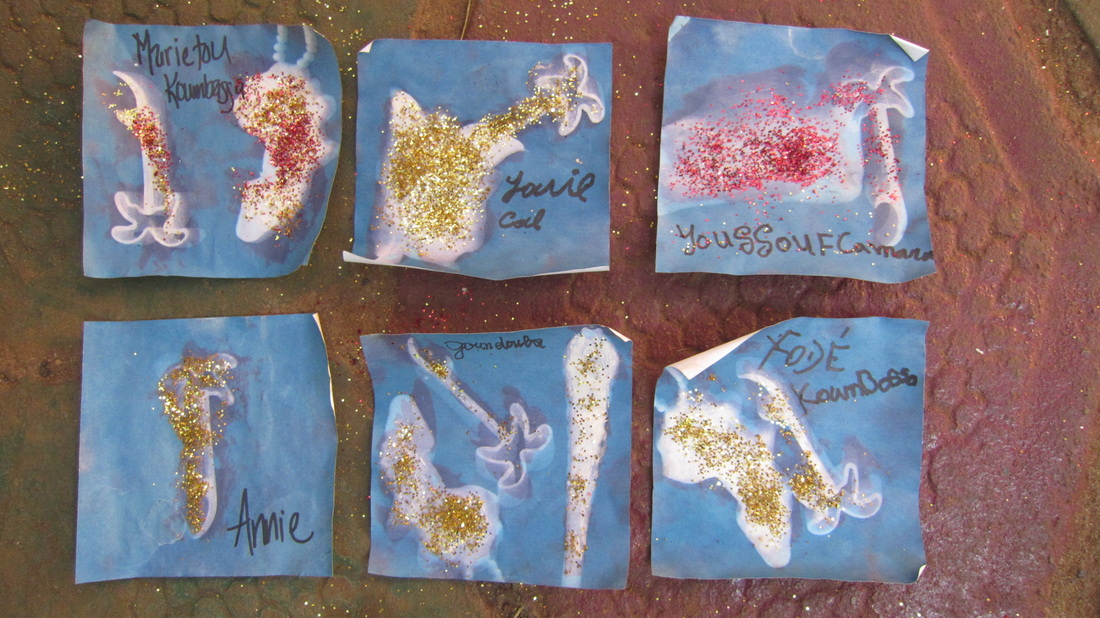
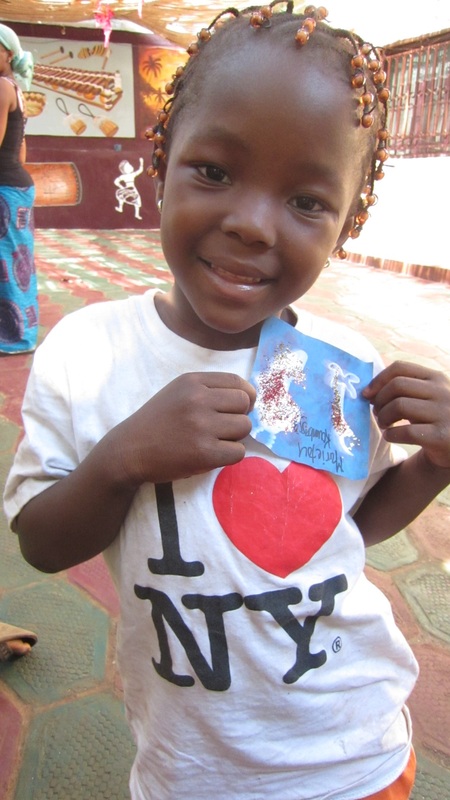
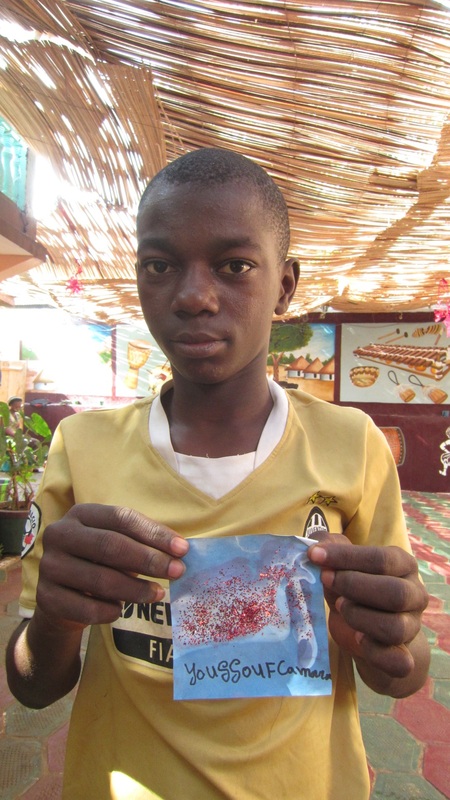
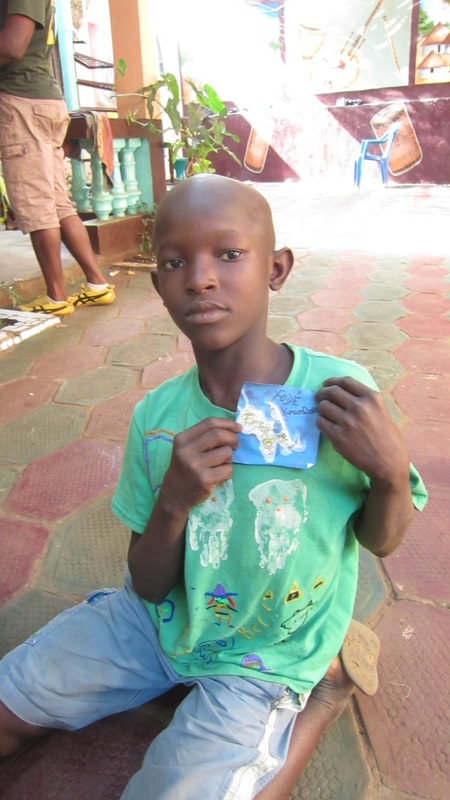
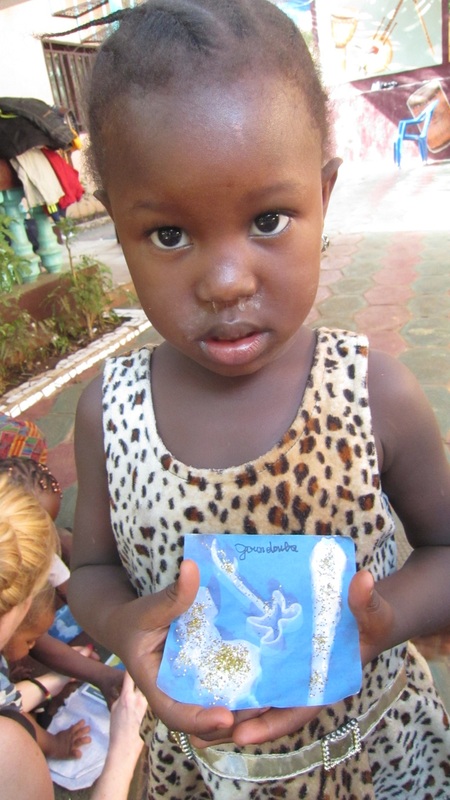
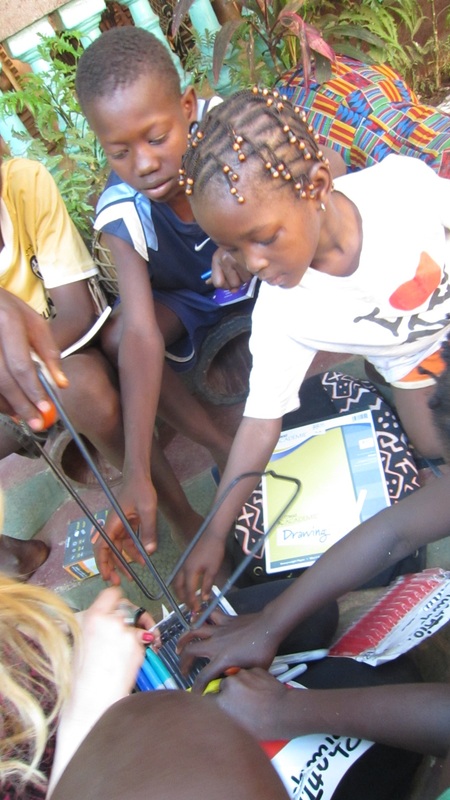
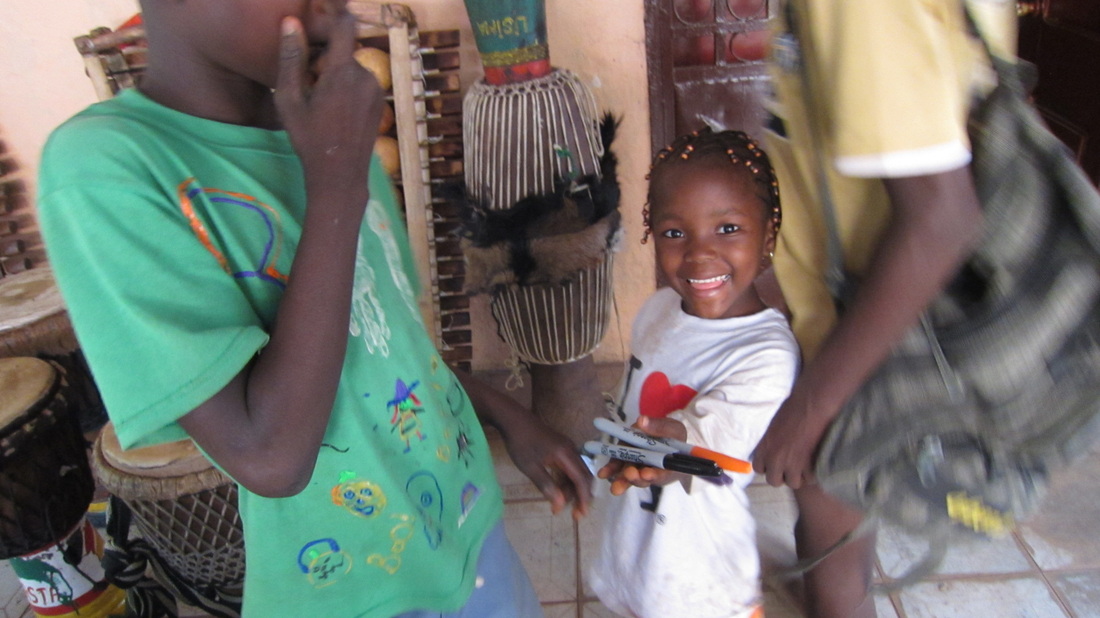
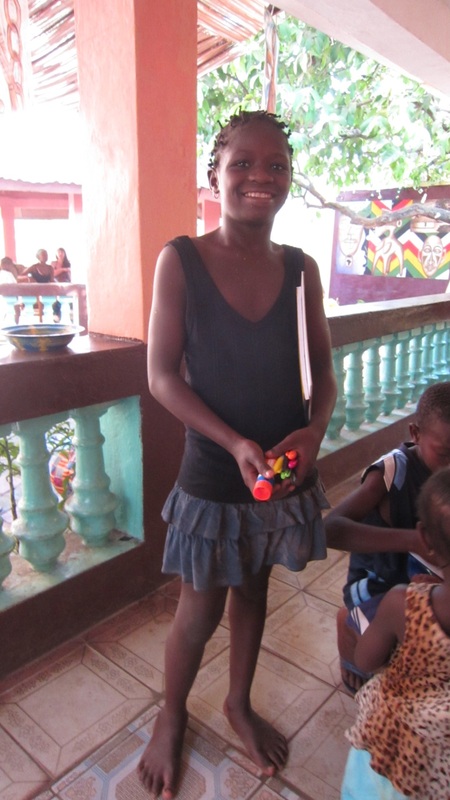
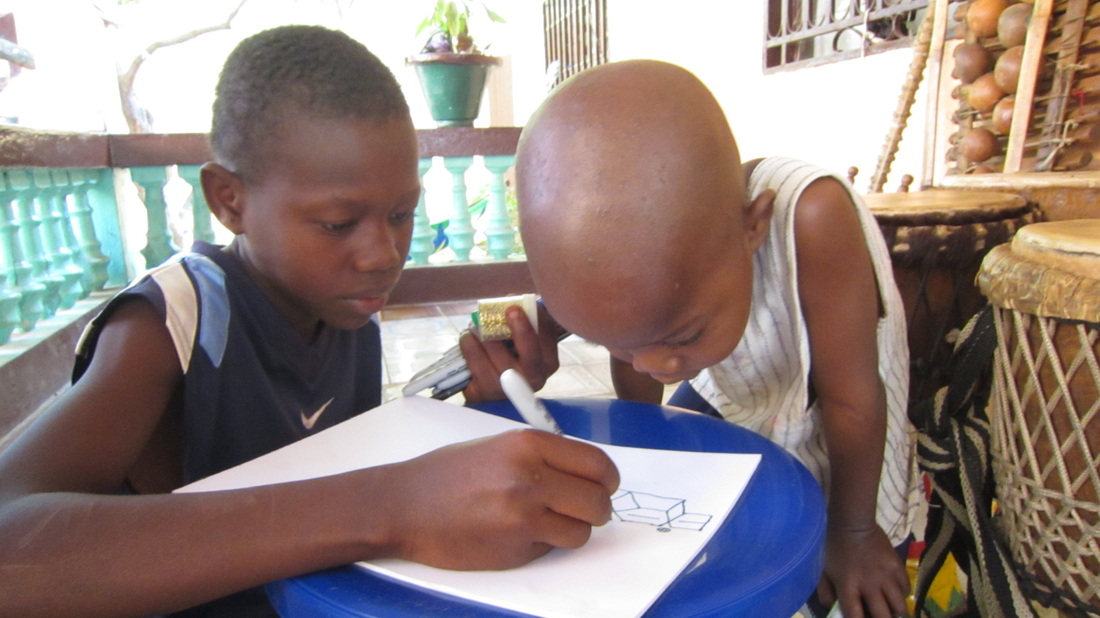
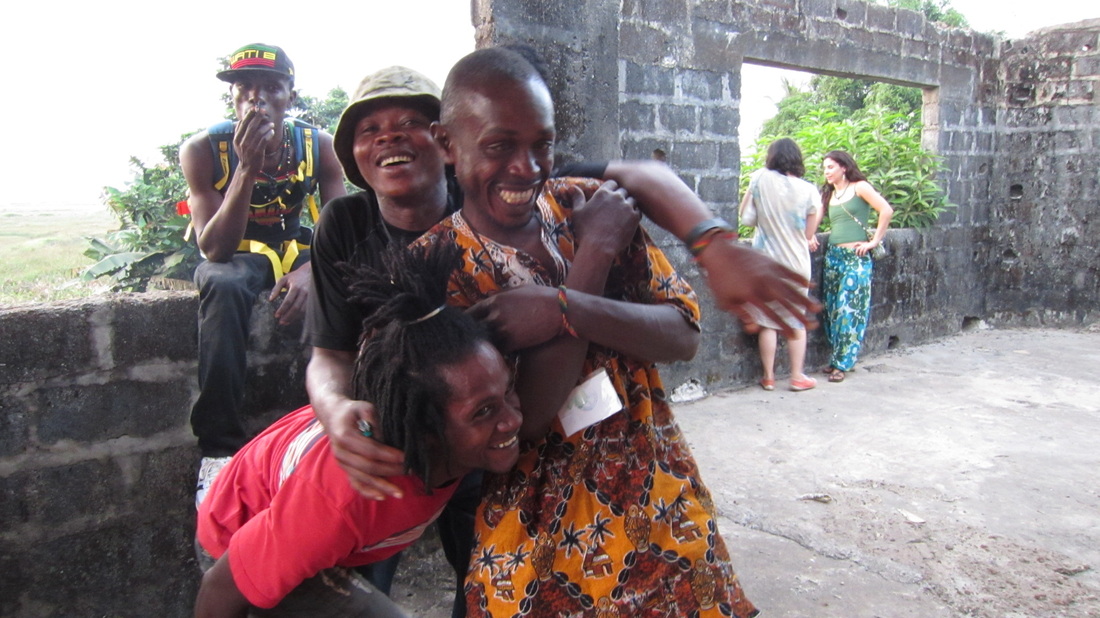
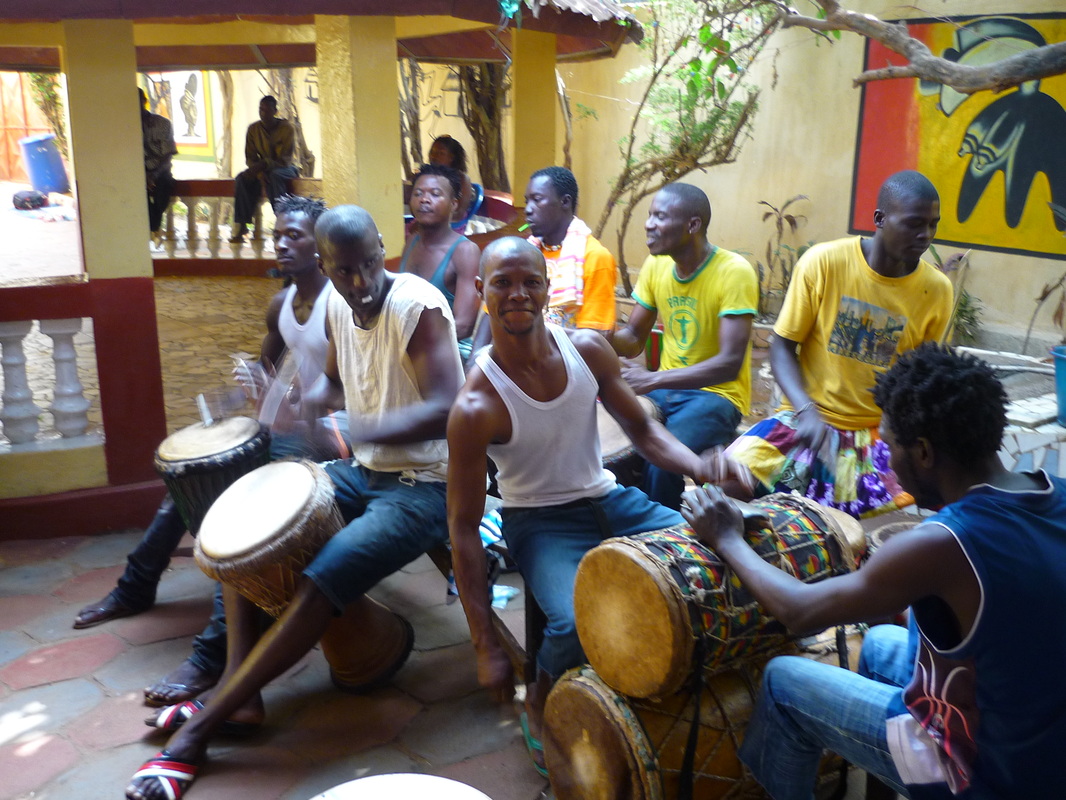
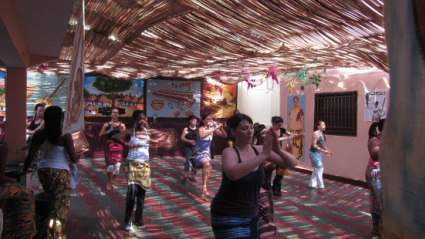
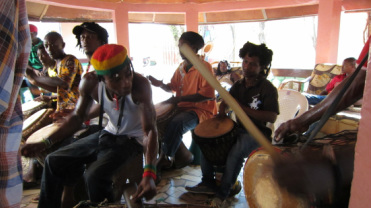
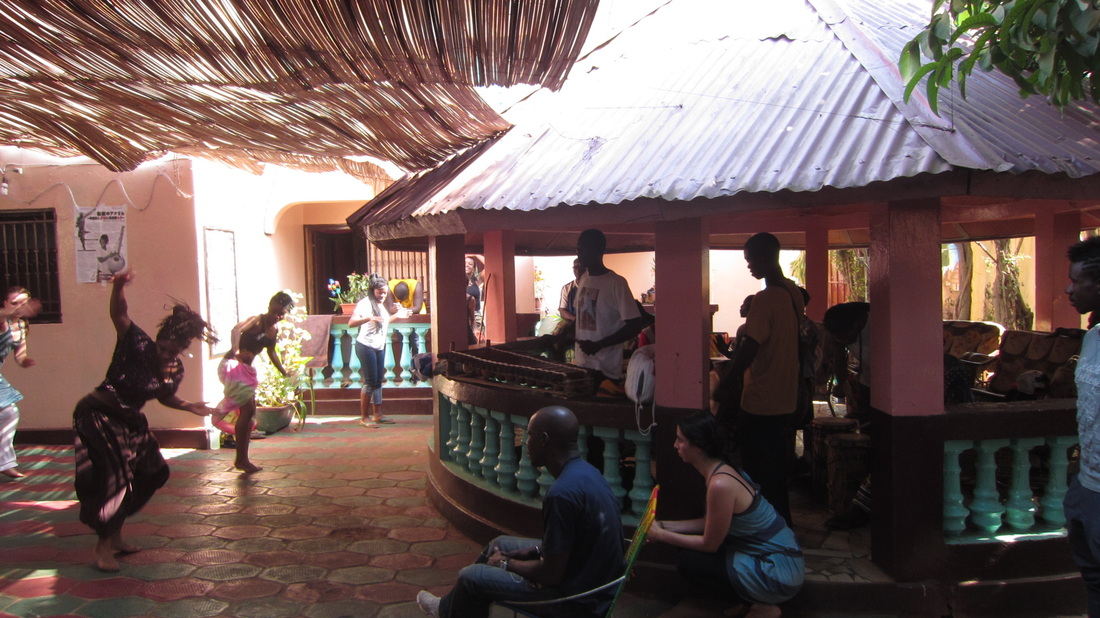
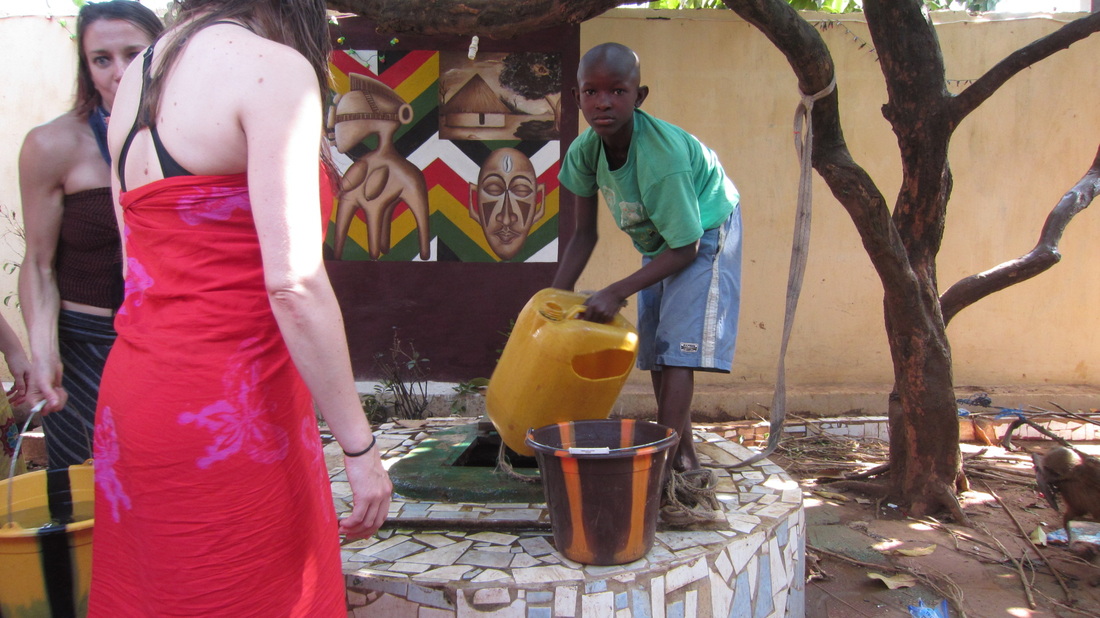
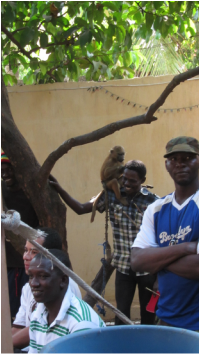
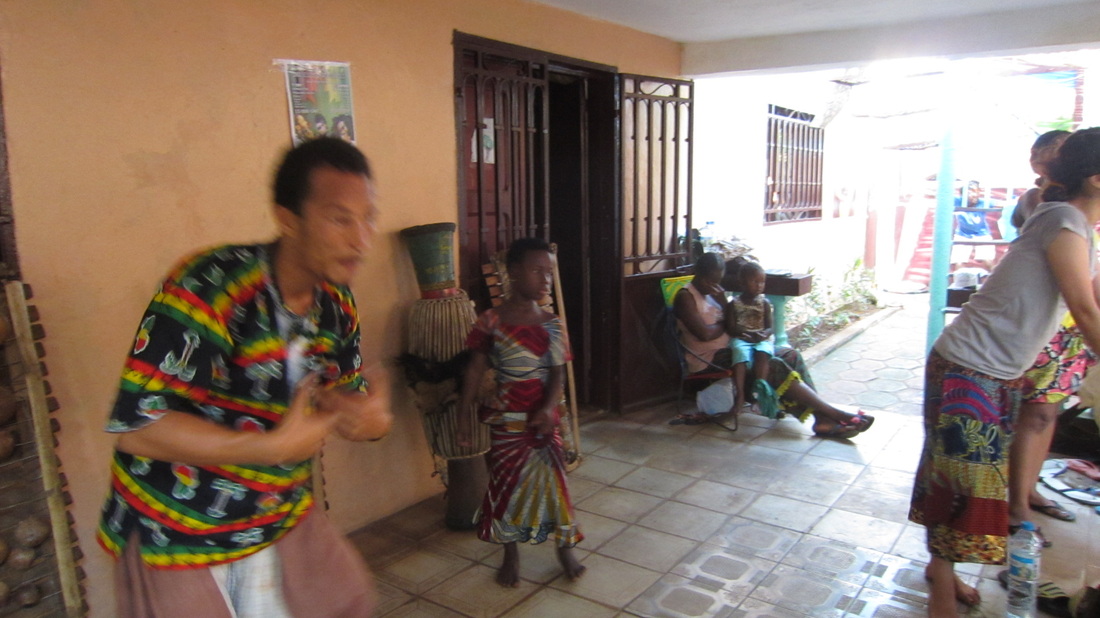
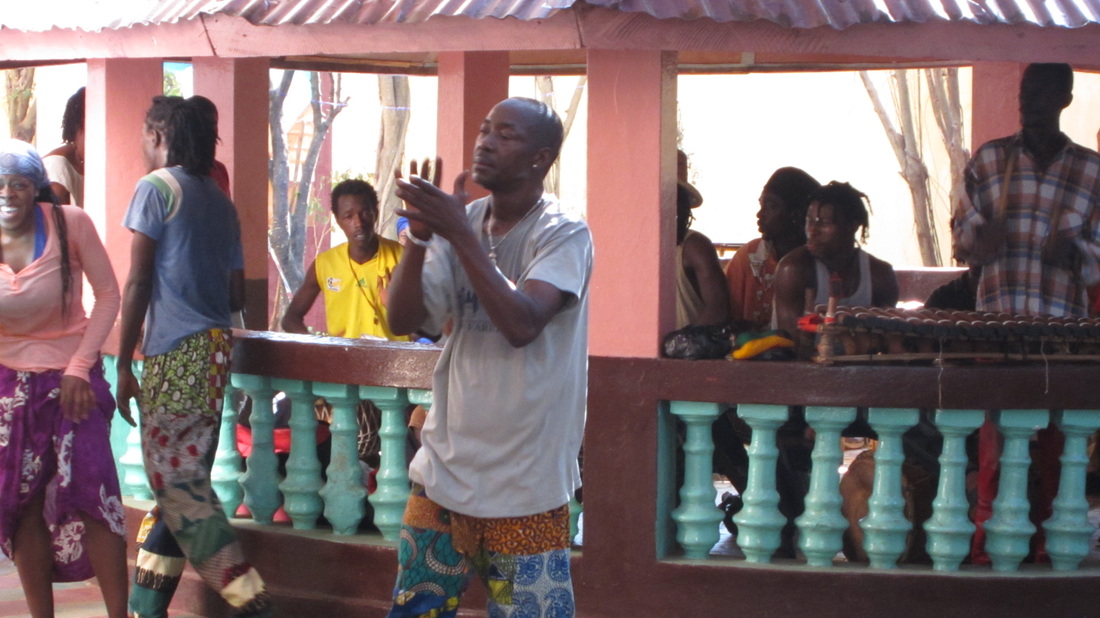
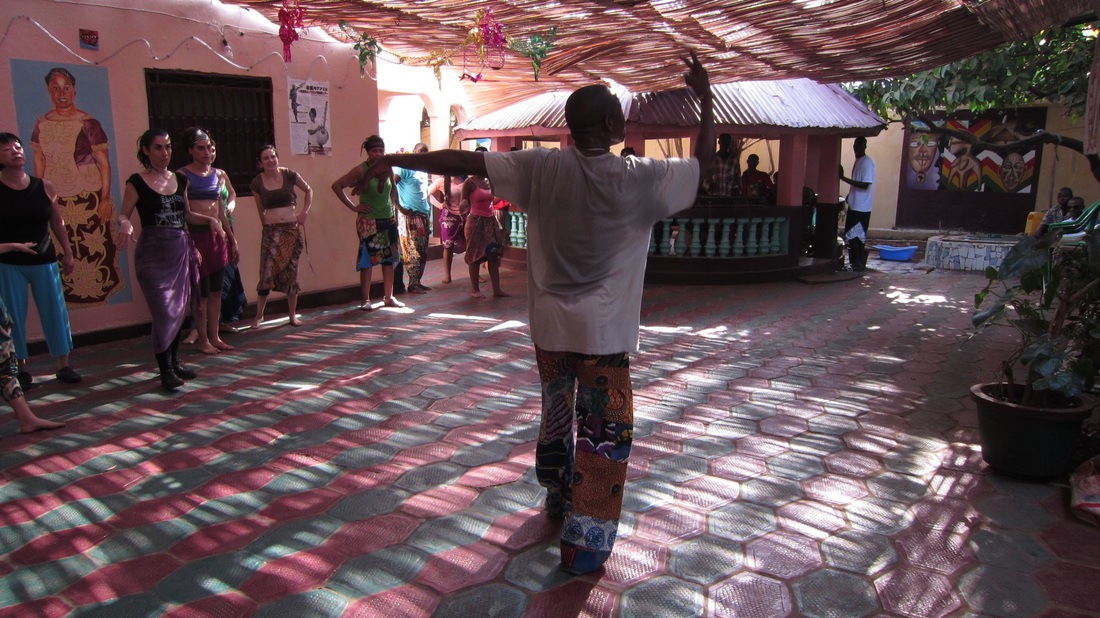
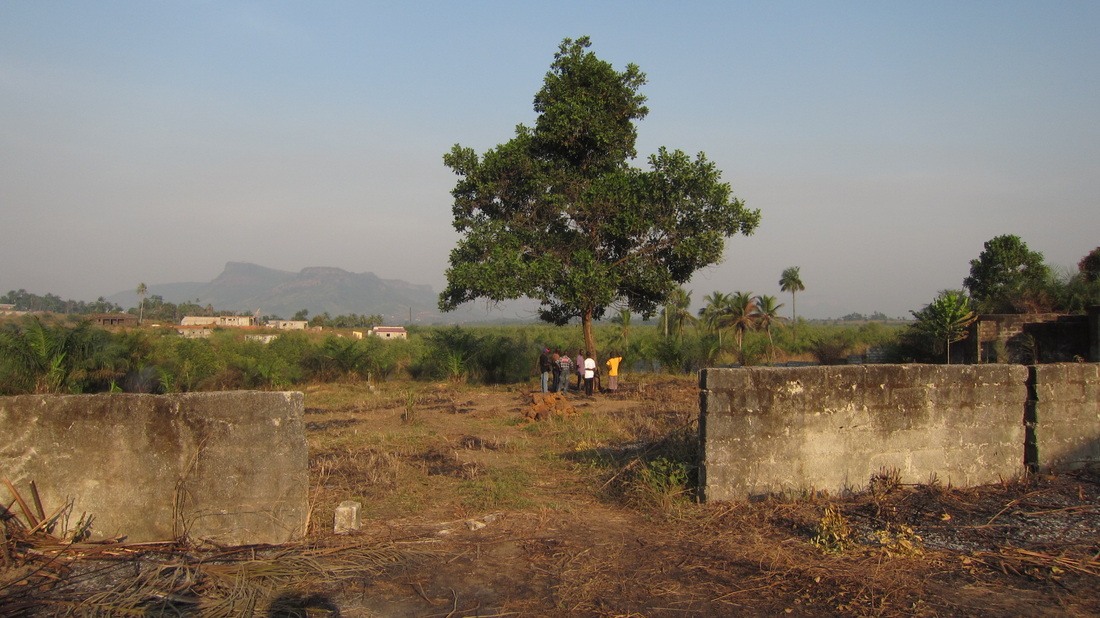
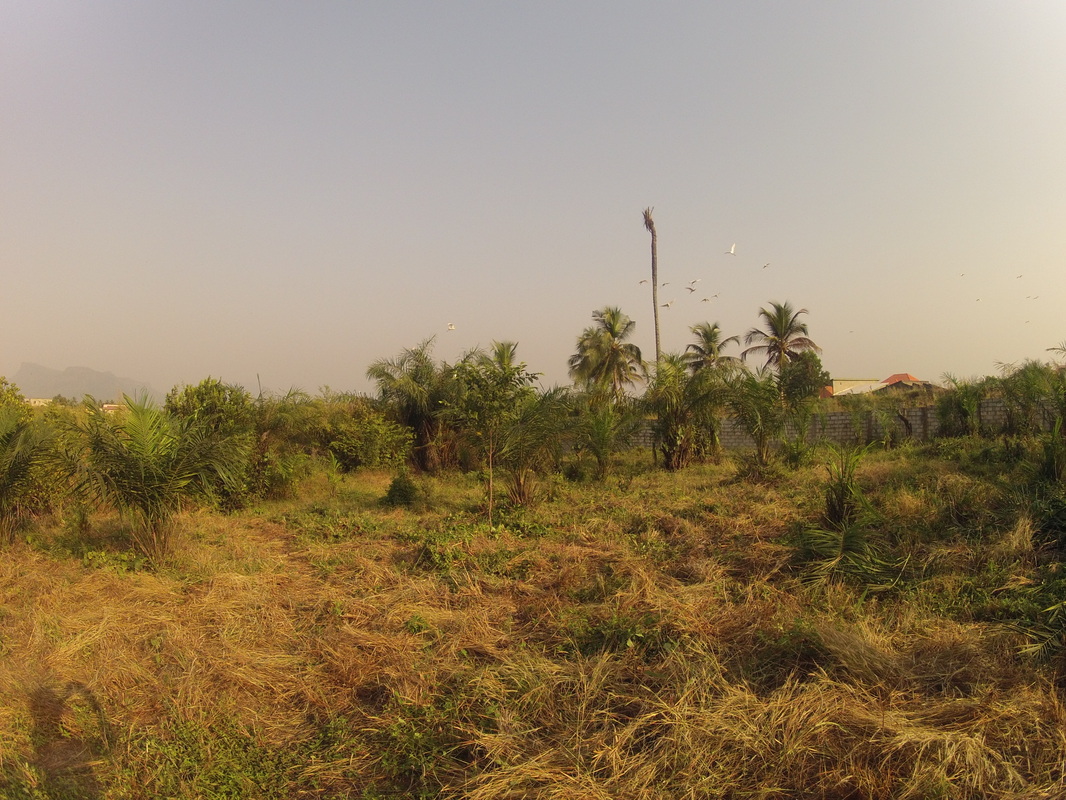
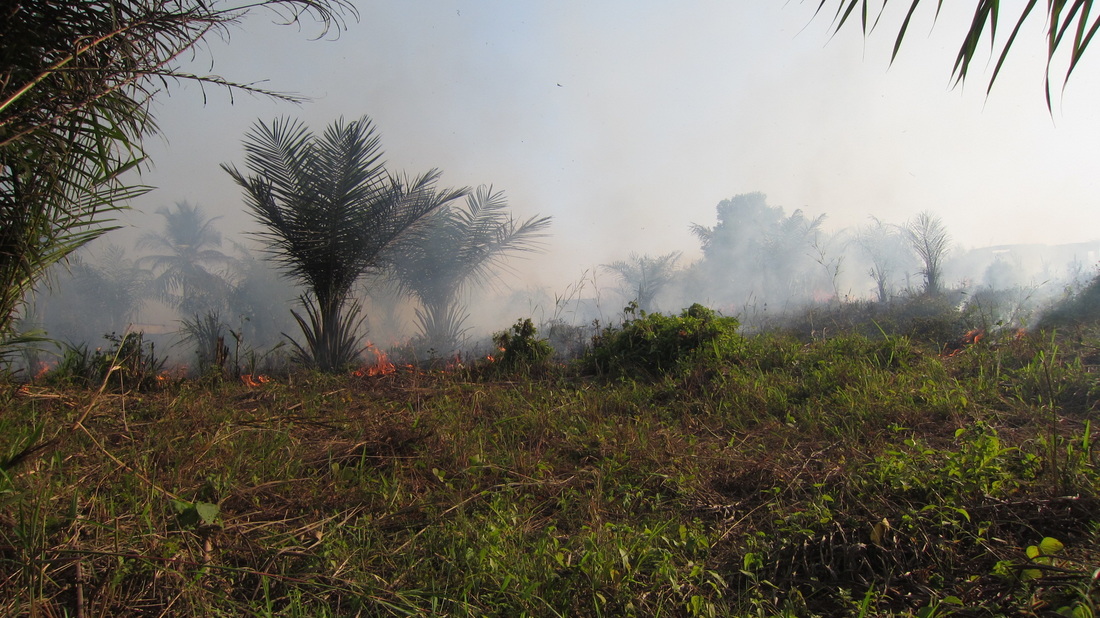
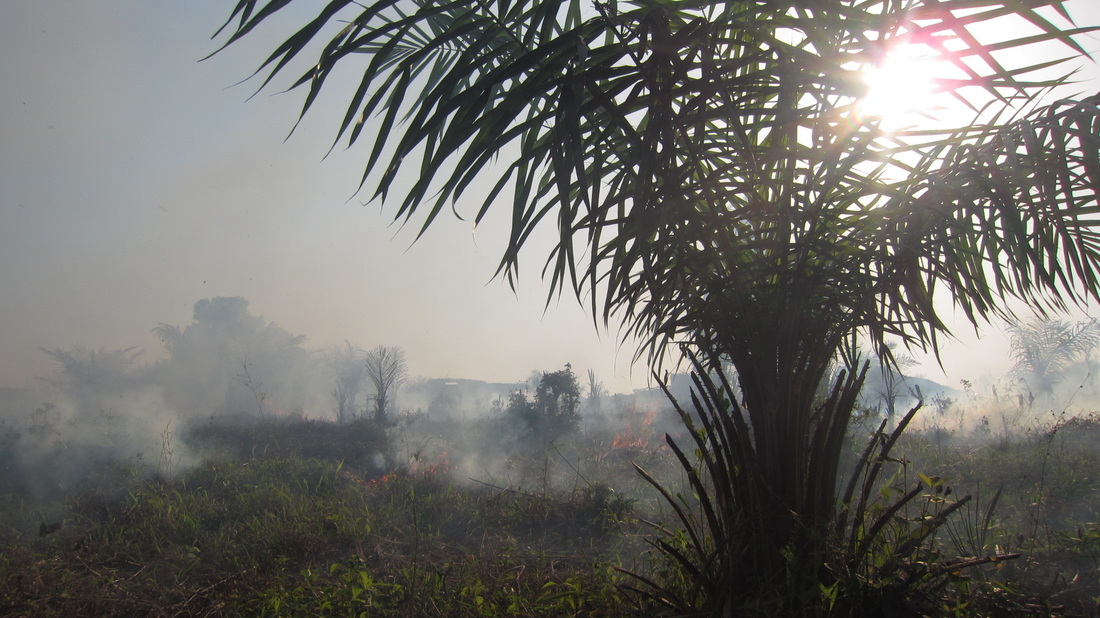
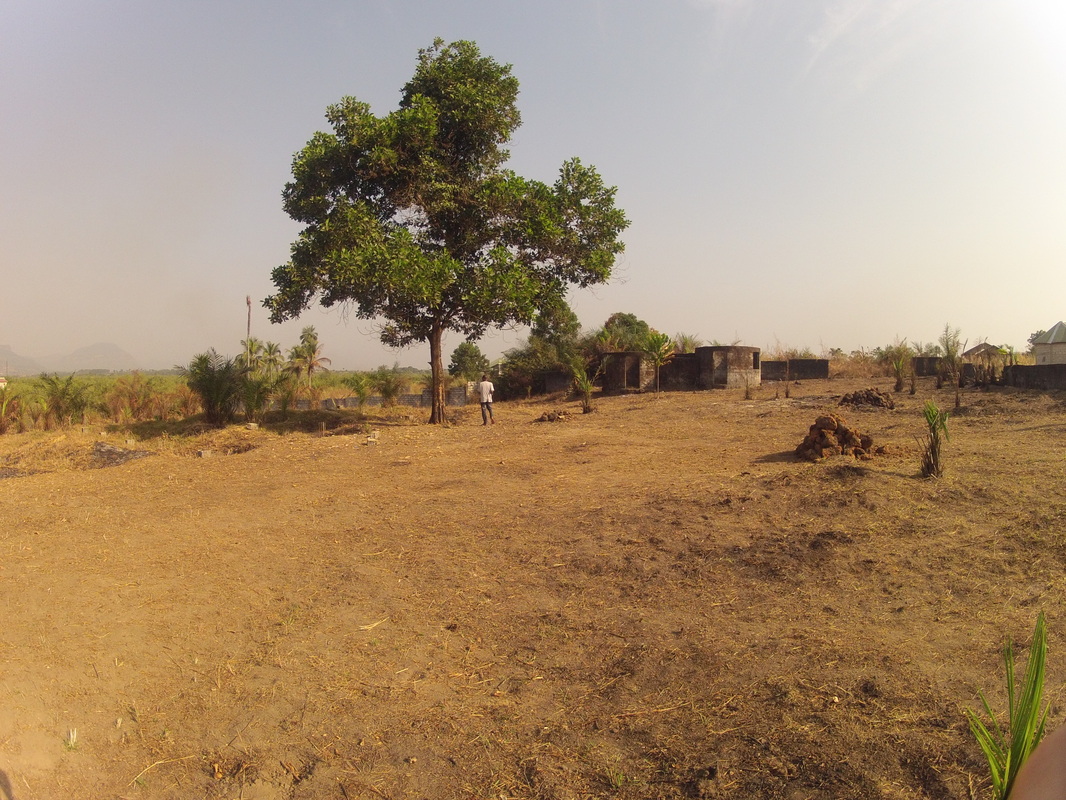
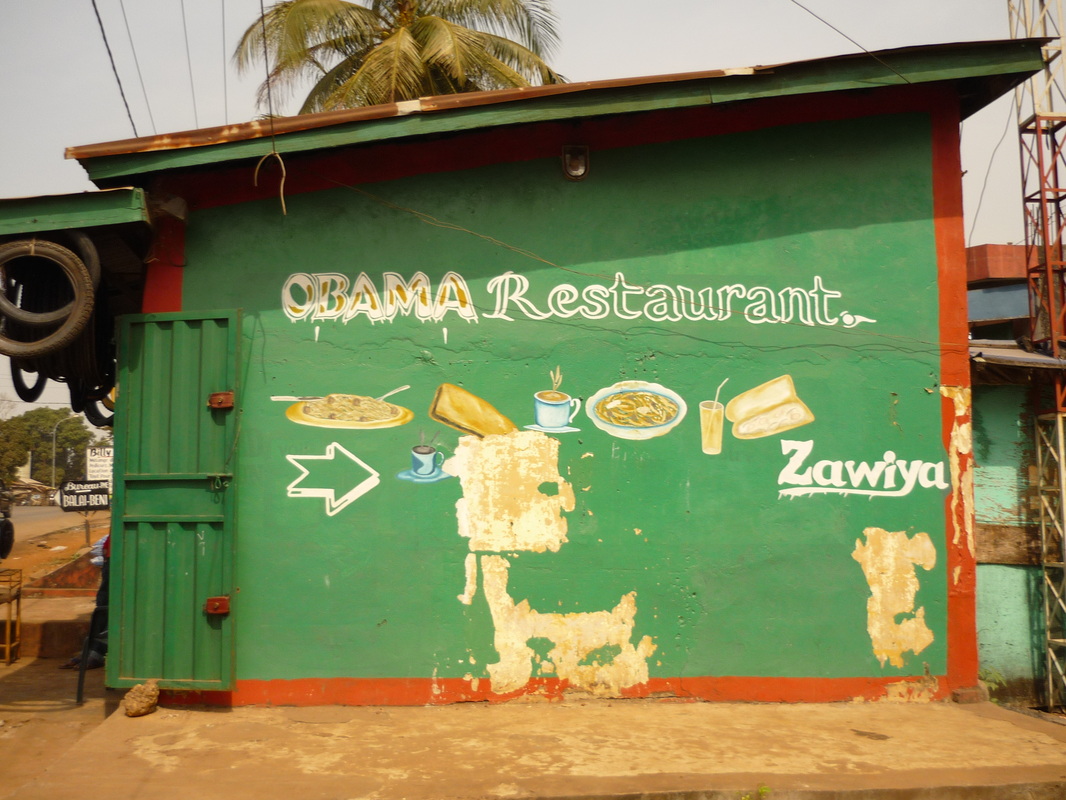
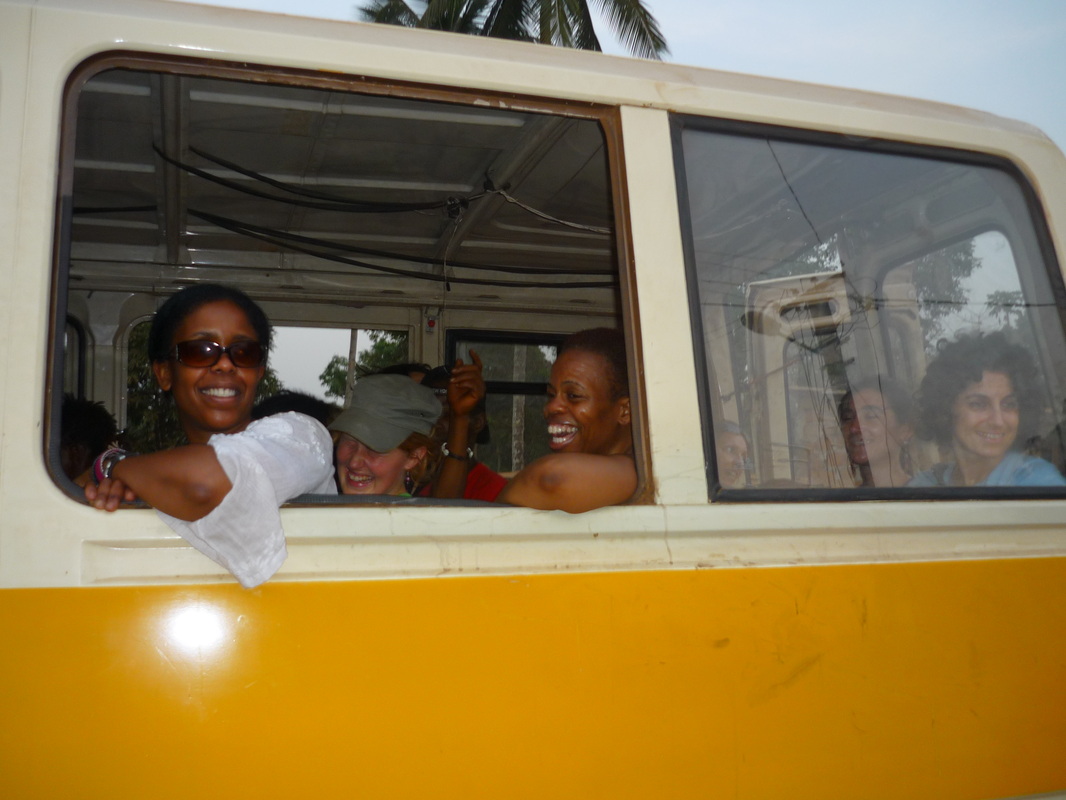
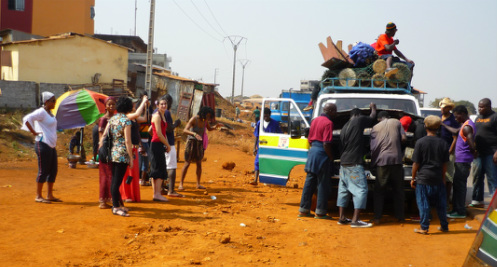
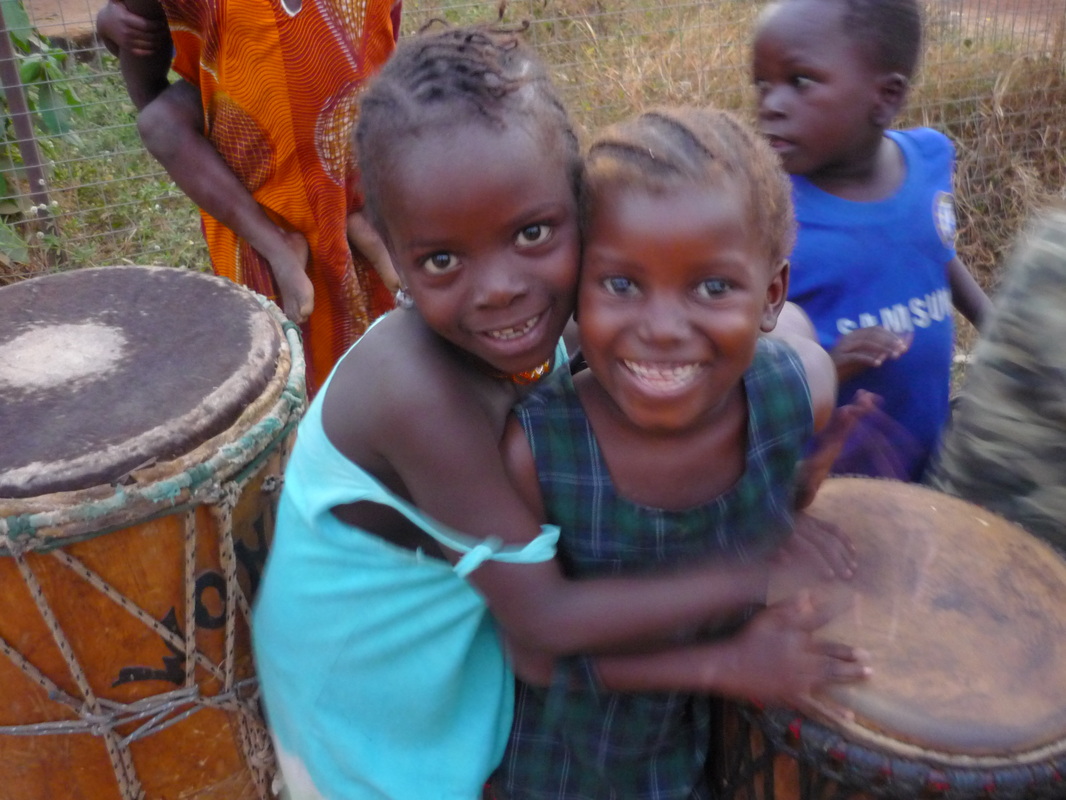
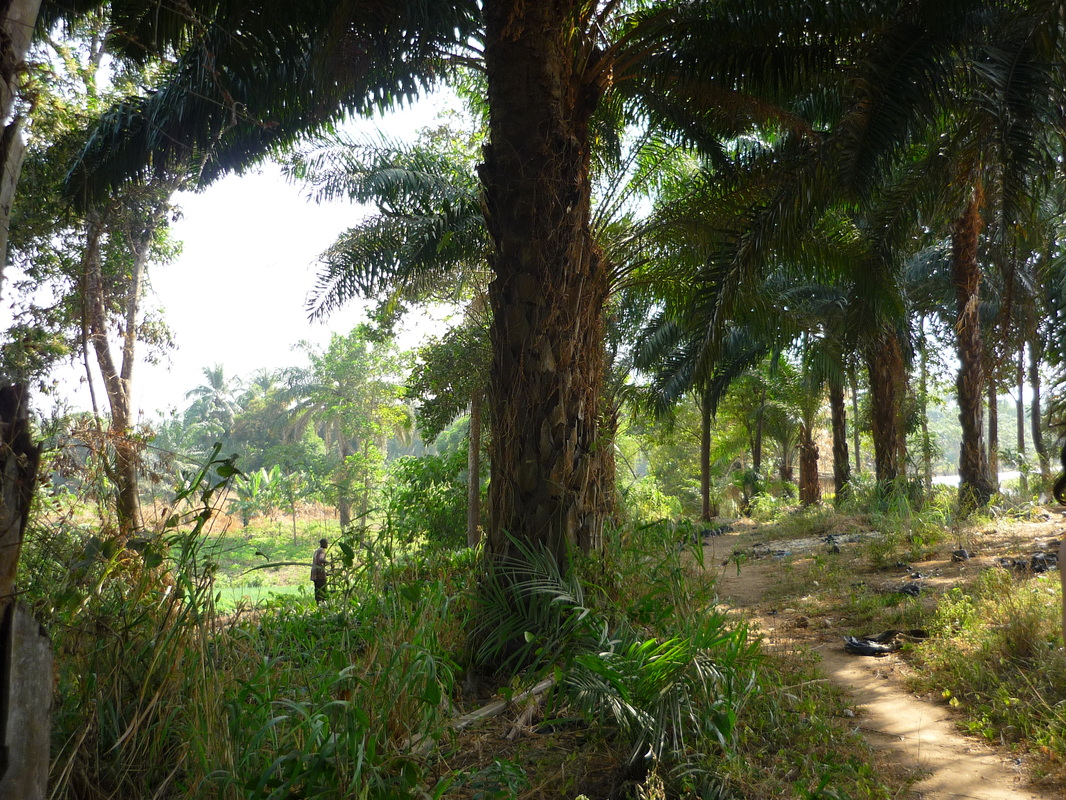
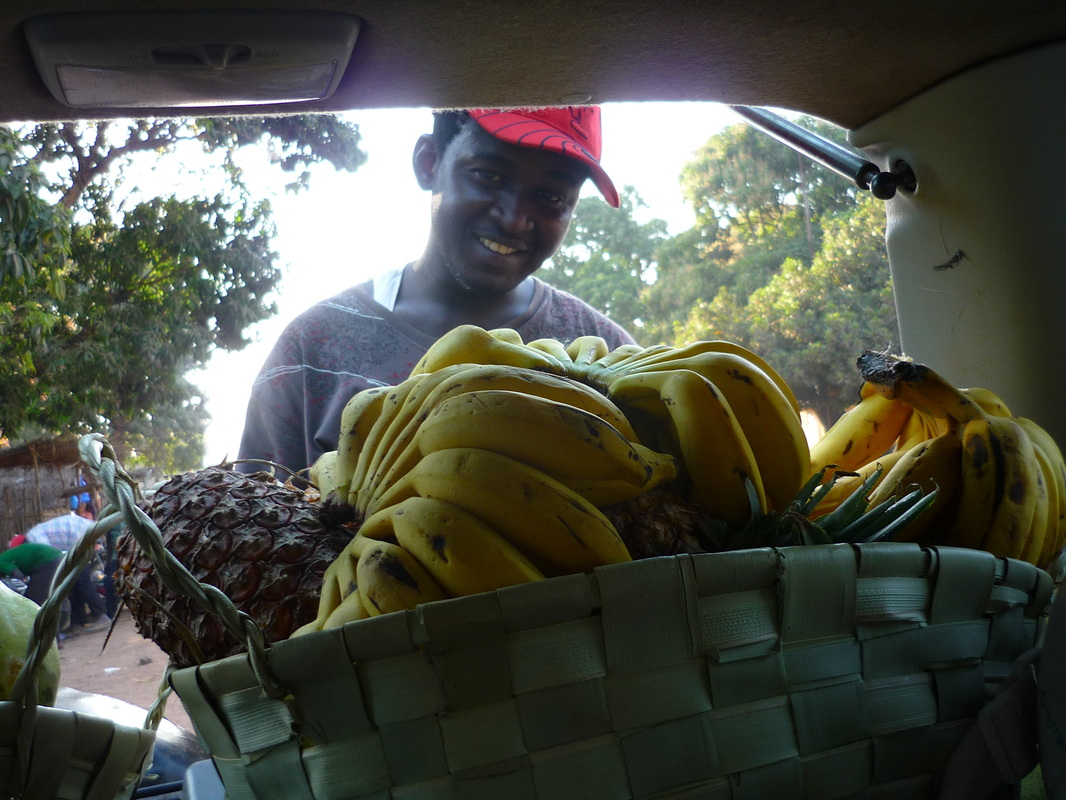
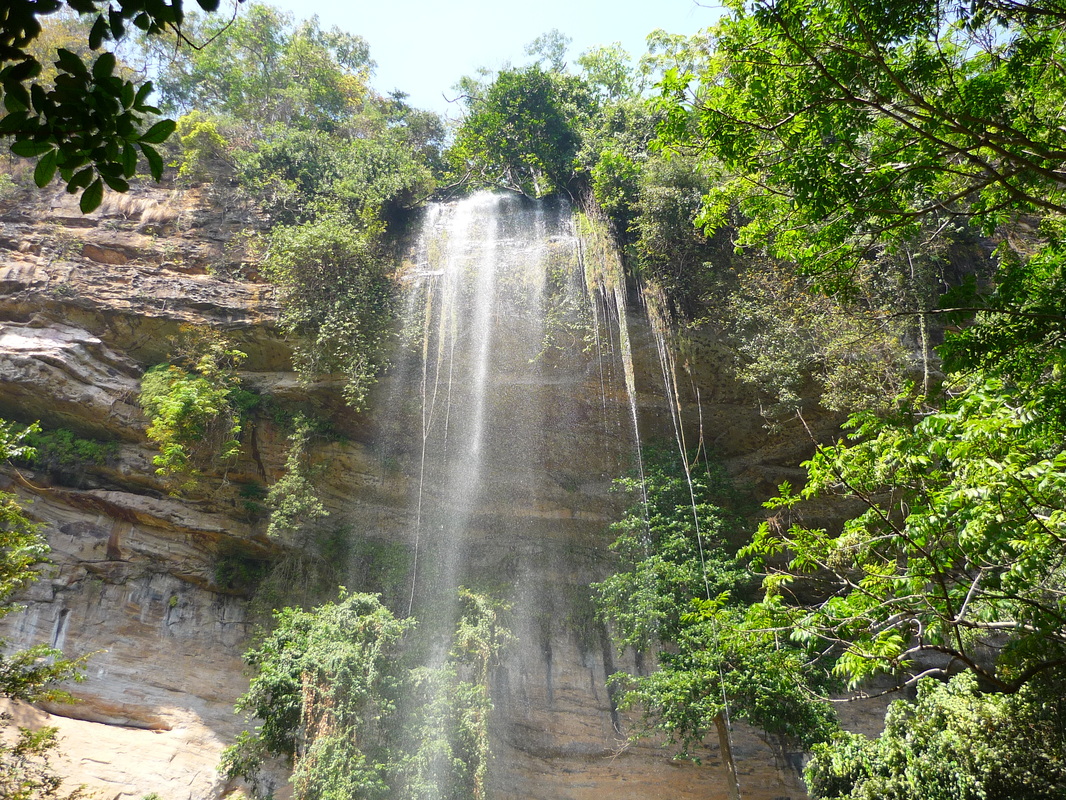
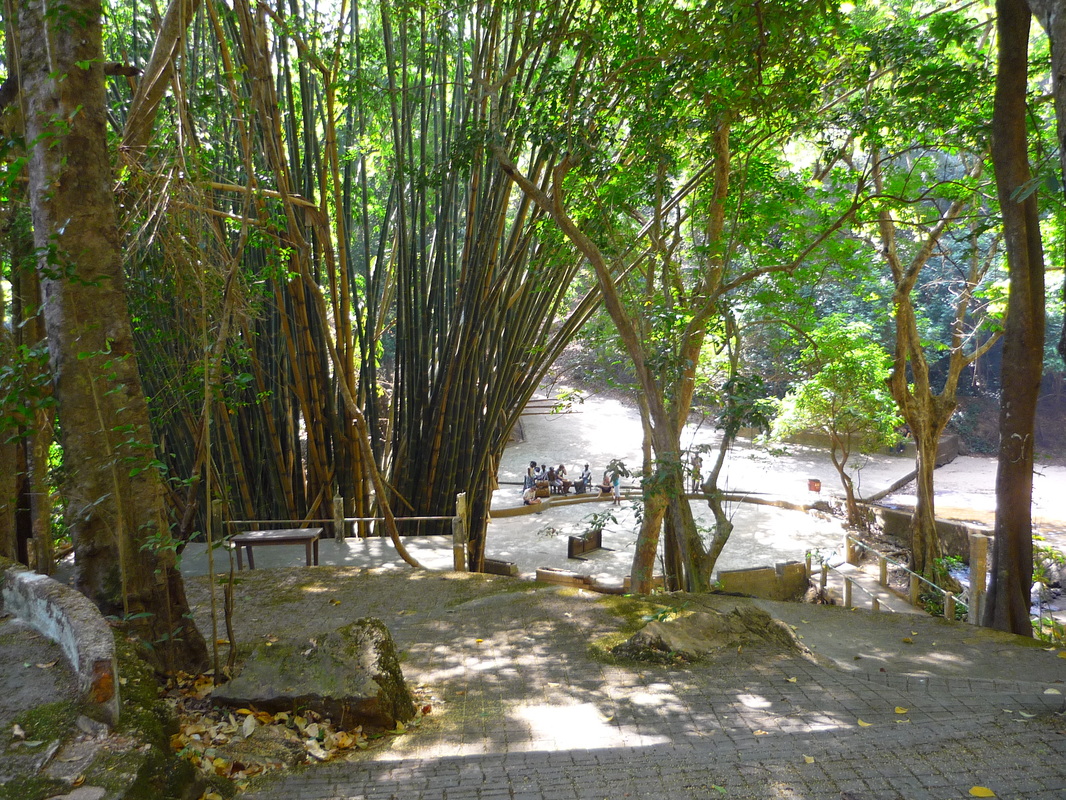
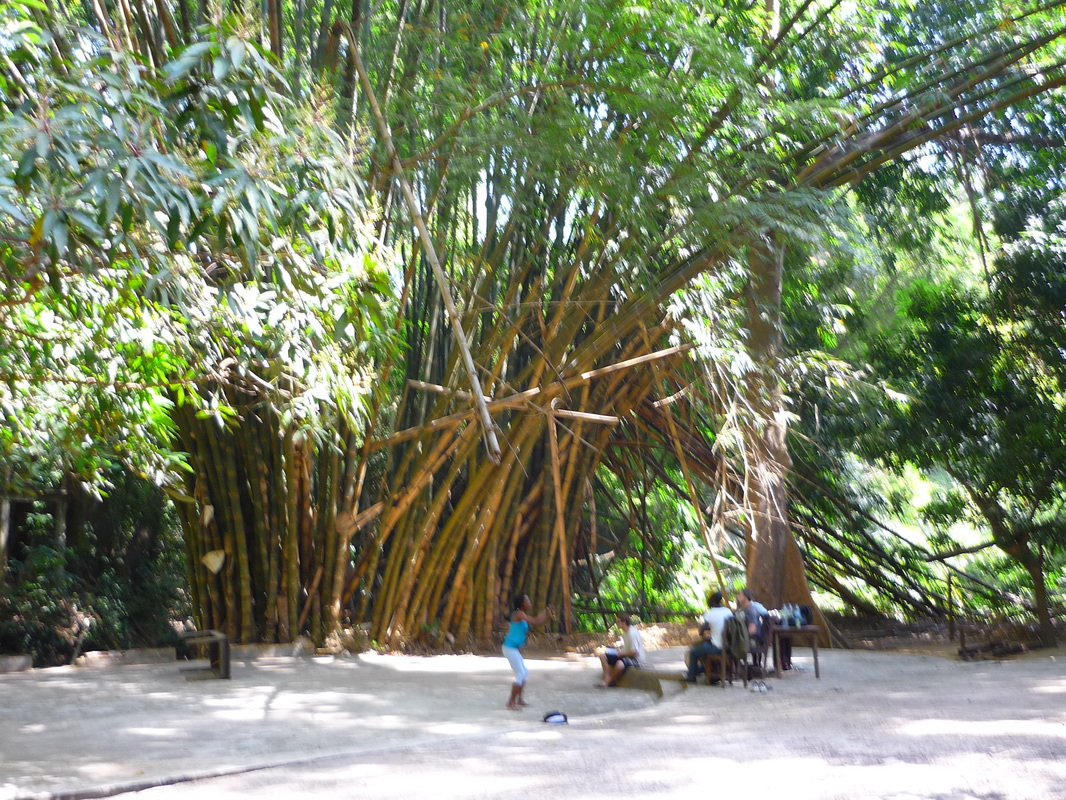
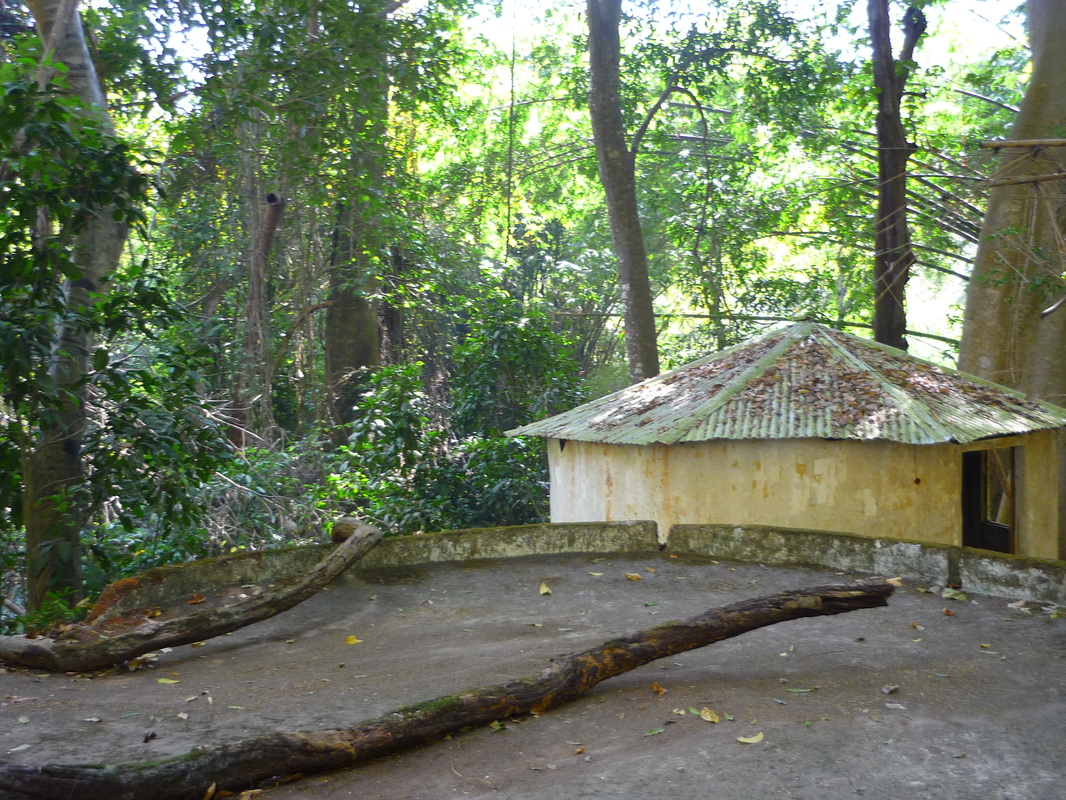
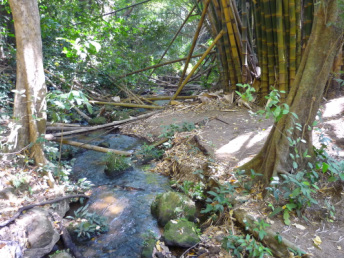
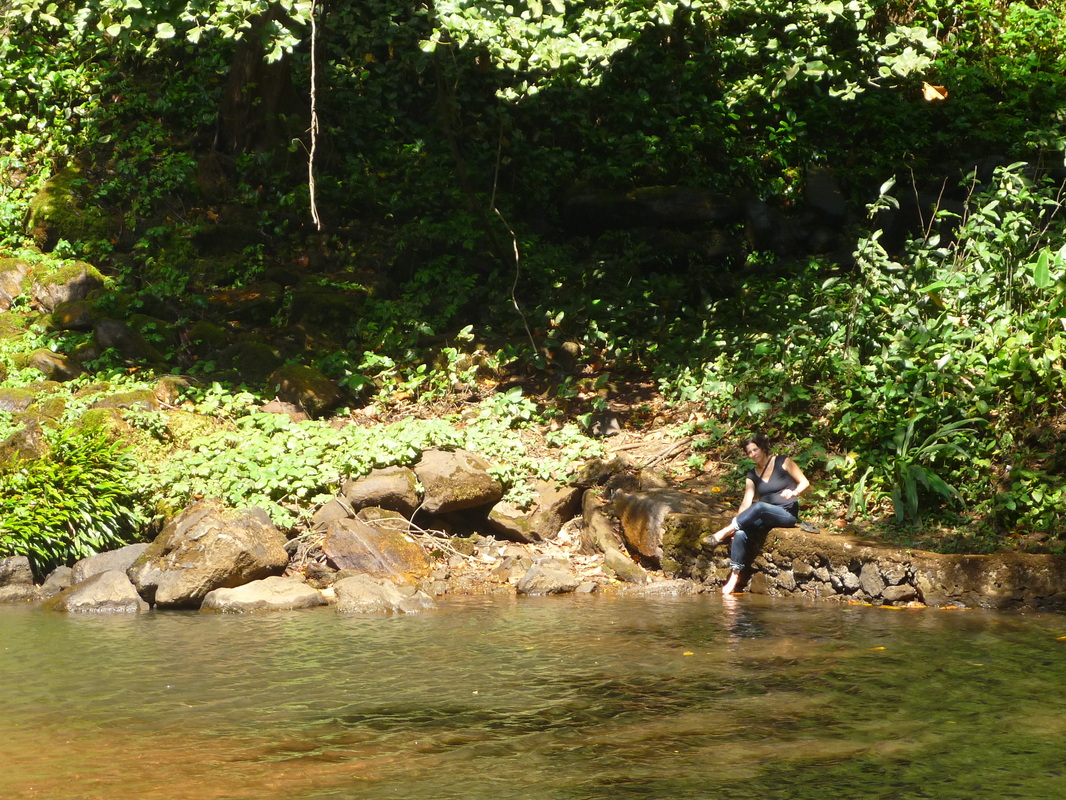
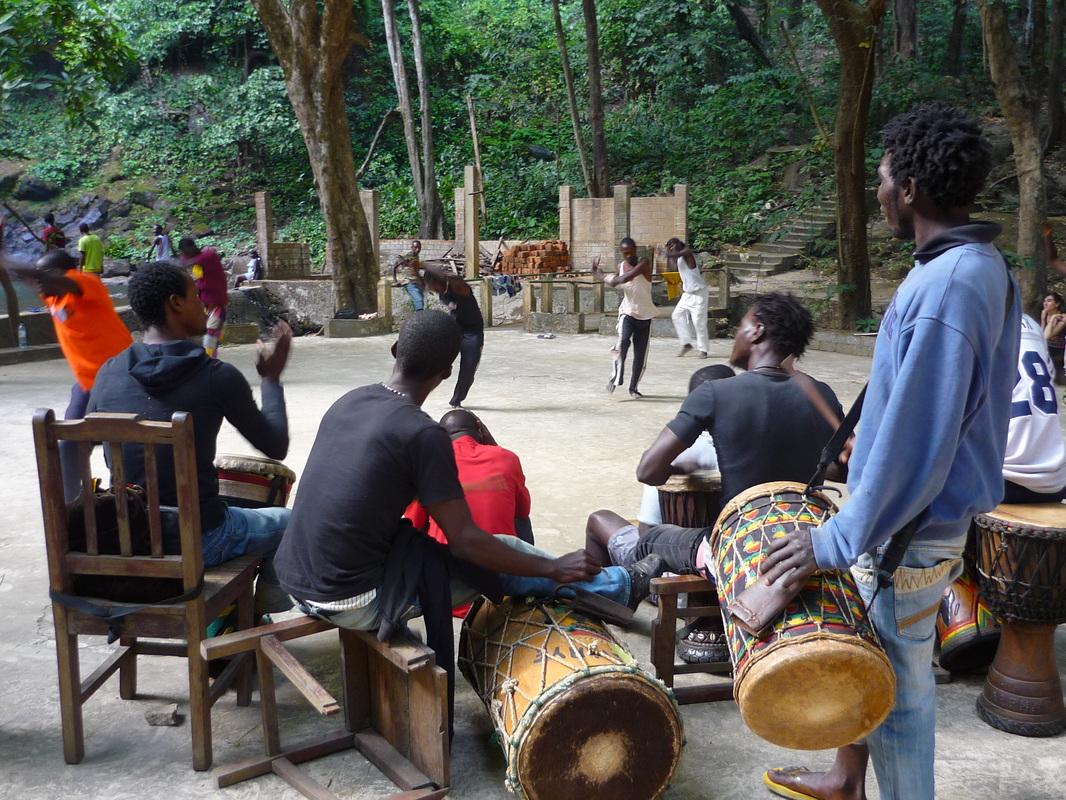
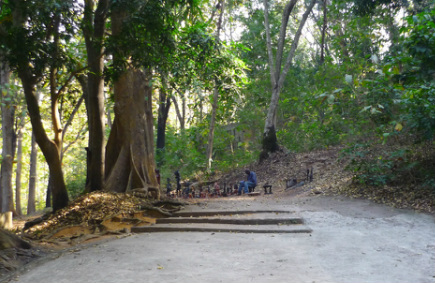
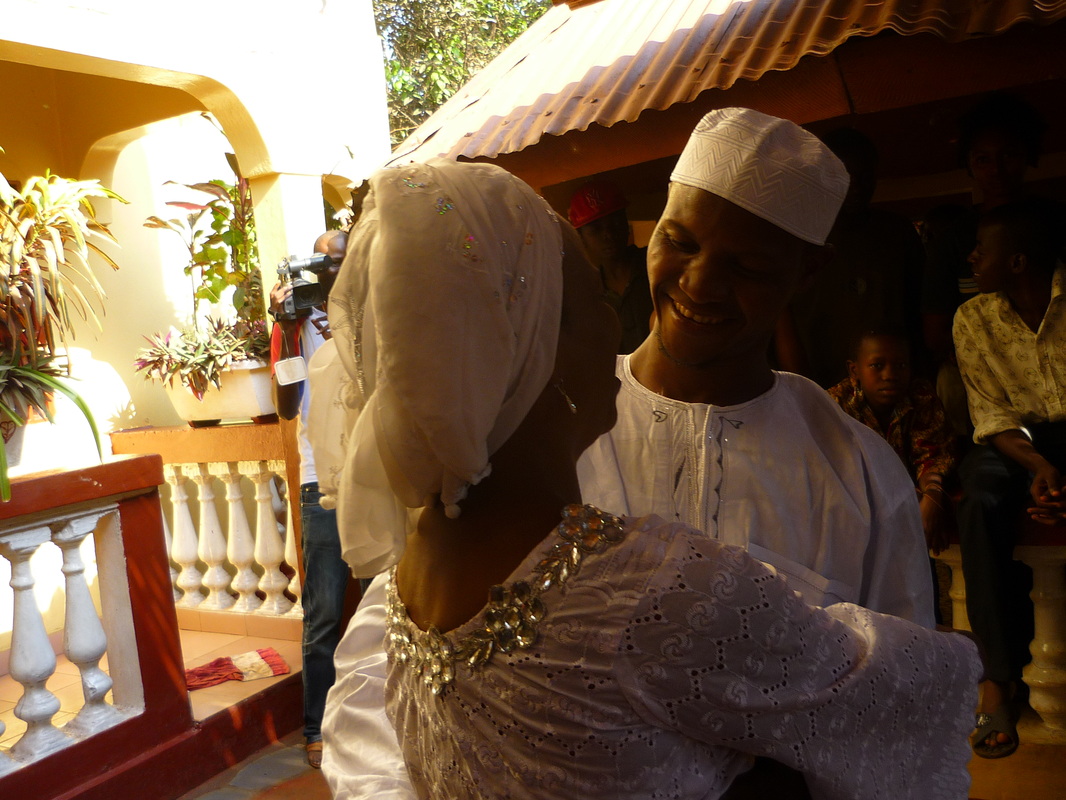
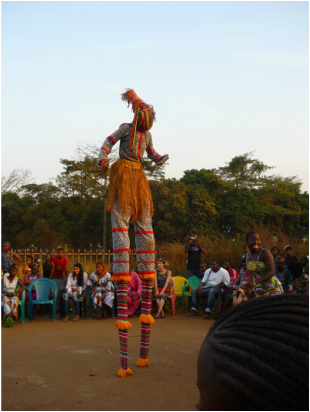

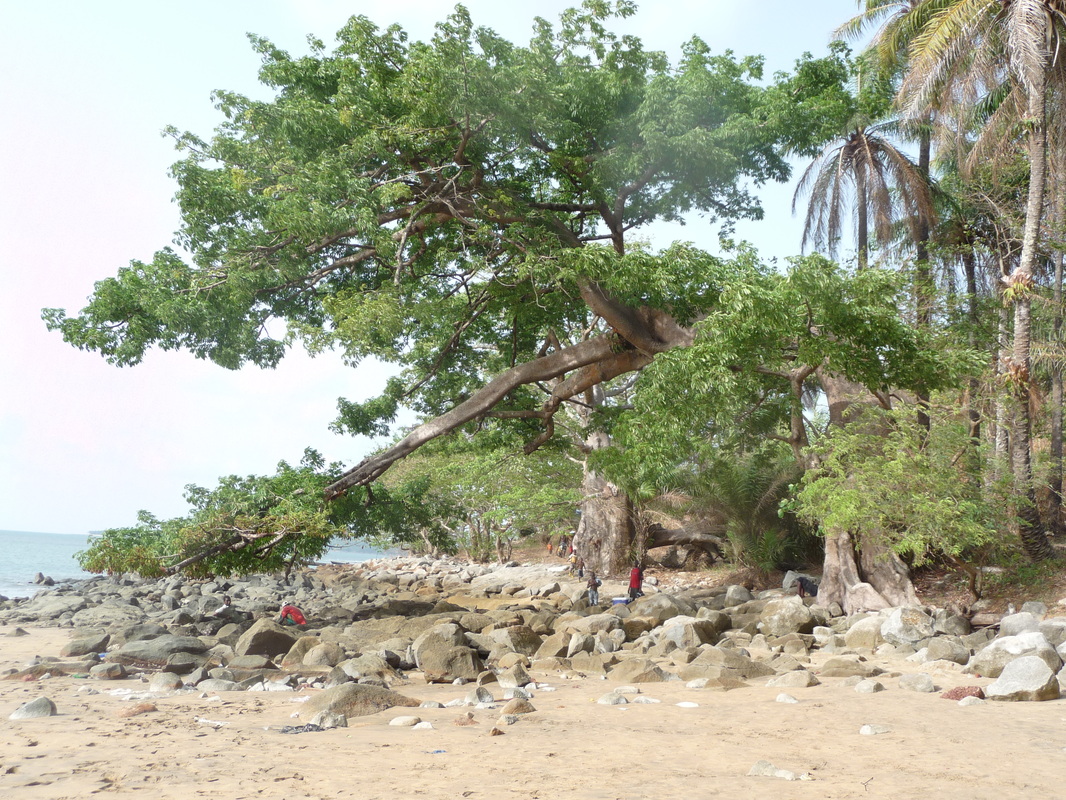
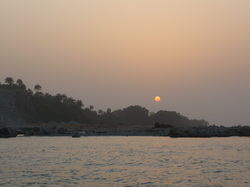
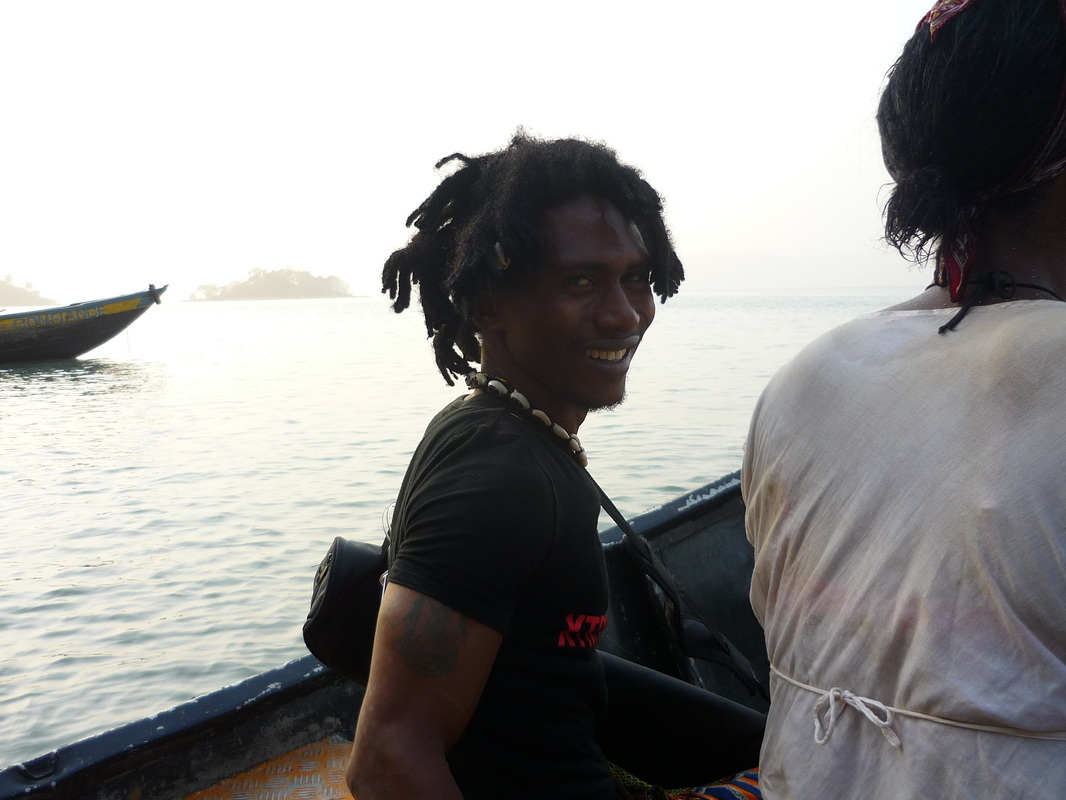
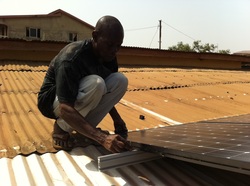
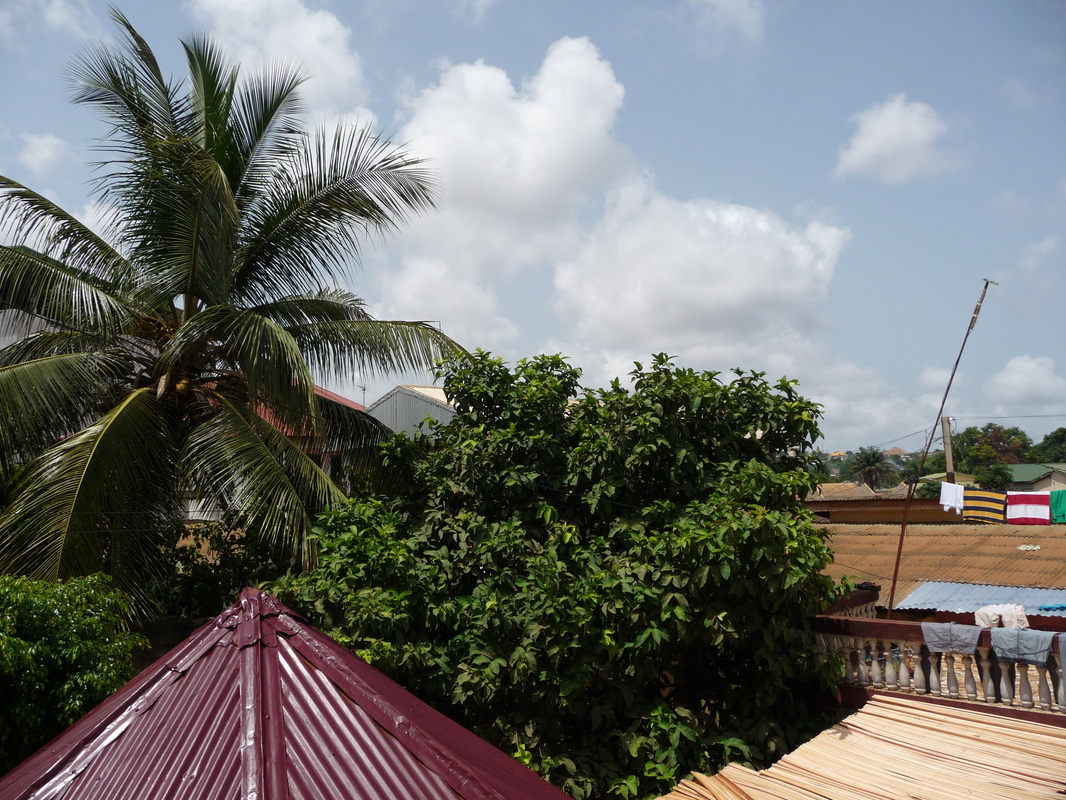
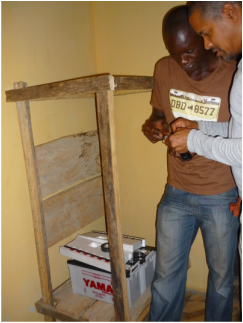
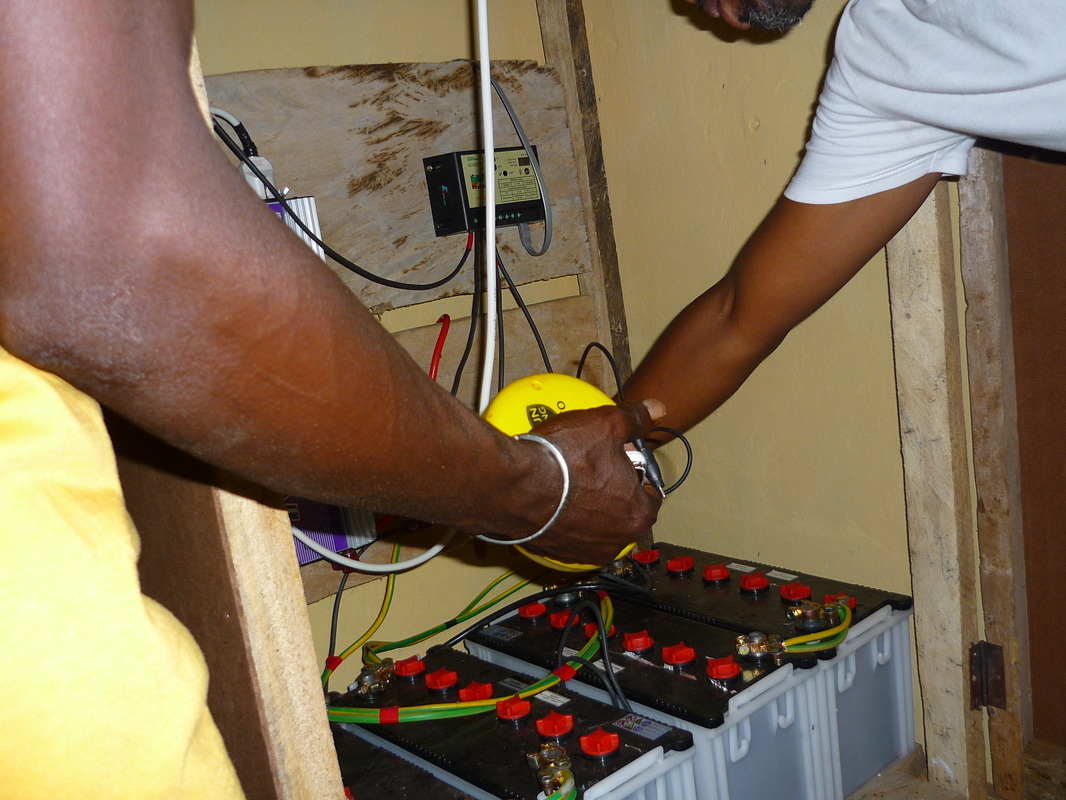
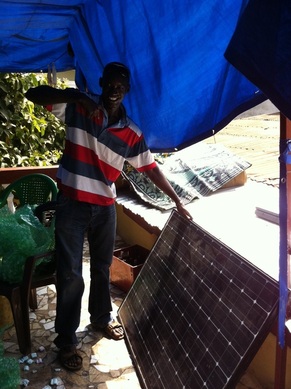
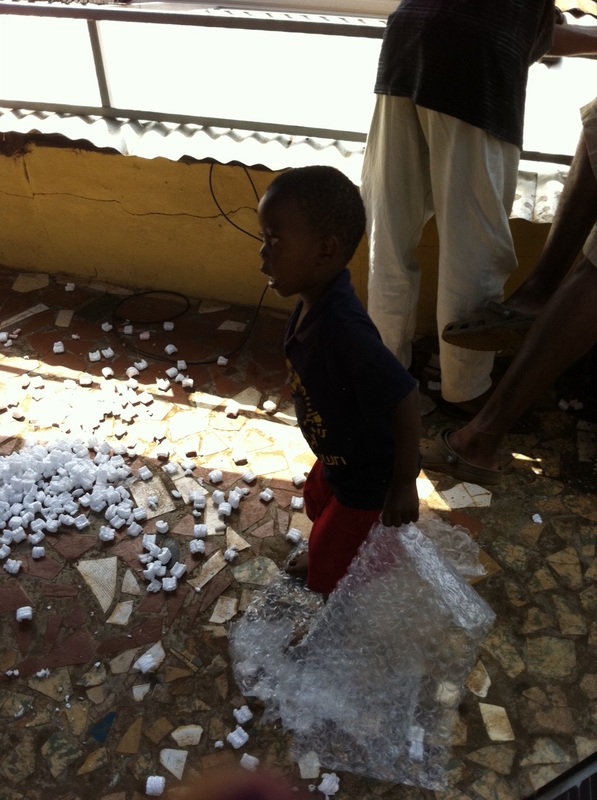
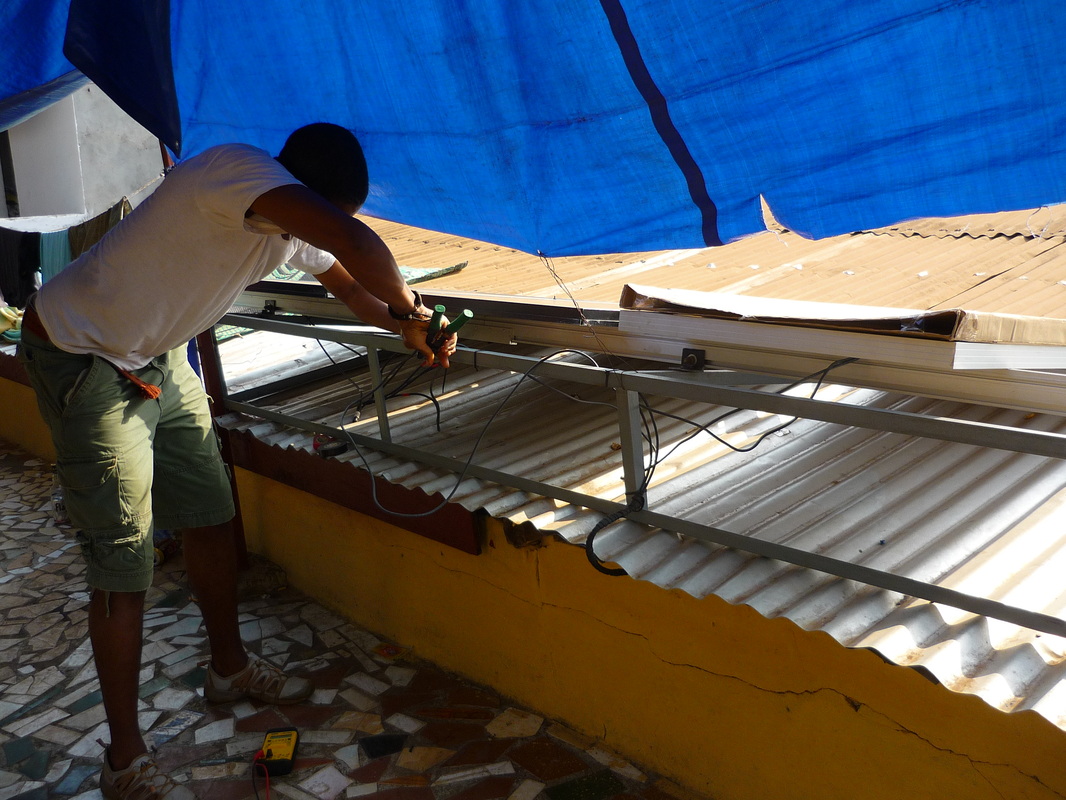
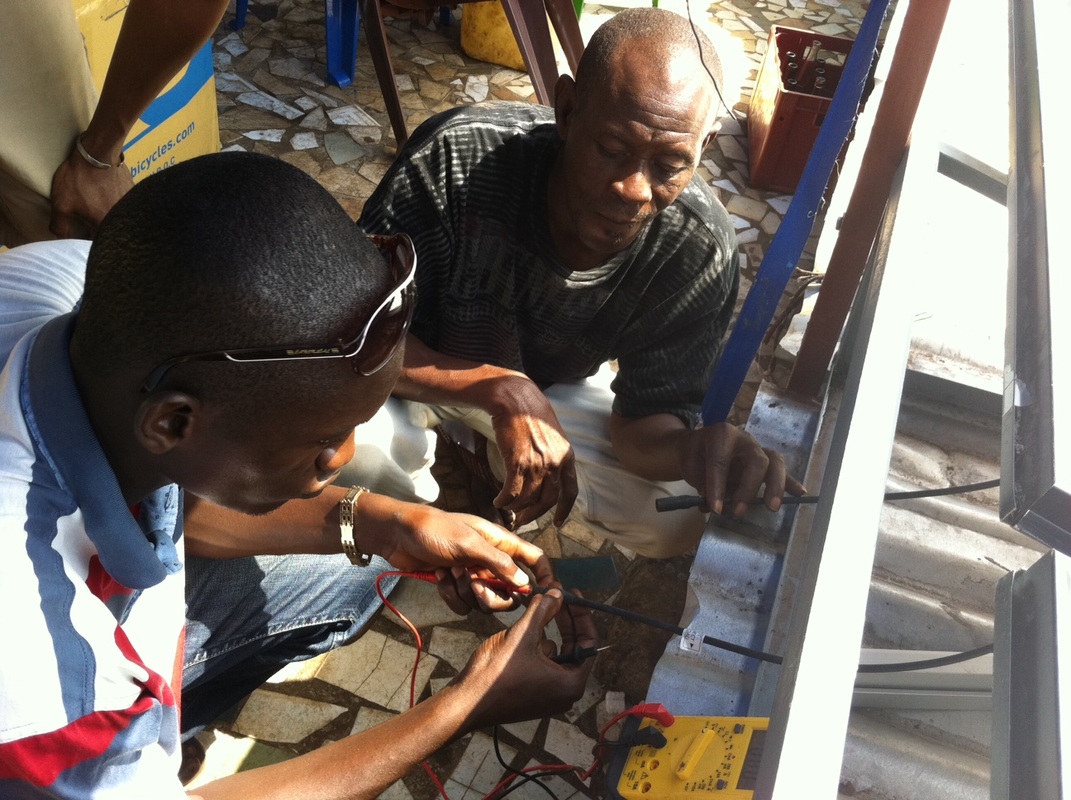
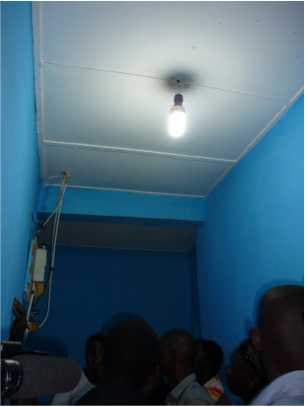
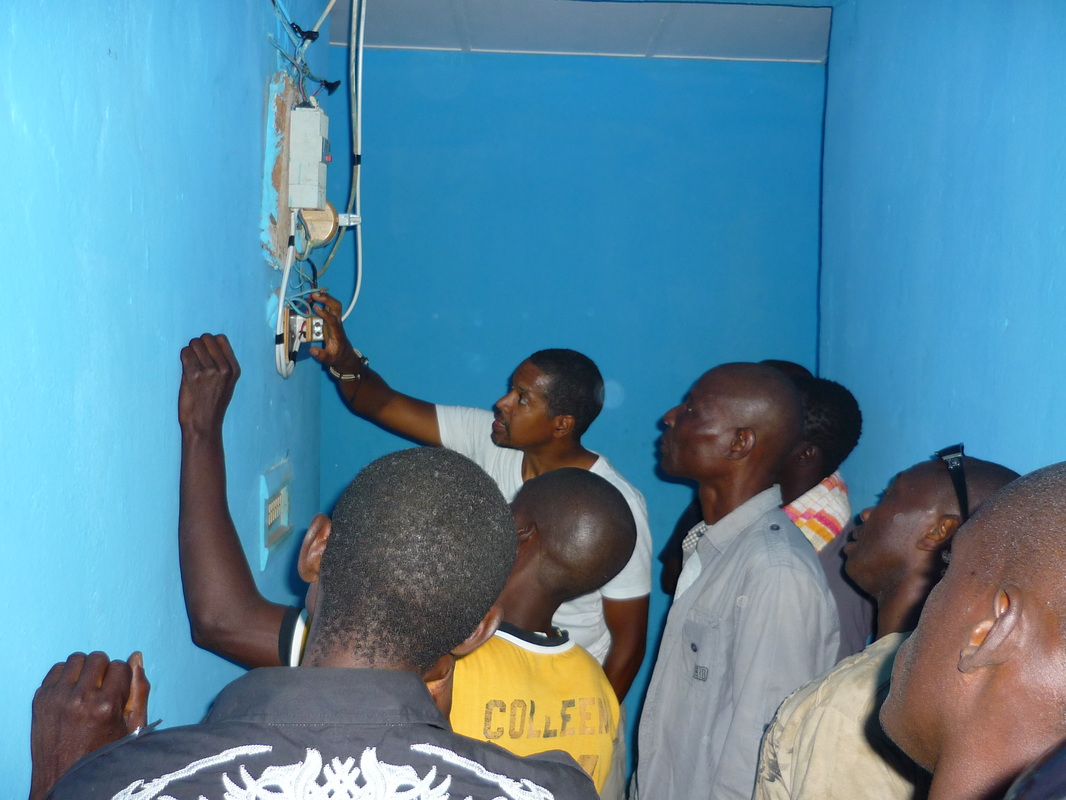
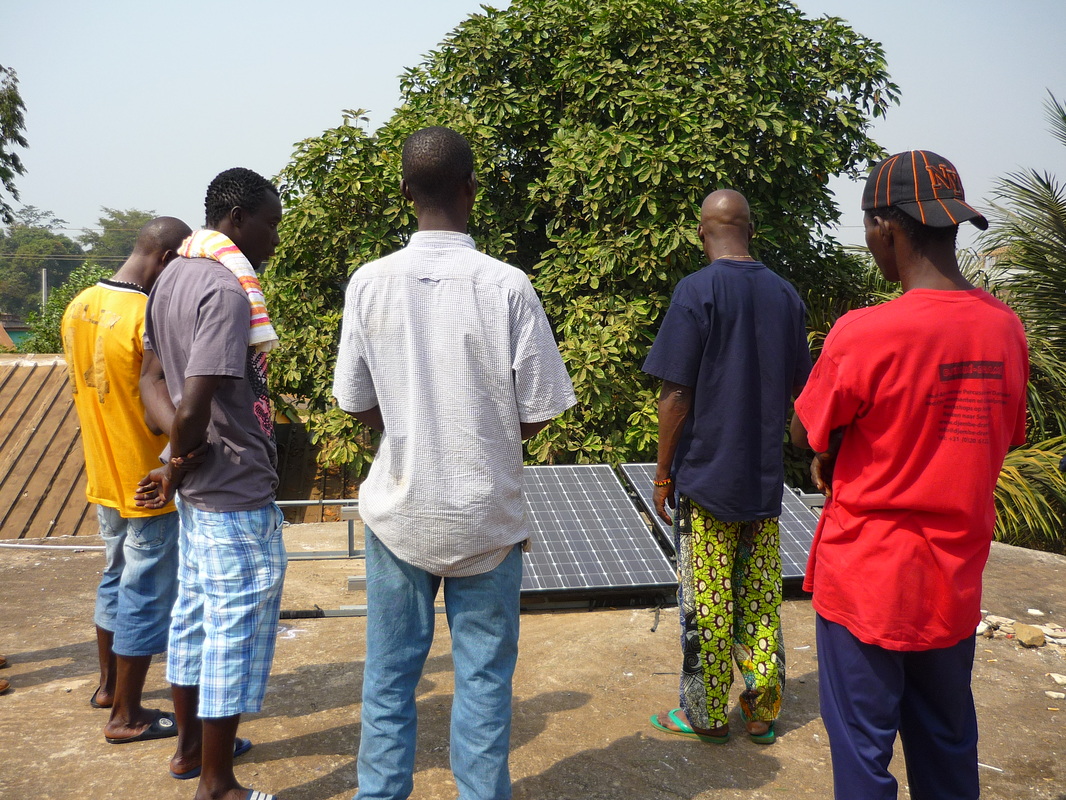
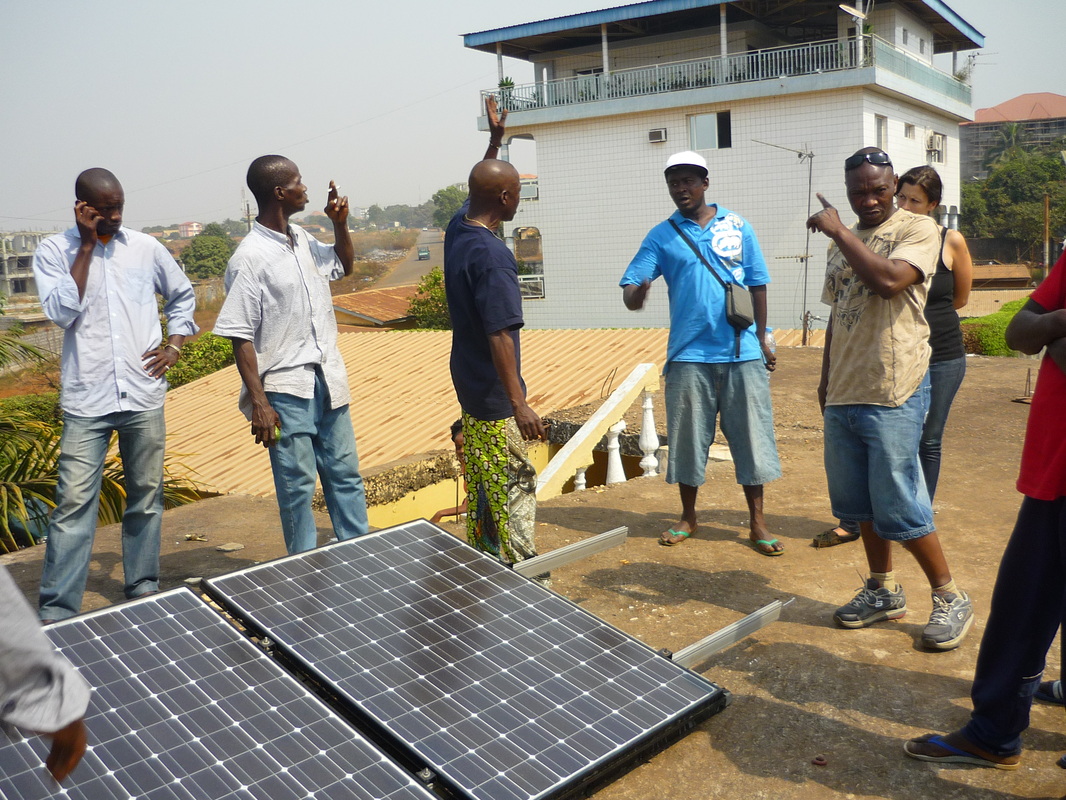
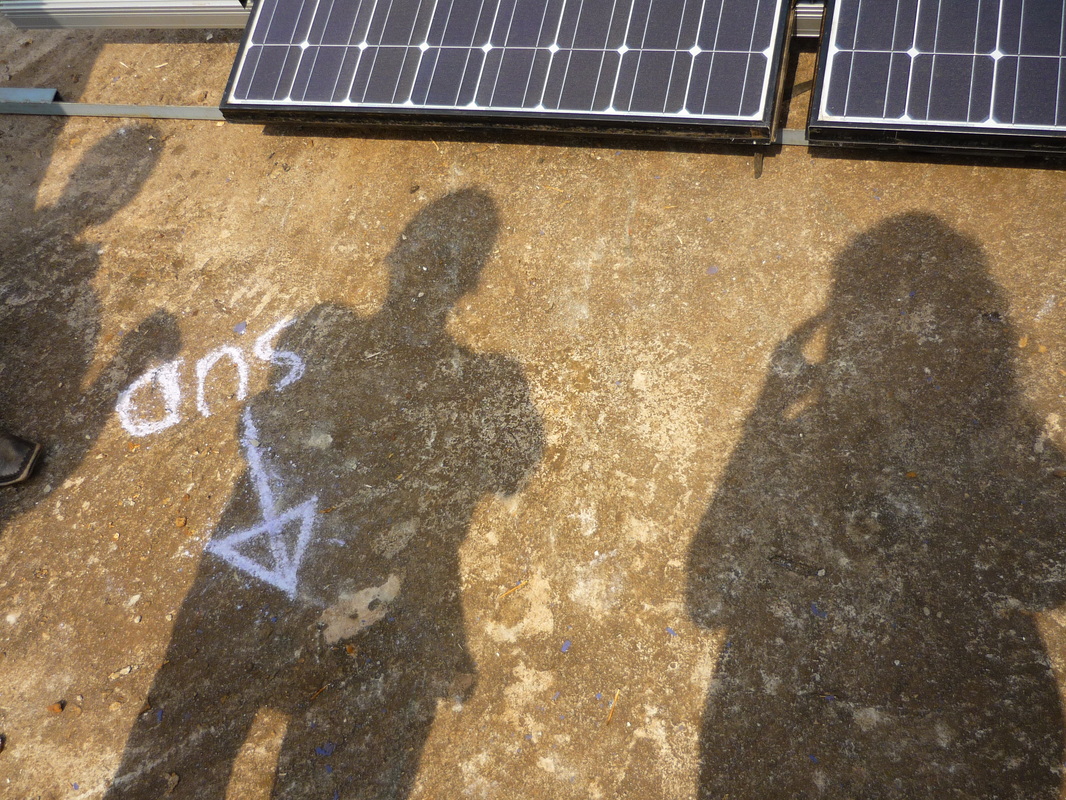
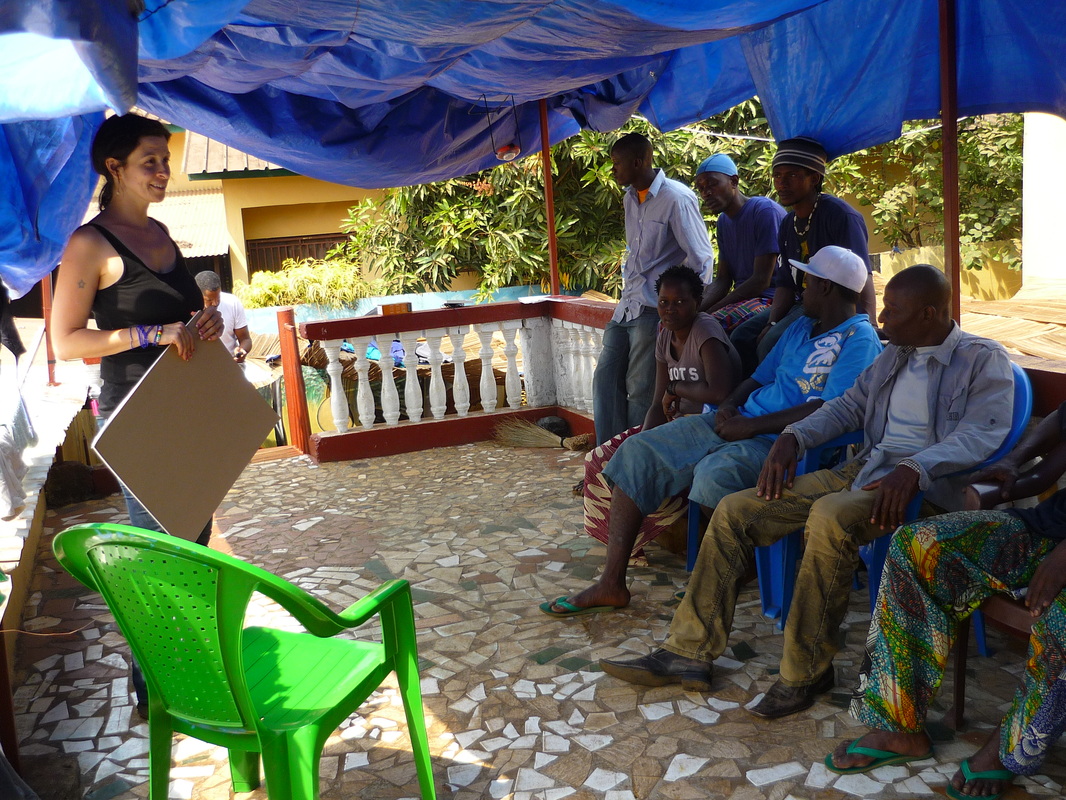
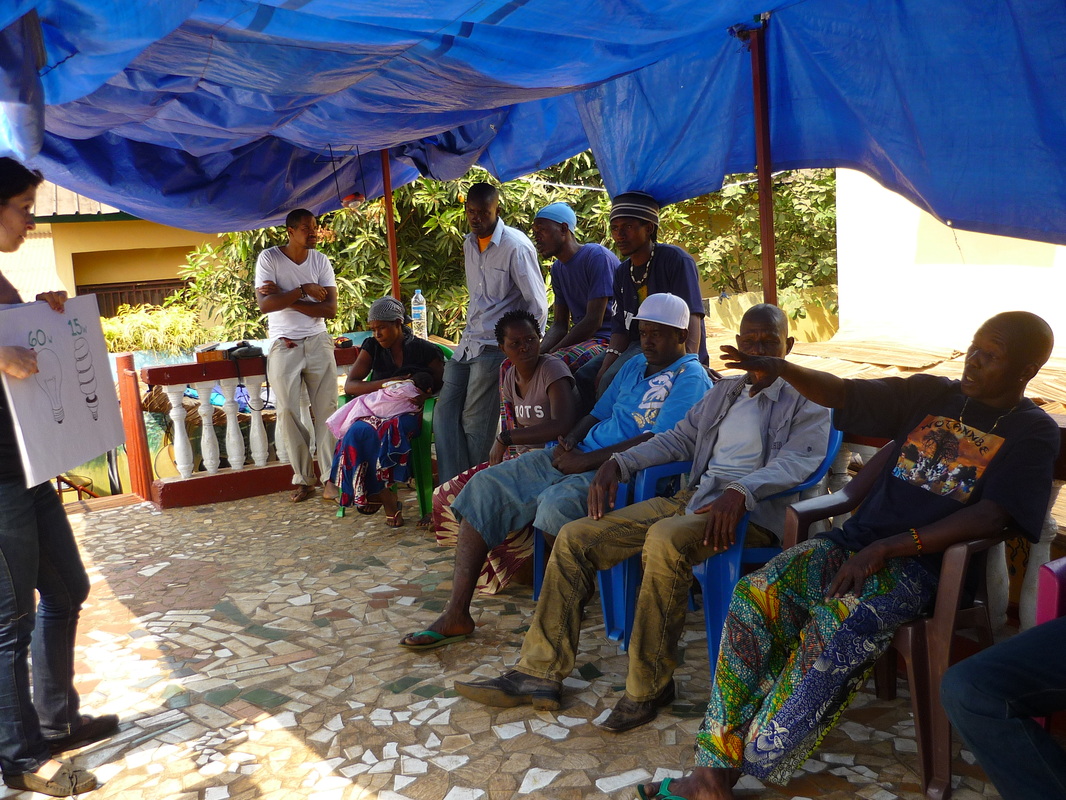
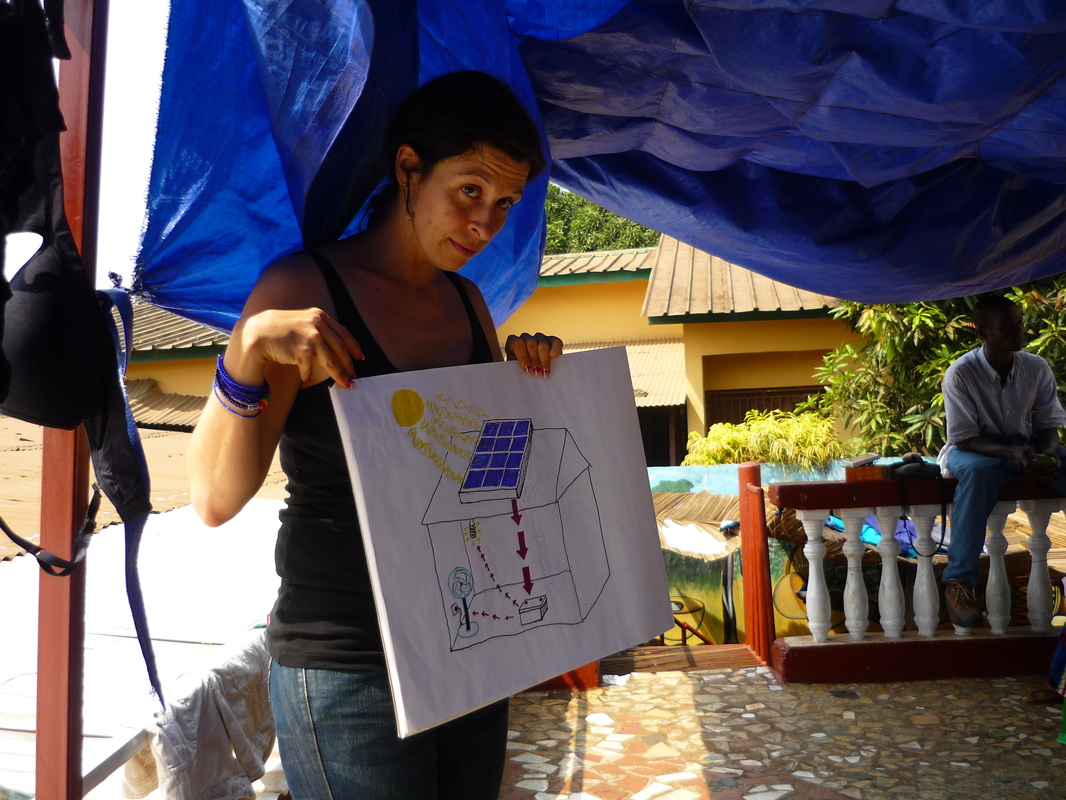
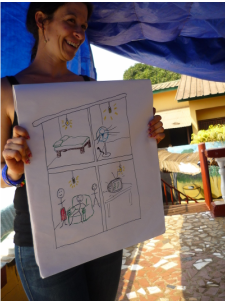
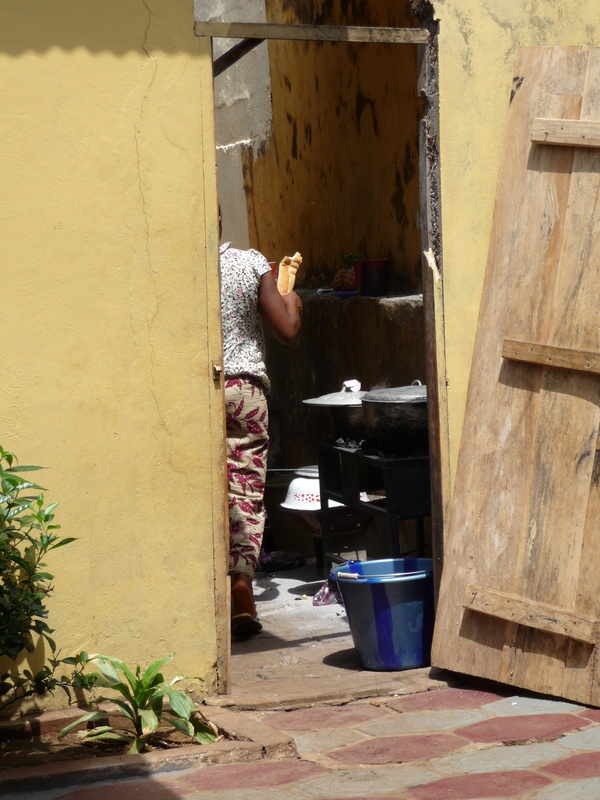
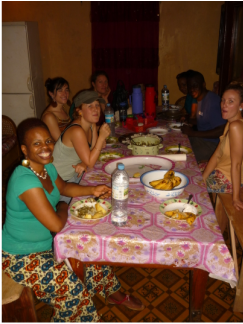
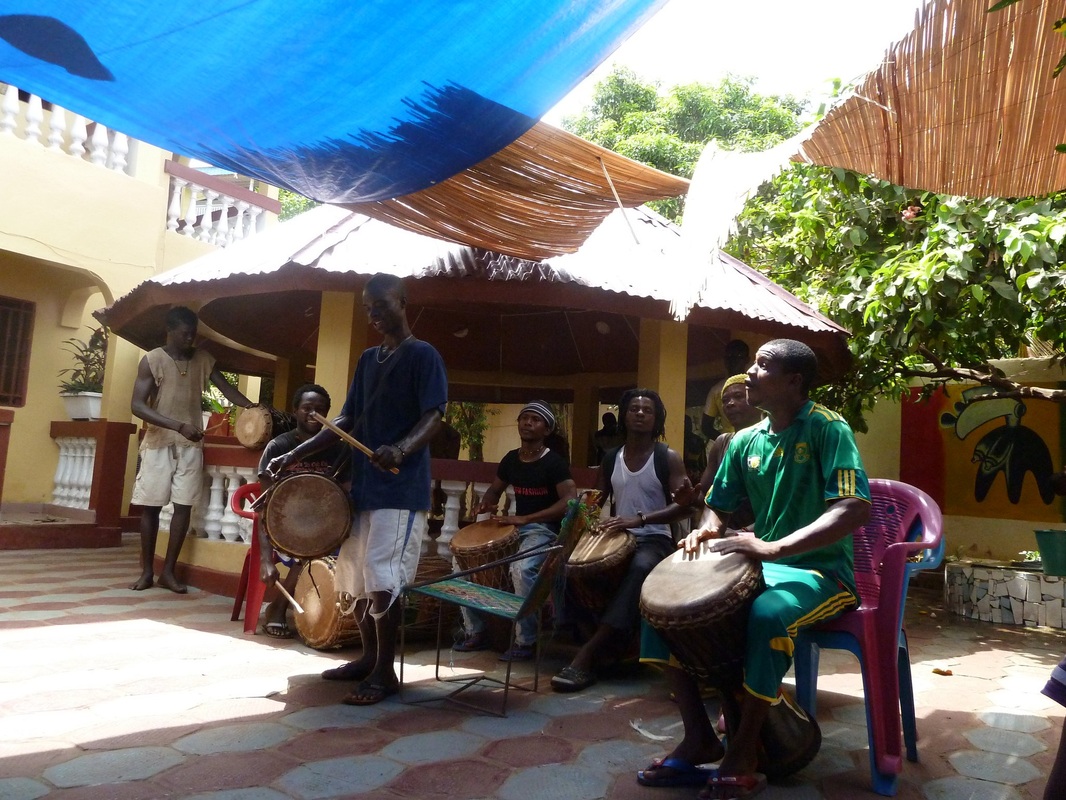
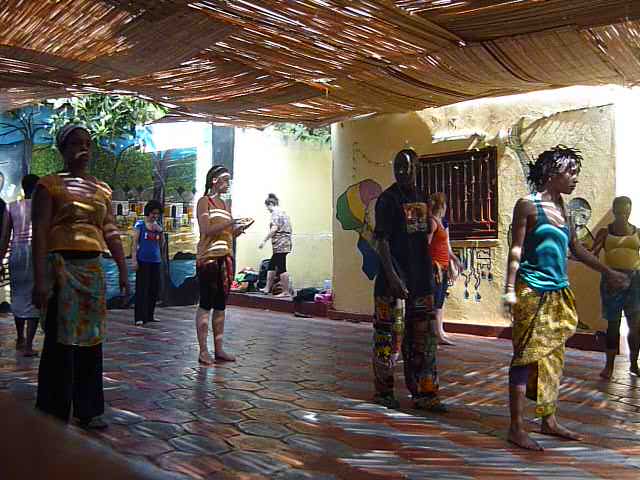
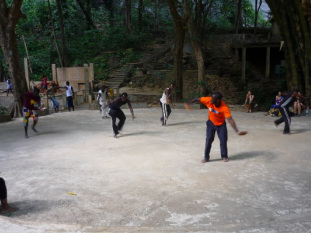
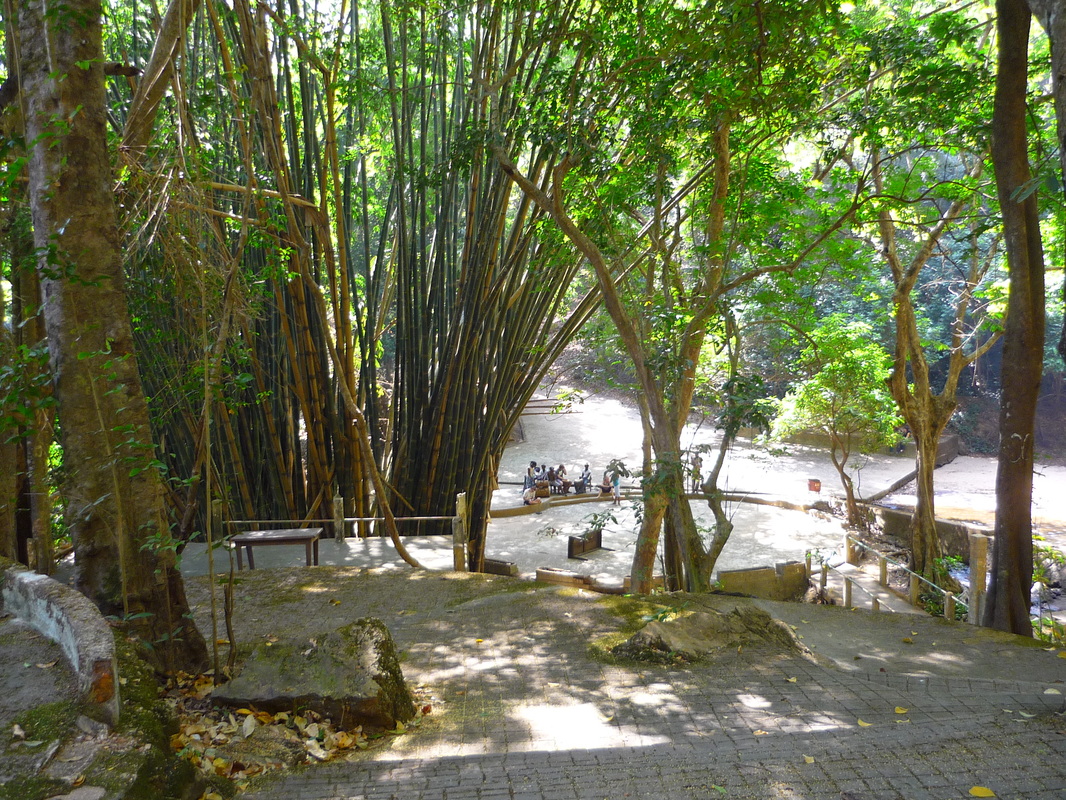
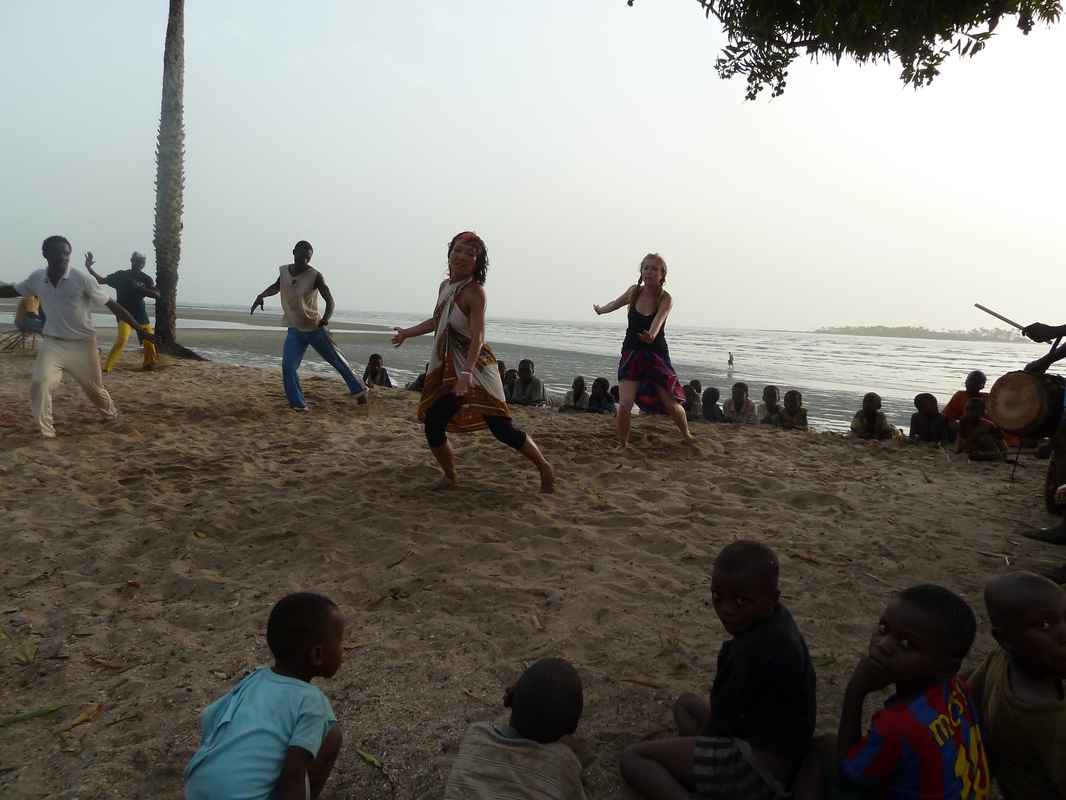
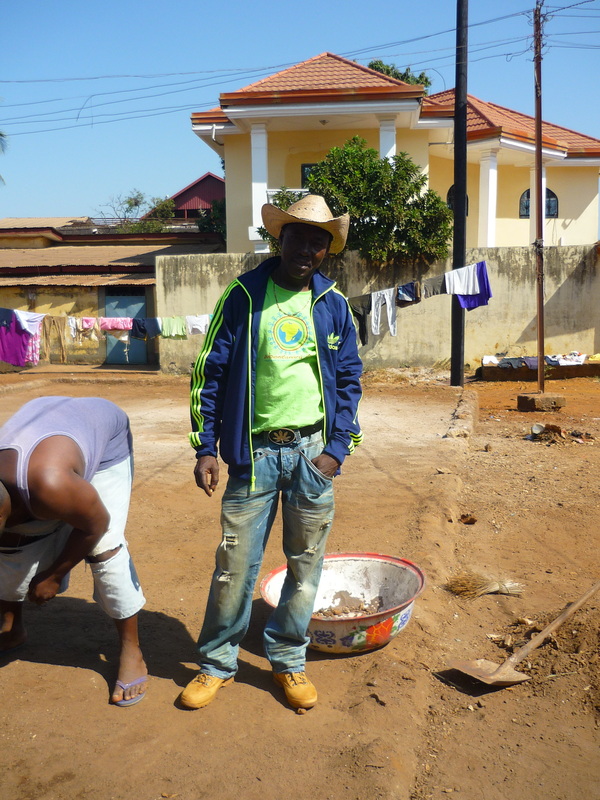
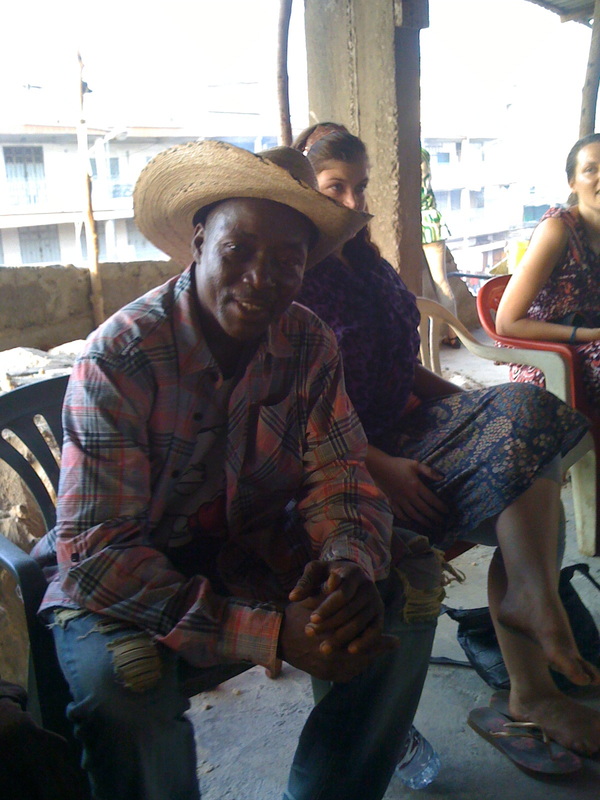
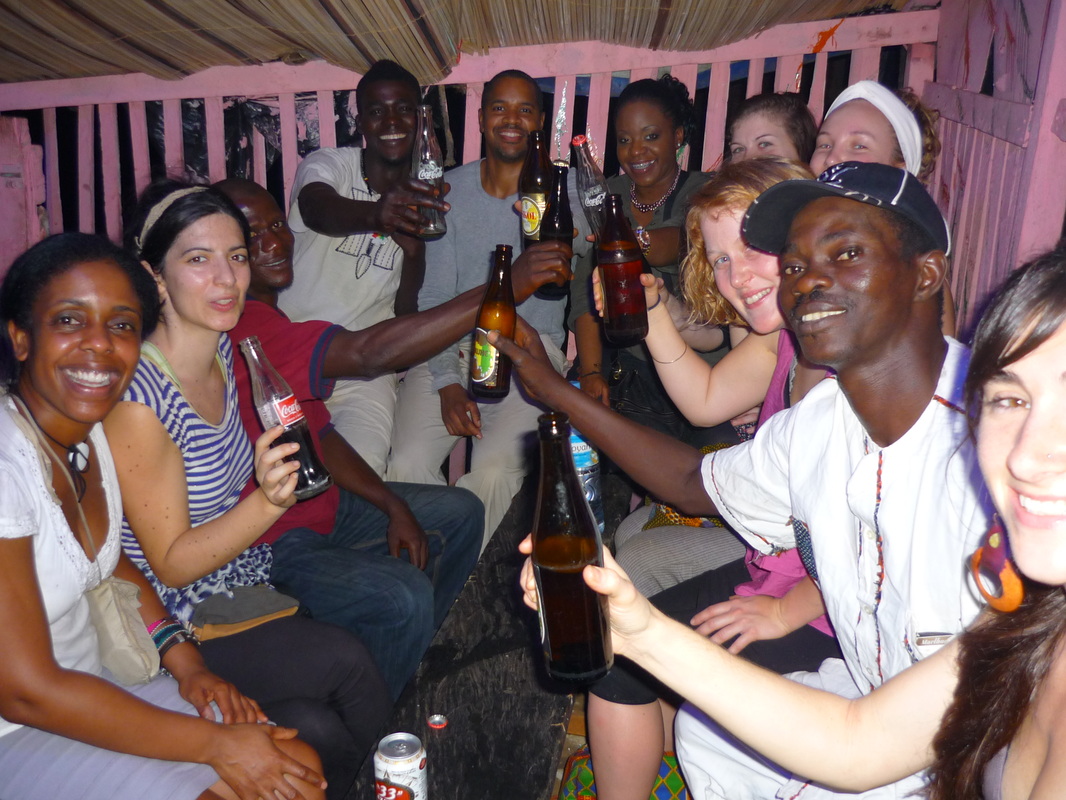
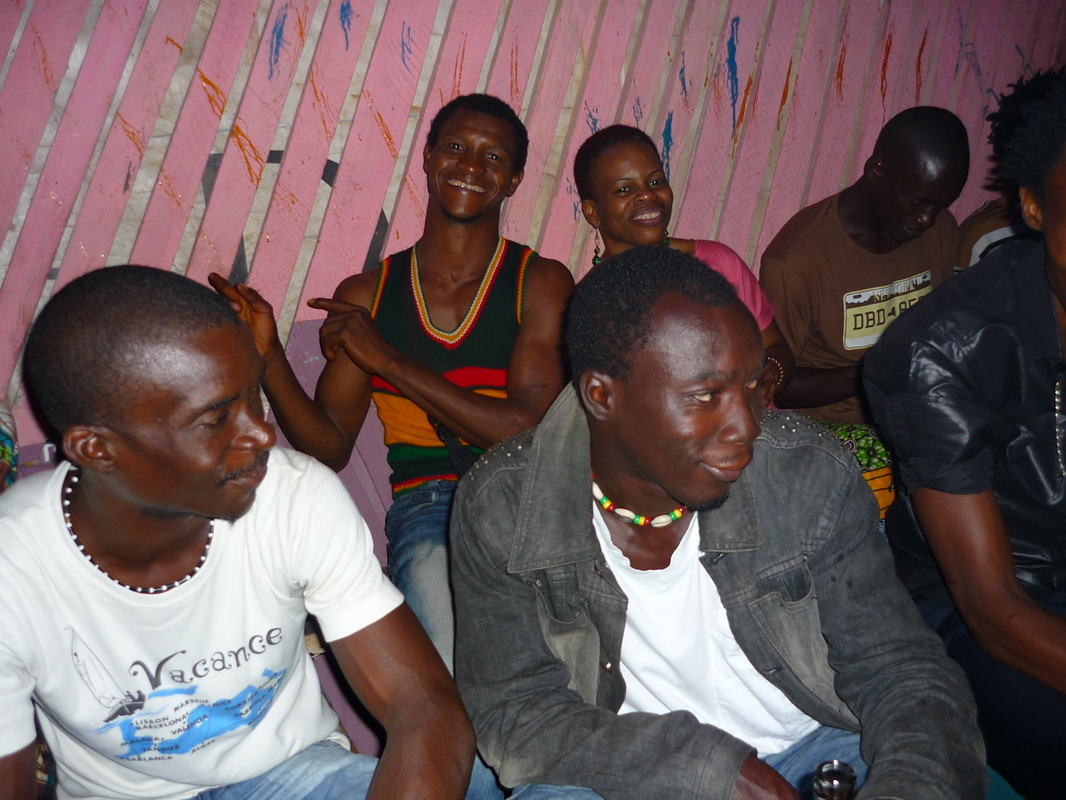
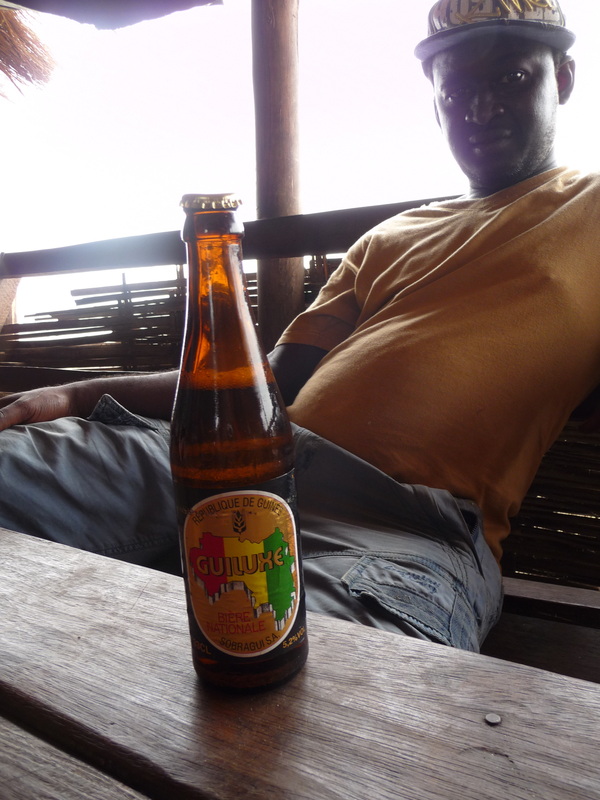
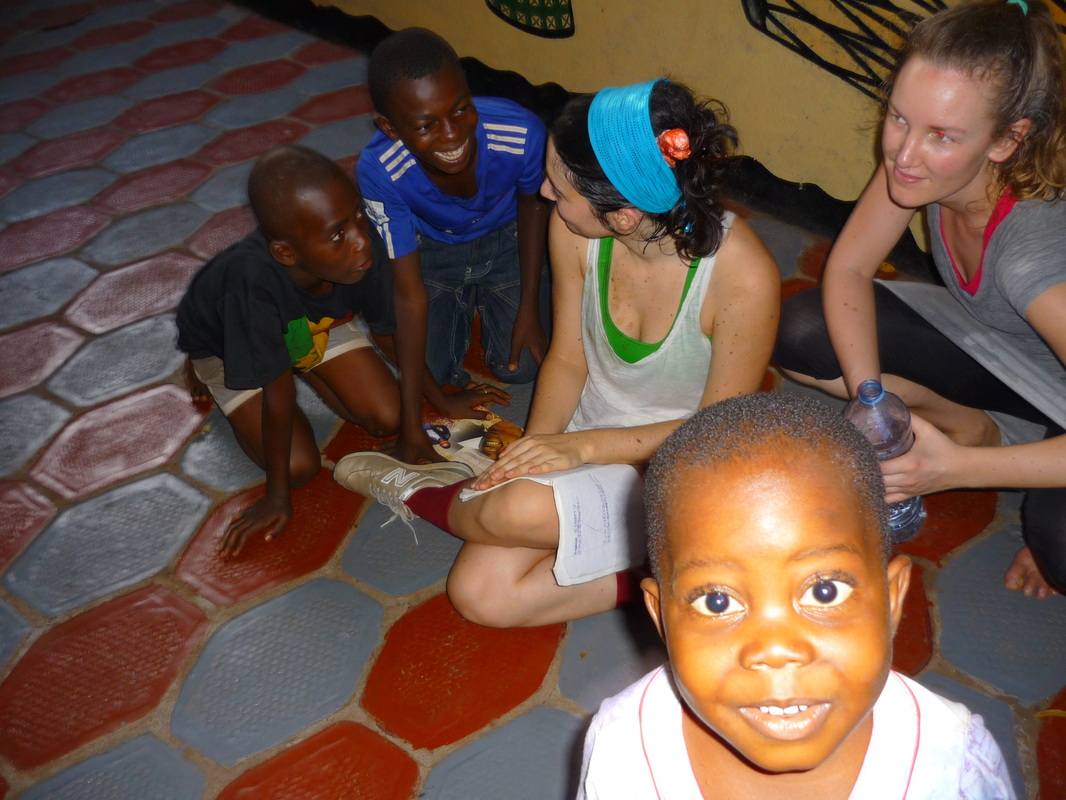
 RSS Feed
RSS Feed